Since our last ocean rowing roundup, the World’s Toughest Row has crowned its winner, one crew has started an Arctic row, and everyone else is still battling across the world’s oceans.
Pacific Ocean
World's Toughest Row: This year, four teams entered the World's Toughest Row, a 4,500km race across the mid-Pacific from Monterey, California, to Hanalei Bay, Hawaii. Teams set off on June 6, and two crews have crossed the finish line so far. After tricky conditions at the start of the race, and the expected issues with seasickness and fatigue, the four crews have settled into their rows.
After the first 10 days, the crews began to move quickly west, thanks to helpful waves and wind.
Four-person crew Swiss Raw aimed to set a new speed record. They succeeded. Jun Hurni, Samuel Widmer, Ingvar Groza, and Yassin Boussena completed the row in 25 days, 2 hours, and 21 minutes, shattering the previous record by four-and-a-half days. "We were told to push hard out of Monterey, and we just didn’t stop," Boussena said.
The next crew, Ocean5, came in seven days behind the winning team. Thomas Higham, Kevin Gaskell, Matt Gaskell, Stephen Greenan, and Patrick Deacon crossed the finish line after 32 days, 6 hours, and 51 minutes. They are the fastest five ever to complete the race, beating the previous record by almost 20 days.
The two remaining crews are drawing close to Hawaii and expect to land in the next few days.
Peru to Australia team making good progress
Seas the Day (UK): Jess Rowe and Miriam Payne are rowing from Peru to Australia. They first set off in April but had to abandon their attempt after 480km when their rudder broke.
In May, they restarted and have now covered 5,900km of the mammoth 14,000km journey. Originally, they were aiming for Sydney, but it is so busy during the months that they would likely finish that they have changed course for Brisbane.
A big milestone for the duo came on June 19, when they officially completed the first quarter of their journey. Now they are just weeks away from the halfway point, and are hoping to cross the imaginary line on July 25.
They have been incredibly upbeat since their first day, but even for the chirpiest of duos, months at sea can become monotonous. Nearing the halfway point has given them a huge boost. In the last few days, the weather had been on their stern, giving them some of their fastest days yet. Recently, they have clocked between 105km and 125km each day.
However, power remains an issue. Since the start of their row, their batteries have been playing up. Now, their electrical system has almost completely failed. The batteries drain every night, and they are unable to figure out what is causing the leak. They use all the power remaining solely for the autohelm. They have switched everything else off.
Self-imposed silence
MacLean Brothers (UK): Ewan, Jamie, and Lachlan McLean are also rowing from Peru to Australia. Three months after setting off, they had covered over half of the 14,000km.
They are hoping to set a new speed record, but unfavorable conditions are making that unlikely. In the last few weeks of June, they reported a "messy sea state with no regularity." Ocean swells combined with wind-driven waves. At one point, the squall was so strong they said it was like being "tossed around like a rubber duck in a wave pool." Constantly soaked, they ruefully remarked that they "yearn for the Edinburgh drizzle."
Conditions improved as they moved through to the end of June and the beginning of July. Deciding it felt a bit too easy, they decided to row in silence for three days. They did not speak to each other, turned off their Starlink, and went radio silent on all comms. Before starting, they made a plan for their silent days and came up with a few signals they could use for essential communication.
"Time moves differently when you’re completely silent," they wrote.
More speed record hopefuls
Tame the Kraken (US): Tim and Harrison Crockett are a father-and-son team taking on the Pacific. Their route is similar to the World’s Toughest Row, starting in California and rowing to Hawaii.
They are also hoping for a speed record, aiming to complete the row in 45 days. This is becoming less and less likely because of a difficult start, when they struggled with exhaustion and a broken autohelm.
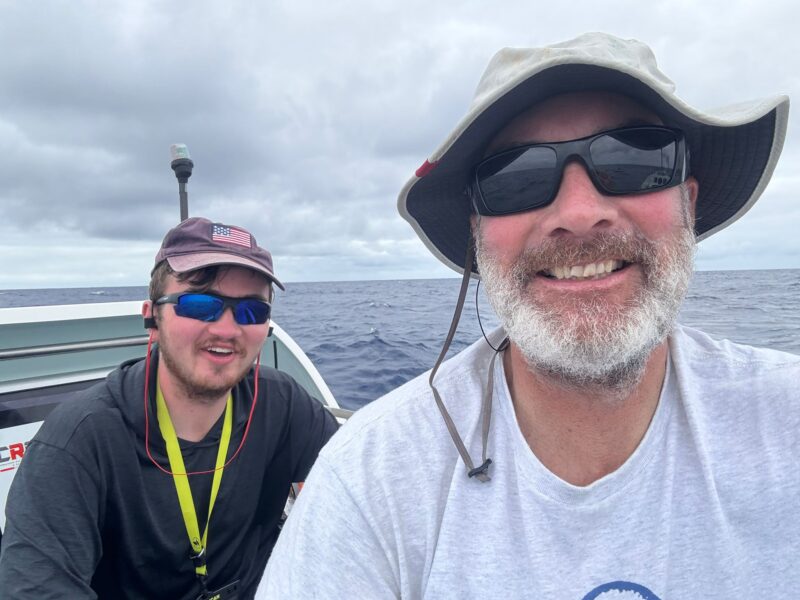
It is hurricane season over the Pacific. Bizarrely, this is helpful (as long as you don’t get caught in one) because it creates quite reliable trade winds that can push you along. However, the downside is that for the first three weeks of June, they were almost always in full foul-weather gear. Cloud cover was near constant, alongside heavy rain and choppy seas.
As it stands, they have been rowing for over 10 weeks and have 1,100km to go. To finish the row within 45 days, they need to cover 125km per day, approximately double their average pace.
Around the world with human power
Louis Margot (CH): Louis Margot is making his way around the world by rowing and cycling. He started by cycling from his home country of Switzerland to Portugal. Then he hopped into his boat and rowed to Columbia in 115 days. From there, he once again began pedaling, this time to Peru.
Now he is on his second rowing section, from Peru to Indonesia. After rowing to Hiva Oa in the Marquesas Islands, he stopped for a few months to rest, make repairs, and restock. He has been back on the water for just over a month and is chipping away at the 11,638km to Indonesia. So far, he has rowed approximately 2,300km.
Indian Ocean
Ocean Revival (UK): Matthew Mason, Jake Mattock, Matthew Inglesby, and Mathew Hemmings are rowing 8,500km from Australia to Kenya. Originally, they were rowing to Dar es Salaam in Tanzania, but have decided to change course slightly and are now heading towards Kilifi, slightly north of the city of Mombasa. Mid-row, they discovered that the port in Dar es Salaam has no slipways, which would make getting the boat out of the water incredibly tricky.
Showing how close-knit the ocean rowing community can be, the team got in touch with the Seas the Day crew. Jess Rowe was quick to respond with some helpful information; her father lives in Kenya and knows the coastline well. A few phone calls later, and the boatyard in Kilifi is getting ready for their arrival.
After two months, they have covered 6,800km. In the last few weeks, conditions have been changeable. They had 24 hours on the para-anchor as a big weather system crossed their path. They almost capsized, and then panicked as a large ship passed too close for comfort. To try and conserve power, they have been switching their navigation on and off. While it was off, a ship suddenly appeared. At first, they thought it was a wave, but within 20 minutes, it was a few kilometers from them.
"Somewhere between survival and bliss, we’ve found a strange kind of peace out here," the crew wrote recently. "As a crew, we’ve laughed hard, rowed harder, and been broken and rebuilt more times than we can count."
The world's blue highway
Untamed (BG, NL, CN, UA): A second four-person crew is also trundling across the Indian Ocean from Australia to Kenya. Almost eight weeks into their row, Evgeny Sudyr, Liu Yong, Ralph Tuijn, and Stefan Ivanov have covered 7,100km of the 9,000km.

An ambitious crew with a wealth of ocean-rowing knowledge, they had hoped to make the crossing in 75 days. Despite their best efforts, they won't achieve this. Even for experienced rowers, the Indian Ocean is difficult. It is why so few ocean rowers tackle it.
The team has given few updates but noted the difficulties of rowing across the "world’s blue highway" after so many weeks of solitude: "We are right in the middle of the major shipping lanes connecting Southeast Asia, Africa, and Latin America. Seeing dozens of vessels appear on our tracker feels surreal after days alone with the waves, a reminder that this ocean is a global thoroughfare."
Around Britain
52 Degrees North (IE/UK): David Irving (IE), Rod Tredgett (UK), and Scott Brown (UK) are rowing 2,700km clockwise around Great Britain. Starting at Tower Bridge in London, they made their way down to the south coast and are now moving up the west coast through the Celtic Sea into the Irish Sea.
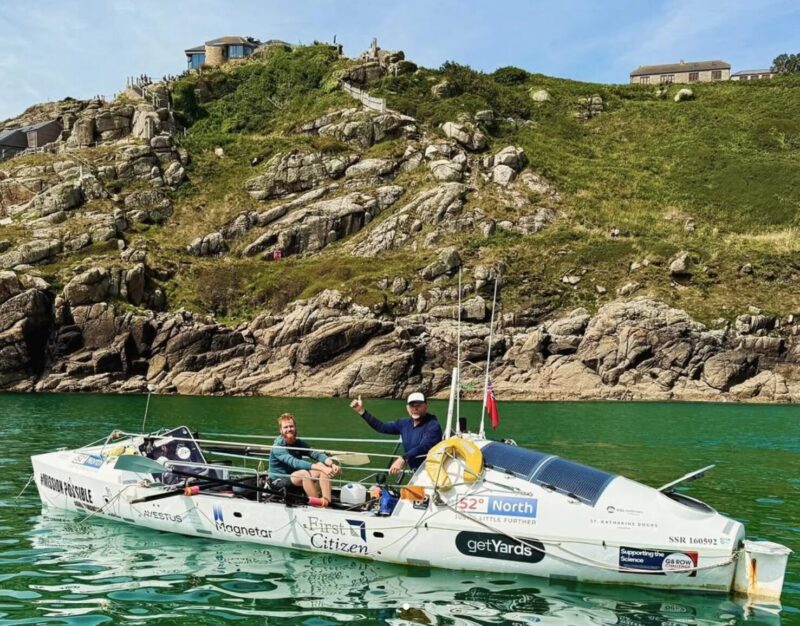
Slow progress has frustrated the trio. Conditions have forced them onto anchor at multiple points, sometimes for days at a time. "It is very hard to remain positive when momentum is so fragmented due to the adverse weather," they commented on social media.
Row with the Flow GB (UK): This six-man crew, originally called Counternavig8, had planned to row counterclockwise around mainland Britain in 2024. The weather at the time made it impossible, so they postponed the row for a year, only to face the same issues in 2025.
After waiting weeks for an appropriate weather window and running out of time to complete the row, they changed plans and rowed clockwise. They renamed themselves Row with the Flow.
Unlike most crews rowing around Britain, they did not start from Tower Bridge; they set off from Eyemouth on the east coast of Scotland. Having started three days ago, they are working their way down the east coast of Northumberland.
Arctic Ocean
The Arctic Challenge 2025 (US): This four-person American crew is rowing 1,000km across the Arctic Ocean from Tromsø, Norway, to Longyearbyen, Svalbard. The speed record for a four-person team on that section of the Arctic Ocean was set in 2023 by Ocean Revival, which made the crossing in 15 days, 5 hours, and 32 minutes. This crew hopes to beat that time. If they complete the row, they will be the first all-American team to row the polar ocean.
They started on July 4 and are getting used to the icy conditions. The last 24 hours have been wet and cloudy, and they are in battery conservation mode. They are making excellent progress, having already completed 70% of the journey.
When we’re not outdoors, we get our adventure fix by exploring social media and the web. Here are some of the best adventure links we’ve discovered this week.
At 40, She Discovered She Was One of America’s Best Free Divers: At age 40, Sara Lynn Burnett took up freediving on a whim. In her first competition, she reached an impressive 65 m. After her dive, one of the judges suggested she apply for the national team.
A few months later, Burnett was at the Freediving World Championships. The only competitor without a coach, she placed 11th. What started as casual curiosity after her brother lent her his spearfishing fins has developed into an unexpected passion.
Tiny Dog Alerts Mountain Rescue to Accident Site: A hiking trip on Switzerland’s Fee Glacier turned into a dramatic rescue when a man fell roughly eight meters into a crevasse after a snow bridge gave way. The hero of the day? The man's tiny dog.
While its owner started frantically calling for rescue on his walkie-talkie, the little dog sat next to the hole until help arrived, acting as a marker so the team knew where to look. Air Zermatt hailed the dog a "four‑legged hero."

Do I like backpacking?
The Himalayan Trip That Made Me Question If I Even Liked Backpacking: Emily Pennington gives a first-person account of four days hiking Bhutan’s Druk Path Trek. Solo traveling was not new to Pennington, but for some reason, this guided hike felt lonely and isolated. As she saw Phajoding Monastery come into view, her eyes filled with tears. The trip had been on her bucket list for years: Why was she not enjoying herself? She realized that it might be because she would rather be sharing the experience with someone else.
National Park Tragedies in the UK: Over five days, two hikers died in separate falls in England’s national parks. The first hiker fell on Kinder Downfall, the Peak District’s tallest waterfall. Recovery efforts lasted 10 hours and included multiple mountain rescue teams and a coast guard helicopter. The second accident occurred days later on Sharp Edge, a narrow ridge on Blencathra in the Lake District that is considered one of the most dangerous hikes in the UK.
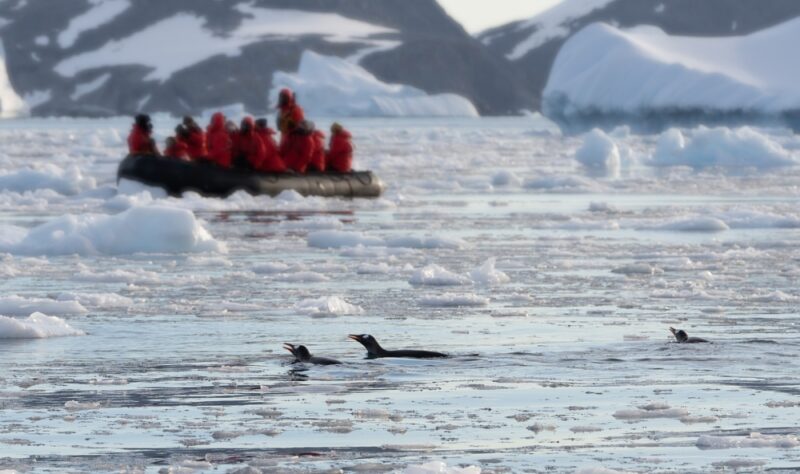
Protecting Antarctica
Why You Should Consider Taking Antarctica Off Your Bucket List: Antarctica holds great allure for a huge number of people, but tourism might wreck the pristine wilderness you’re hoping to visit. From under 8,000 visitors a year three decades ago, numbers have soared to nearly 125,000 in the 2023–24 season.
This influx of tourists puts a huge strain on the fragile ecosystems, with risks including compacting soil, bringing in invasive species, and disturbing breeding colonies. While the Antarctic Treaty and the International Association of Antarctica Tour Operators set guidelines, there are very few actual rules. Experts warn that without stricter regulations, Antarctica could be harmed beyond repair.
The Most Common Trail Running Accidents: Trail running carries more risk than most runners realize. Up to 80% of runners report injuries, but trail-running injuries tend to be particularly serious. A new study examines trail running risks and explores how both individuals and race planners can mitigate them. From cardiac arrest to lightning strikes, Alex Hutchinson summarizes the study and some of the injuries listed.

Biker approaches a bear with tragic results
Motorcyclist Takes Photo With Bear and Gets Mauled to Death: Italian motorcyclist Omar Farang Zin, aged 48, died after a brown bear mauled him in Romania on July 1. He was riding through the Carpathian Mountains when he spotted the bear and approached it. He posed for photos and selfies, some of which were later recovered from his phone. According to other motorcyclists, the bear attacked after he tried to take photos with her cubs.
The Art of Surfing Burn: Nicklas Balboa dissects surf line-up etiquette and the difference between a harmless "drop‑in" and a deliberate "burn." A drop‑in is seen as careless, unplanned, and sometimes forgivable. But a burn is a calculated move meant to insult or undermine another surfer.
Last month, a large rockfall swept down the south face of the Aiguille du Midi in the Mont Blanc massif of the French Alps. It has now been estimated that approximately 523 cubic meters broke away, the equivalent of 15 shipping containers of rock.
The scar from the missing rock is clearly visible, and a pile of fresh debris now sits at the base. In the days before and since the fall, climbers have reported cracking sounds and traces of runoff on the south face, suggesting that the recent slide won't be the last.
On July 3, one user on the UK Climbing forum wrote, “Several teams have reported signs of an impending collapse: unusual noises (creaking, cracking, etc.), vibrations coming from the wall, and the sound of water flowing without any visible water in the Kohlmann/Clair de Lune area (extreme right hand side) of the south face of the Aiguille du Midi. A 12-meter block fell down a few weeks ago. Probably best to avoid in this hot weather!”
The 1st june rockfall at Aiguille du Midi south face was 523 m3!
Cracking noises and runoff traces above the scar (small red circle) indicate thawing permafrost and that the upper slab could fall as well!
Be careful when passing through this area!
Data/analysis: Xavier Cailhol
— Melaine Le Roy (@subfossilguy.bsky.social) 9 July 2025 at 13:24
Classic climbing area under threat
The Aiguille du Midi (3,842m) is a popular climbing area. Its south face features classic granite routes such as the Rebuffat–Baquet and the Contamine. These climbs are close to the top of the Aiguille cable car and popular early in the summer.
But in recent years, the face has become much less predictable. Warmer summers have melted the permafrost that once glued the mountain together, leading to a steady but unpredictable increase in rockfall.
Since the early 2010s, climbers and guides have reported more severe rockfalls across the Alps. To name just a few: In 2018, a huge chunk of rock from the south face of the Trident du Tacul near the Grand Capucin came crashing down. In 2023, large rockfalls took place on the Aiguille du Midi and Mount Pelvoux. Then in 2024, part of the west face of the Dru, below the Bonatti Pillar, fell.
Rock avalanche deposit from 1st June below Aiguille du Midi south face!
Xavier Cailhol (05 July) and Philippe Batoux (1st June)
Look how much snow disappeared in June!pic.twitter.com/z6yfp2G4rE
— Melaine Le Roy (@subfossilguy) July 5, 2025
Some of these events have destroyed climbing routes entirely or forced the establishment of new lines. The Aiguille du Midi itself has seen smaller rockfalls almost every year, but the June 2025 collapse is one of the largest.
As the Alps continue to warm, events like this are becoming part of the landscape. For climbers and visitors, it’s a reminder of how fragile the high alpine environment is.
"Herds and flocks lie on verdant pastures
Wealth and splendor..."
More than a thousand years after it was last heard, a long-lost hymn to the ancient city of Babylon has been brought back to life, thanks to AI. This remarkable rediscovery gives us new insights into this ancient city.
The hymn came from a collection of thousands of fragmented cuneiform tablets stored in the Sippar library in Iraq. The former city of Sippar lies about 70km from Babylon.
The breakthrough came when Professor Enrique Jimenez of Ludwig Maximilian University of Munich teamed up with researchers from the Electronic Babylonian Literature project. This aims to digitize text fragments from cuneiform tablets worldwide.
By the rivers of Babylon
In recent years, they have started using AI to analyze the ancient fragments and recognize patterns in the cuneiform writings. What emerged was a 1,000-year-old hymn devoted to the Mesopotamian city of Babylon. Babylon was founded around 2000 BCE and was once the largest city in the world.
“Using [AI], we managed to identify 30 other manuscripts that belong to the rediscovered hymn -– a process that would formerly have taken decades,” Jimenez said in a statement.

Legend tells us that Noah hid the city's library of cuneiform clay tablets in Sippar before the biblical flood. The newly rediscovered hymn praises the city and gives an insight into the daily lives of the people who lived there.
“The hymn was copied by children at school," said Jimenez. "It’s unusual that such a popular text in its day was unknown to us before now.”
Role of women
Another striking aspect of the 250-line hymn is the numerous references to the roles of women and priestesses and the tasks they performed in the city. No other cuneiform tablets have these references.
“This is the first time we have found such explicit details about the lives of Babylonian women, especially in priestly roles,” he said.
Mesopotamian writings typically focus on wars, royalty, and the gods of the ancient world. While the hymn does mention deities, it also highlights the beauty of the natural world and the farming lives of common people.
“It was written by a Babylonian who wanted to praise his city,” explained Jimenez. "The author describes the buildings in the city, but also how the waters of the Euphrates bring the spring and green the fields. This is all the more spectacular since surviving Mesopotamian literature is sparing in its descriptions of natural phenomena.
Researchers have shared a short translated excerpt of the hymn that describes the Euphrates River and its importance to the city on its river banks.
The Euphrates is her river — established by wise lord Nudimmud —
It quenches the lea [open land], saturates the canebrake,
Disgorges its waters into lagoon and sea,
Its fields burgeon with herbs and flowers,
Its meadows, in brilliant bloom, sprout barley,
From which, gathered, sheaves are stacked,
Herds and flocks lie on verdant pastures,
Wealth and splendor — what befit mankind —
Something unusual is happening to our planet, and scientists are racing to understand why. For billions of years, Earth’s rotation has been gradually slowing down, mainly due to the Moon’s gravitational pull. But that trend has recently reversed.
Since around 2020, Earth has been spinning slightly faster, and now we’re seeing the shortest days ever recorded. This isn’t a shift you would feel, but the planet is rotating milliseconds faster than usual.
In July and August 2025, scientists expect three of the fastest-spinning days in modern history. On July 9, July 22, and August 5, Earth is forecast to complete its spin between 1.3 and 1.5 milliseconds faster than the standard 86,400 seconds that make up a 24-hour day.
So far, the overall record occurred on July 5, 2024, when the Earth completed its rotation 1.66 milliseconds faster than usual. These tiny shifts might sound trivial, but they could have serious consequences.
Theories but no explanations
The big unanswered question is what’s causing Earth to pick up speed? Scientists do not have a clear answer. One contributing factor may be the Moon’s position. Another could lie deep underground with changes in the Earth’s core and mantle. It is even possible that earthquakes, shifts in ocean currents, and the melting of polar ice might play a role. All of these situations slightly redistribute the planet’s mass, and in turn, impact its spin.
So far, all these ideas are simply theories. “Nobody expected this," said geophysicist Leonid Zotov of Moscow State University. "The cause of this acceleration is not explained.”
This new phenomenon isn’t just an academic mystery. If clocks and Earth’s spin fall out of sync, it could affect GPS systems, communication networks, and electric power grids. A shift of just one millisecond can throw off navigation and timing systems by hundreds of meters.
Coordinated Universal Time (UTC) is the global standard used for everything from GPS systems to financial markets. It relies on Earth’s rotation staying in sync with atomic clocks. To keep things accurate, timekeepers occasionally add or subtract leap seconds. If this speeding trend continues, we might soon need a negative leap second -– the deletion of a second from our clocks. That has never been done before, and could cause a major headache for the technologies that rely on ultra-precise timing.
What is most weird about all of this is that Earth’s rotation has been slowing for millions of years. Seventy million years ago, during the time of the dinosaurs, a day on Earth was just over 23 hours long. It is possible that over geologic time, Earth will still show a general slowing trend. But for now, these sudden accelerations are puzzling.
When we’re not outdoors, we get our adventure fix by exploring social media and the web. Here are some of the best adventure links we’ve discovered this week
How To Travel To The Most Remote Office On Earth: In 2023, Jessica Studer, a doctor, pianist, and European Space Agency researcher, was starting a new job. She was to carry out biomedical research at the Concordia research station in Antarctica. Studer starts in Paris and takes the world's longest commute to begin her year-long project, studying the effects of isolation and confinement on the human body.
A Kayaking Duo And The Yukon 1,000 Paddle Marathon: Steve and Kate Dawson are on their third attempt at the legendary Yukon 1000, the world’s longest unsupported canoe-kayak race. The 1,000-mile (1,600km) race takes you from Whitehorse, Canada, to the Dalton Highway Bridge in Alaska, and only 30 crews can enter each year.
The couple's 2023 bid ended because of wildfire smoke that triggered breathing issues. In 2024, they took a conservative approach to ensure they crossed the finish line. This year, they’re trying to crack the race record.
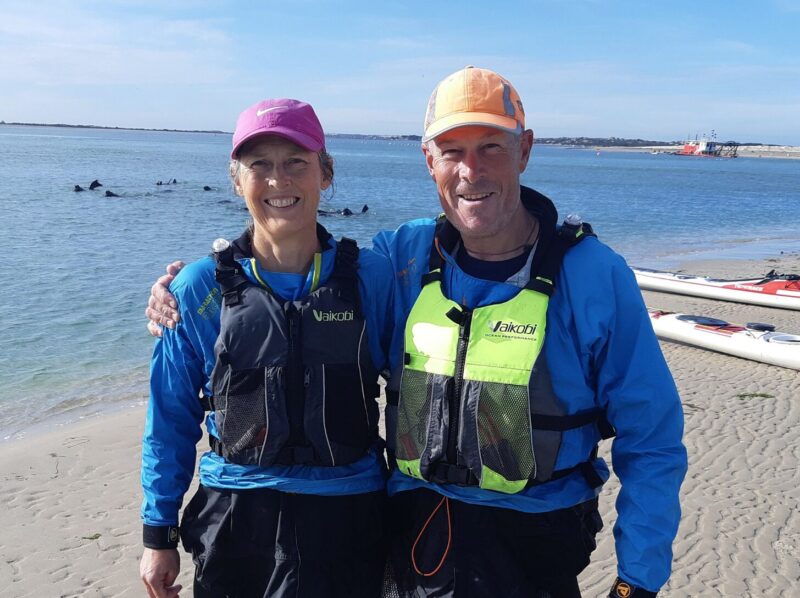
Altitude-induced hallucinations
Teen Hiker Put Into Induced Coma: Last month, 14-year-old Zane Wach was hiking with his father on Mount Whitney in the U.S. when he started to suffer from hallucinations. Triggered by the altitude, Wach was seeing snowmen and Kermit the Frog. Soon after, Wach stumbled over a cliff’s edge and plummeted 36m. He broke several bones and suffered a severe head injury.
How The Six-Day Race Became An American Spectator Obsession: In the 1860s and 1870s, America had an odd spectator sport; six-day walking marathons were all the rage. In this 15-minute podcast, Dylan Thuras and Matthew Algeo discuss how speed walking in circles around a track became a competitive sport and pop culture phenomenon.
Horror with Honnold?
Indie Horror Film With Alex Honnold Is About As Good As You’d Expect: Owen Clarke reviews The Sound, a film where big‑wall climbing collides with throwback Sci-Fi‑style horror. The film's first five minutes feature pros like Alex Honnold, Brette Harrington, Hazel Findlay, and Adrian Ballingern climbing Red Rocks' Rainbow Wall.
Then the real story begins. A team of climbers attempts a first ascent of a rock spire and ends up fighting alien demonic possession. Clarke deems it a bit of a misfire, but a misfire with heart, where the climbing sequences are the real star of the show.
Sea Kayakers Deserve A Triple Crown: Hiking and climbing are littered with "Triple Crowns," and kayaker Bryan Hansel believes sea kayakers deserve one too. His criteria? The route must be at least 1,125km, all sections need to be completed under human power, and there must already be a book or movie that documents the route. Hansel settled on his North American Triple: The Mississippi River, Lake Superior, and the Inside Passage.
The shark whisperer
New Documentary Dives Into Ocean Ramsey’s Controversial Activism: A new Netflix documentary, Shark Whisperer, follows Ocean Ramsey, a free-diver and "shark influencer." Ramsey has spent 25 years diving with the iconic predators, challenging shark stereotypes. Though she has amassed millions of followers, she has also gained many critics. In this interview, she discusses her campaigning, shark behavior, and why she ignores her critics.
Inside A Badass Ascent Of The El Cap Triple: In June 2025, Jordan Cannon and Michael Vaill completed a jaw-dropping link‑up on El Capitan. They scaled the Salathé Wall, Lurking Fear, and The Nose in just 23 hours and 19 minutes. That’s over 8,000 vertical feet (2,500m), including free climbs to 5.13 and aid pitches up to A2.
In a remote stretch of northern Quebec, scientists have uncovered pieces of Earth's crust that are more than 4 billion years old. These ancient rocks, from the Nuvvuagittuq Greenstone Belt (NGB) rock formation, are the oldest-known rocks on the planet.
Geologist Jonathan O’Neil from the University of Ottawa found the rocks with his research team in 2008. He and his team proposed that the rocks were 4.3 billion years old. This made them Earth's oldest rocks, which formed just a few hundred million years after the Earth itself, in what is called the Hadean eon.
Other scientists weren’t convinced. Different studies and dating methods placed the rocks between 3.3 and 3.8 million years old. Since then, their age has been the subject of much debate.
O’Neil has now spent over a decade studying these rock formations. His new study looks at intrusion rocks from the NGB. They formed as molten magma cut through existing layers of rock and hardened. Two separate dating methods suggest the intrusion rocks are indeed 4.16 billion years old.
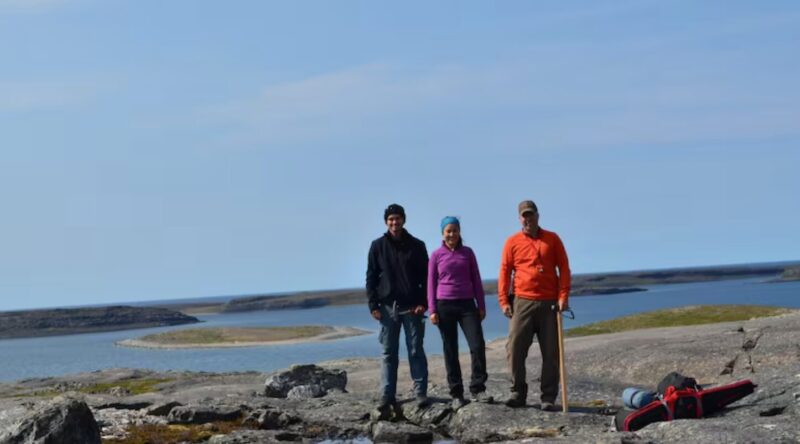
Hell on Earth
They formed as the molten magma pushed its way through the volcanic rock that was already there. This means the volcanic rock must be older than the newly studied intrusion rock.
“The intrusion would be 4.16 billion years old, and because the volcanic rocks must be older, their best age would be 4.3 billion years old, as supported by the 2008 study,” O’Neil explained to Reuters.
Both sets of rock came into existence during the Hadean eon, the geological period between 4.5 and 4 billion years ago, when the Earth was new and resembled a ball of molten lava. The period is named after Hades, the Greek God of the underworld. At that time, the planet was hot and violent, a hive of volcanic activity with surface temperatures of around 230˚C -- typical pizza-baking temperature.
Originally, researchers did not believe there was much rock formation during this era, but recent evidence suggests otherwise. Even during this chaotic and witheringly hot time, Earth had started to form a solid crust. This means that conditions for life could have started far earlier than we used to think.
“These rocks and the Nuvvuagittuq belt being the only rock record from the Hadean, they offer a unique window into our planet’s earliest time to better understand how the first crust formed on Earth and what were the geodynamic processes involved," said O’Neil. "Since some of these rocks were also formed from precipitation from the ancient seawater, they can shed light on the first oceans’ composition...and help establish the environment where life could have begun on Earth.”

A rare find
Finding rocks this old is almost unheard of. Most of Earth’s original crust has been recycled by plate tectonics or worn away by erosion. These rocks offer a unique window into what the planet was like over four billion years ago.
The NGB lies within Inuit land near the town of Inukjuak, and the growing interest in the rocks is starting to worry the local community. All further rock sampling in the area has been paused, partly due to their concerns about preserving the land. Previous scientific studies have damaged the area, with large chunks of rock being removed.
“There’s a lot of interest in these rocks, which we understand," said Tommy Palliser of the Pituvik Landholding Corporation. "We just don’t want any more damage.”
They want to put protections in place that would allow research using only non-invasive techniques.
An otherworldly treasure is heading to the auction house this month. A massive piece of Martian rock will be sold at Sotheby’s, and experts think it will fetch millions.
Officially named Northwest Africa 16788 (or NWA 16788), it is the largest Martian meteorite ever discovered on Earth. We have only found 400 meteorites from Mars, and most are just small fragments. This weighs in at nearly 25 kilograms, which is 70% larger than the next biggest piece of Mars that has landed on our planet.
Researchers are unsure when it crashed into Earth, but it was found in the Agadez region of Niger, in the Sahara Desert in November 2023. It is believed to have broken off the Martian surface in a violent asteroid impact before drifting through space and eventually crashing onto our planet.

Research shows that the meteorite contains a large amount of magnesium and iron-rich crystals, and that some minerals within it have turned into glass. This is likely due to the original force of the asteroid impact and its subsequent journey through our atmosphere.
A $4 million rock?
Sotheby’s in New York will auction the meteorite on July 16, and it could make history. Experts estimate that it could sell for between $2 million and $4 million, potentially setting a new world record for a meteorite sold at auction.
“NWA 16788 is a discovery of extraordinary significance — the largest Martian meteorite ever found on Earth, and the most valuable of its kind ever offered at auction,” said Cassandra Hatton, vice chairman of science and natural history at Sotheby’s. "Weathered by its journey through space and time, its immense size and unmistakable red color set it apart as a once-in-a-generation find. This remarkable meteorite provides a tangible connection to the red planet."
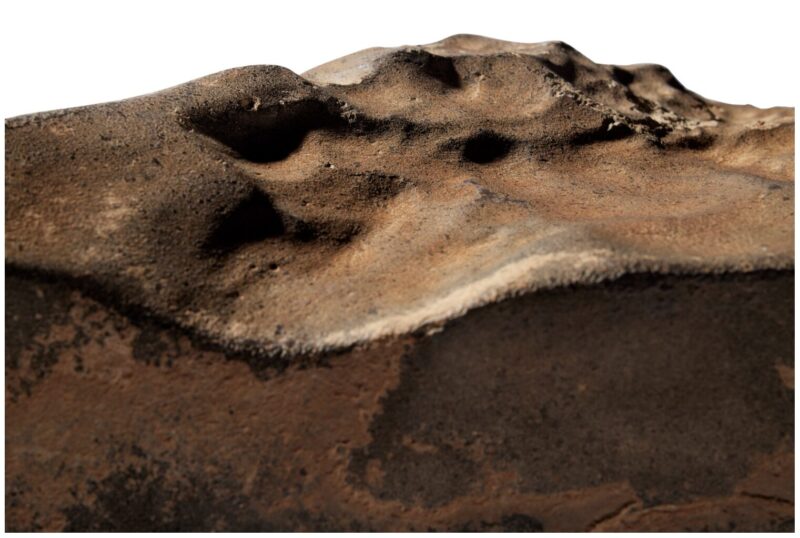
The auction has also sparked debate. Some scientists worry that if the rock ends up in a private collection, its scientific value will be lost. Paleontologist Steve Brusatte expressed disappointment over the prospect, saying it would be a shame if the meteorite “disappeared into the vault of an oligarch” rather than being preserved in a public museum.
On the other hand, some experts are hopeful that a new owner could collaborate with researchers to unlock more secrets from Mars. Julia Cartwright, a planetary scientist at the University of Leicester, noted that “the scientific interest will remain,” regardless of who ends up buying it.
Before it’s sold to the highest bidder, NWA 16788 will be on public display at Sotheby’s from July 8 to July 15, giving space lovers and curious onlookers a rare chance to stand face to face with a real piece of Mars.
Two killer whales have been caught "kissing" on camera in a fiord in northern Norway. A group of snorkelers-turned-citizen-scientists captured the moment last October, and now the internet is going wild for the smooching orcas.
This behavior, known as tongue-nibbling, has never been seen before in wild orcas. The snorkelers were on a whale-watching tour when they saw the two juvenile orcas approach each other and begin gently touching mouths and nibbling at each other’s tongues.
The video footage shows three separate interactions between the whales. Altogether, the whales spent nearly two minutes tongue-nibbling, a behavior that bears striking resemblance to French kissing. After their underwater make-out session, the two whales parted ways, swimming off in different directions.
Only seen a handful of times
Even in captive whales, this behavior is incredibly rare. It was first spotted in 1978 at Loro Parque Marine Park in Tenerife, Spain. Since then, only a handful of workers at marine parks have witnessed it.
"Orca caretakers at several facilities are aware of the behavior, but its prevalence is extremely low," study co-author Javier Almunia told LiveScience. "It may appear and then not be observed again for several years.”
The meaning of the behavior is open for interpretation. Some experts believe it’s a form of social bonding, similar to grooming in primates or the lip contact seen in beluga whales. Others suggest it could be play, part of how orcas express affection, or test social boundaries.
“Tongue-nibbling itself has not been recorded in other species, but comparable mouth-related social interactions have been observed in belugas," Almunia explained. "This could suggest that, given cetacean anatomy — particularly the adaptation of limbs to the marine environment — oral contact may serve as a more versatile means of social communication than in terrestrial mammals."
Others have speculated that it might be a way to clean each other’s mouths or beg for food. Regardless of the exact reason behind it, the kiss shows us that there is still a huge amount we don't know about cetacean behavior.
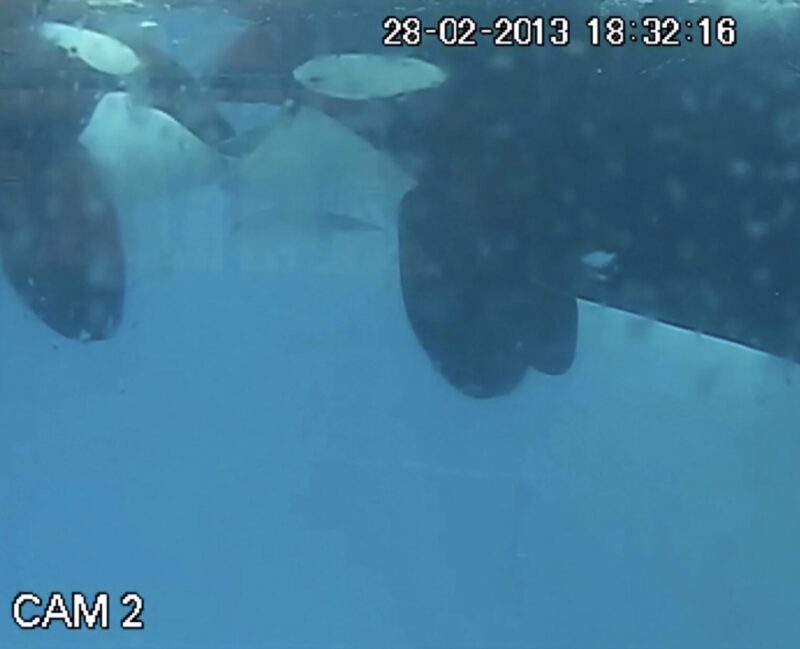
Natural behavior?
Those analyzing the footage believe that since this kissing occurs in wild orcas, it is a natural behavior also shown in orcas under human care.
Not all scientists agree. Some think that far more research is needed -- research that does not need captive whales.
“Even if the behavior itself is fascinating, and I think it is...it’s just one observation," marine mammal researcher Luke Rendall told LiveScience. "It is telling that in their summing up, these authors take great pains to explain how this observation justifies orca captivity and swim-with-cetaceans programs. It does not, in my view.”
In mid‑June, a rare case of mammalian altruism unfolded off the coast of Western Australia. A pod of dolphins escorted a young humpback whale from the confines of a shallow bay into deeper water.
Local conservationists from the Dolphin Discovery Centre spotted the humpback whale in Koombana Bay and were immediately concerned. Every year, the whales migrate roughly 5,000km from Antarctica to their breeding grounds near Australia’s Gold Coast. Humpbacks move along the coastline but do not usually venture into the shallow bay.
They quickly dispatched a boat crew to inspect the animal and sent drones to capture aerial footage.
“Sometimes it happens that an animal gets spooked by a predator, is [doing] poorly or injured, or might have a fishing gear entanglement," the Dolphin Discovery Centre commented. "These animals then often seek shelter in calmer and more shallow parts to rest up.”
The drone recorded the whale languishing near the bay’s edge. The footage showed no signs of entanglement or wounds. Just a whale that appeared a little bit lost. Then a curious pod of bottlenose dolphins appeared.
The dolphins started by circling the whale. Then came the pivotal moment. They began swimming northward, almost guiding the whale with purpose. The young humpback followed, moving into Geographe Bay’s deeper waters.
Dolphins are naturally sociable and curious, but this was more than a brief interaction. The footage seemed to show a coordinated effort, as if the dolphins recognized that the whale, possibly disoriented or exhausted from its migration, needed help. Inter‑species cooperation in the wild is incredibly rare. While marine animals sometimes travel together, they do not actively guide other species.
Dr. Vanessa Pirotta, a marine wildlife scientist, suggested that the dolphins might have even communicated with the whale.
“Whales use low-frequency sounds, while dolphins make high-frequency sounds, so I would assume these dolphins may have been buzzing around this whale," she said. "All in all, it looks like a very playful and innocent interaction between these two species.”
Deep beneath the surface of Africa, something extraordinary is happening: The Earth’s mantle beneath Ethiopia is pulsing like a slow, steady heartbeat. This underground rhythm, though invisible to us, is causing a dramatic geological transformation. It is slowly tearing Africa apart and laying the groundwork for a new ocean.
This process is unfolding in the Afar Triangle region of Ethiopia, where the Nubian, Somali, and Arabian tectonic plates meet. This area is part of the East African Rift, a vast crack in the Earth’s surface that has been forming for millions of years and pulling those plates away from one another.
However, recent research revealed something even more dynamic. Waves of molten rock are rising from deep within the Earth's mantle in periodic, pulsing surges.
These pulses are called mantle upwellings. Each pulse pushes magma upward in bursts, weakening the crust above it, resulting in volcanic eruptions and seismic activity.
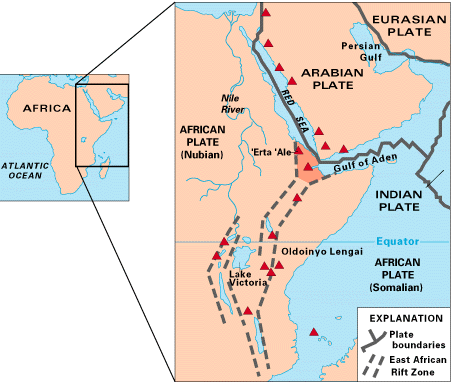
New ocean basin forming
It is impossible to study the exact place where the plates all diverge from each other, but researchers can examine surface volcanic rocks from the Afar region. After looking at samples from 130 young volcanoes in the area, they combined chemical analysis with geological data and modeling. This showed them that the upwelling is not a uniform plume.
“We found that the mantle beneath Afar is not uniform or stationary -- it pulses," explained lead author Emma Watts.
As the molten rock from deep within the Earth rises, it pushes the African tectonic plates away from one another. This process will take millions of years, but when the pulses eventually cleave apart the continent, a new ocean basin will form.
While this transformation is unfolding on a geologic time scale -- far too slowly to witness during a human lifetime -- it gives scientists a rare chance to study how continents break apart.
When we’re not outdoors, we get our adventure fix by exploring social media and the web. Here are some of the best adventure links we’ve discovered this week.
Trailblazing the Sky: Canadian highliner Mia Noblet is redefining the limits of her sport. After mastering tricky waterlines at Squamish’s Stawamus Chief without a fall, a feat that even top athletes struggle with, she turned to slacklining and then highlining.
At Hunlen Falls, Canada, she crossed a 222 m highline spanning a 400 m abyss. After two hours of focused steps, she set a new women's record.
Five of the Greatest Walks in the World: From the 65km Overland Track in Tasmania to Mount Kenya, this list of five multi-day walks has something for everyone. It includes a mix of terrains, levels of challenge, and cultural experiences.

Bison dies in hot spring
Yellowstone Tourists Watch As Bison Dies in Hot Spring: On June 21, visitors at Yellowstone’s Grand Prismatic Spring witnessed a bull bison stumble into the scorching water.
Despite its desperate efforts, the bison was unable to free itself. Park officials confirmed that the hot water, rather than acidity, caused the bison's death and that they left the carcass to decompose naturally. Witnesses described watching “the circle of life unfold in the most raw way."
Why This Photographer Made a Camera Lens Out of Glacial Ice: In a striking photography experiment, Tristan Duke traveled to Svalbard in 2022 to create camera lenses from shards of ancient glacial ice. Duke projected the Arctic landscape onto massive negatives, using a tent-like camera obscura to hold the palm-sized ice lenses.
As the lenses thawed, they created soft, tear-like blurring over the images. Duke then traveled across America, using ice lenses to photograph wildfires, oil infrastructure, and wind turbines.

New lines and freeing El Cap
Exploring the North Face of Dent du Géant: On June 10, Italian alpinist Emanuele Andreozzi and Spain’s Santiago Padros climbed what might be a completely new mixed line on the North Face of Dent du Géant in France. Padros first saw a crack running down the face in 2014 and had been thinking about the 335m line for years.
Ethan Morf is the Youngest Climber to Free El Cap In A Day: At 20 years old, Ethan Morf has become the youngest climber to free climb Yosemite’s legendary El Capitan in a single day. He sent the famed Free Rider route (VI 5.13a, 29 pitches) in under 24 hours.
Morf had climbed 23 pitches over 14 hours before his first fall. Exhausted, he took a 15-minute nap before completing the last six pitches, the last five of which he deemed "the fight of my fucking life."

A big wall climb in China
Coveted Chinese Wall Finally Climbed: In 2024, a Chinese climber made the first ascent of Seerdengpu’s 850 m west face in China’s Siguniang National Park. This steep wall had remained unclimbed despite repeated international attempts, including six lines by Pat Goodman.
Solo and without a permit, the Chinese climber (known only by the alias Ma Fang) completed the feat last year. He had been attempting the wall for four years without success. For his final attempt, he entered the valley several times as a tourist to stealthily transport 75 kg of gear to his base camp. He has now written an account of his ascent.
Three Men Mysteriously Drown After Hiking to California Swimming Hole: On June 18, six hikers arrived at the remote Rattlesnake Falls in Placer County, Northern California. Three of the men jumped into the cold, fast-moving water and vanished beneath the surface. Three days later, volunteer diver Juan Heredia hiked in and recovered the bodies of Valentino Creus, 59, and Matthew Schoenecker, 50, from Los Angeles, and Matthew Anthony, 44, from New York City.
A button with extraordinary historical significance has fetched $8,225 (£6,000) at auction in the UK. At a glance, it just looks like an old brass button. However, this rare Arctic rescue button dates from the searches for the lost John Franklin expedition.
Both Franklin's ships, HMS Terror and HMS Erebus, disappeared in 1845 while seeking the Northwest Passage. For years afterward, dozens of ships scoured the region in the hope of finding them. The British Admiralty's massive rescue effort lasted well into the 1850s.

These rescue buttons were part of a clever contingency plan. Each button is embossed with tiny details of rescue routes, supply depots, the year 1852, and the inscription “In search of Sir John Franklin Arctic Expeditions.” Rescuers handed them out to any Inuit they met. The idea was that if any of Franklin’s surviving crew came upon one of these buttons, they could make their way to a cache of supplies and eventually find their way home.
Rescuers also tried tying notes to balloons and putting collars on Arctic foxes containing messages.
Very few of these message buttons were produced. Today, we know of only four of them: the one from this sale, another at the Smithsonian, and two more in private collections.
This tiny piece of Arctic history sold on June 24. Initially valued at around $1,100, fierce bidding saw the final price surpass $8,000.
Each spring, millions of tiny brown Bogong moths fly 1,000km from southeastern Australia to the caves of the Australian Alps to escape the summer heat. Now we know how they find their way -- they navigate using the stars.
They have an innate ability to make this journey. After a few months in the caves, they return to their breeding grounds to mate and die -- so the next time they migrate, there are no individuals from a previous generation to show them the way. But somehow, the moths unerringly make it to a place they’ve never visited before.
Their journey can take weeks. The little moths fly each night and rest during the day, hiding up in whatever little crevices they can find en route.
“Their parents have been dead for three months, so nobody’s shown them where to go” said Eric Warrant, the author of the new study. "They just emerge from the soil in spring in some far-flung area of southeastern Australia, and they just simply know where to go. It’s totally amazing."
Magnetic field not as important
Warrant has studied the moths for years. He previously proved that they use the Earth's magnetic field to navigate, but he always thought there was more to the story. He believed that the moths had visual cues to guide them. As it turns out, the magnetic fields might play less of a role than previously thought.
To test his theory that the moths use the constellations, Warrant and his team set up a lab in his home near the Australian Alps. They designed a “moth arena” with a projection of the night sky on the ceiling. This perfectly mimicked the stars they would see if making the actual flight. To negate the impact of the magnetic field a Helmholtz coil was used, which creates a magnetic vacuum.
“We captured the moths using a light trap, brought them back to the lab, and then we glued a very thin rod on their back, made out of tungsten, which is nonmagnetic,” explained Warrant. "Once you’ve done that, you can hold that little rod between your fingers, and the moth will fly very vigorously on the end of that tether."
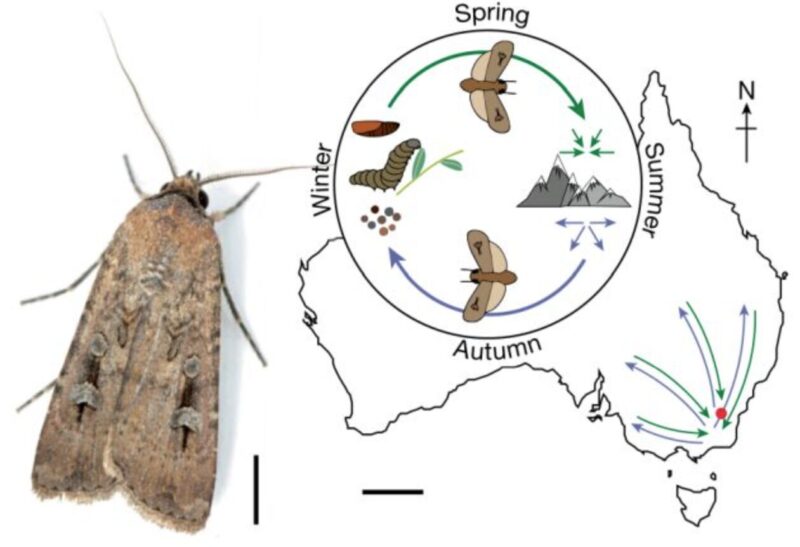
Positive proof
As the moths flew around the lab, an optical sensor detected their movement. In clear-sky tests, with accurate stellar projections above, the moths oriented themselves seasonally: flying south in spring and north in autumn. Astonishingly, when researchers rotated the star pattern, the moths adjusted their flight direction accordingly. If the stellar patterns were completely scrambled, the moths became disoriented, flying in every direction.
“That was, for us, like the final proof that they actually indeed use the stars for navigation,” said lead researcher David Dyer.
The experiment went even deeper. They then placed electrodes in the moths' brains to record neural activity. Researchers watched specific brain regions light up when the night sky shifted, especially as the insects faced south, the direction of migration.
Researchers now think that the Earth's magnetic field is more of a backup navigational system for the moths, used when heavy cloud cover blocks out the stars.

Other celestial navigators
We know there are several birds, seals, and frogs that navigate using stars. Birds such as Indigo buntings rely on the rotation of different constellations to figure out which way is south. In captive studies, harbor seals used specific stars or constellations to orient themselves. This may help them to search for food offshore.
The Bogong moth is the first invertebrate found to do this for such long migrations. Dung beetles (also an invertebrate) do use the stars to navigate, but only in a straight line over much smaller distances. They use the polarized light from the moon and the Milky Way to direct them as they push their dungballs.
Other moths use light sources like the moon to fly in a straight line by keeping the same angle to it -- but that is much less complicated than navigating an inborn direction by the stars.
Researchers hope that understanding their navigation will provide clues on how other insects figure out where they are going.
Last February, a remote research station in the Canadian High Arctic captured a striking image of the night sky. It showed a dense network of bright streaks against the blackness. Those streaks were satellites, hundreds of them.
Western University in Ontario and Defence Research and Development Canada collaborated to install 14 cameras at the tiny research station of Eureka on Ellesmere Island. Typically used to track meteors, these cameras monitor satellite activity over Canada. Each camera takes tens of images a second throughout the night. Together, the 14 cameras capture the full night sky.
Taking so many photos so quickly allows them to track anything over 30cm wide passing overhead, including satellites. By combining all of the frames into one composite, the team created a long-exposure image that shows the trajectory of every satellite that passed over the region in one night. The result is both beautiful and startling. The trails of manmade objects in low orbit fill the sky like a woven fabric.
The launch of thousands of new satellites in recent years, especially mega-clusters such as Starlink, has transformed the sky by creating this visual clutter. The average person doesn't notice it, but it's become increasingly difficult for astronomers to observe the natural night sky. Satellite trails interfere with long-exposure images of stars and galaxies. It is vital that we can continue to observe the universe from Earth without peering through a haze of artificial lights.
Four similar stations exist elsewhere in Canada, in central British Columbia and in Saskatchewan. Over one year, the sites have collected nearly half a billion satellite observations, tracking more than 17,000 objects in orbit.
Deep in the northern Ontario bush, there is a stone covered in strange markings. No one knew it existed until a tree fell over and exposed it. Carved into the slab of rock are a series of ancient runes that archaeologists have been trying to decipher for years.
The stone was found in 2018, and pictures of it were quickly sent to Ryan Primrose, the director of the Ontario Centre of Archaeological Education.
“It's certainly among the least expected finds that I think I've encountered during my career. It's absolutely fascinating," he told the Canadian Broadcasting Corporation.
Primrose was worried people would assume that the markings on the stone slab were created by Vikings, so he has been quietly working on the mystery for seven years.
"We didn't want to release information publicly until we had done as much as we could at the time to understand exactly what it was," he said.
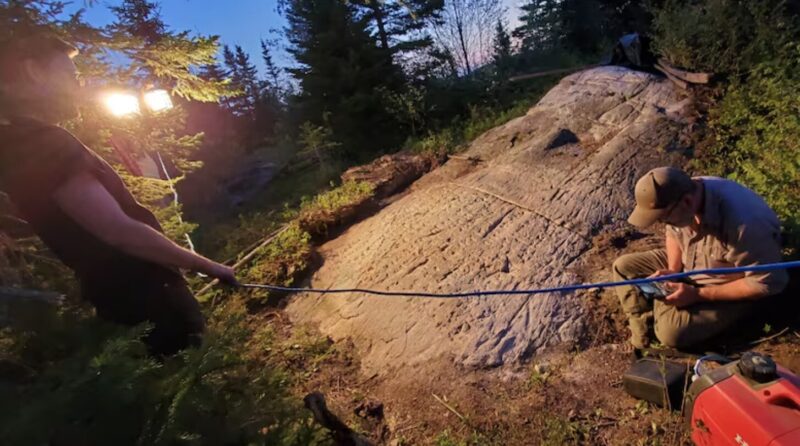
The stone slab, about the size of a small tabletop, is half-buried in the rocky ground. From a distance, it looks as though it is covered in scratches. It is actually a series of 255 runes alongside an illustration of a boat and 16 further runic symbols that have been purposefully carved into the rock.
Primrose decided to bring in runology expert Henrik Williams. He flew over from Sweden and sat under a tarpaulin for three hours with a flashlight, looking at the runes. He realized the symbols were Futhark alphabet runes, which were originally used in Scandinavia.
A confusing timeline
Etched into the bedrock is an early Swedish rune version of The Lord’s Prayer. The prayer can be traced back to 1611. This initially caused confusion. There were no Swedes in the region at that time, so who could possibly have carved this into the rock? But the prayer was republished in the 19th century, and at that time, the Hudson’s Bay Company did employ some Swedes. They had a trading post in Michipicoten, which is relatively close to the runes.
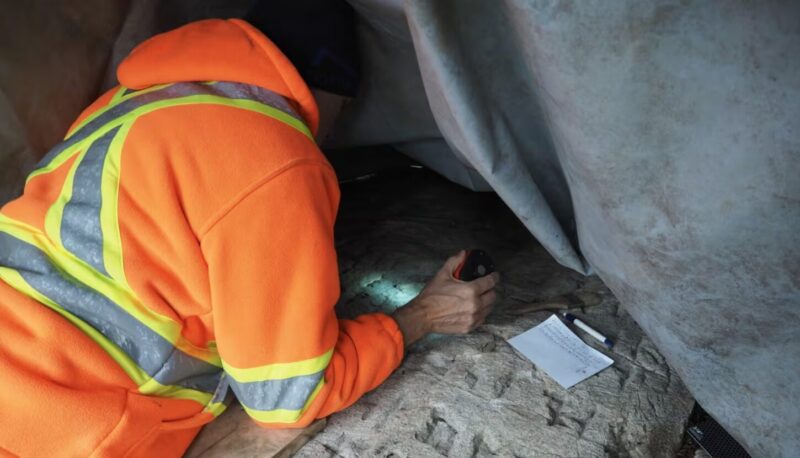
There is no way to know exactly how the carvings came to be, but Primrose and William reasonably think that someone working for the Hudson’s Bay Company is responsible. Etching all 255 runes into the rock is a task that would have taken days or weeks. Once created, they believe it might have been a central point for religious prayer or for Swedes to come together.
This timeline means that the stone is much newer than many would assume. Researchers estimate that it was carved around 1800. The team admitted they were a little disappointed to discover that the runes were not older.
When we’re not outdoors, we get our adventure fix by exploring social media and the web. Here are some of the best adventure links we’ve discovered this week.
A Crushing Wave of Snow: On July 13, 1990, a deep earthquake sent a massive serac hurtling down Lenin Peak. The cataclysmic avalanche engulfed Camp 2 and is the single deadliest accident in mountaineering history. Forty‑three of the forty‑five climbers in camp perished beneath a 300m-wide wall of snow.
Miguel Helft witnessed the disaster as his group stopped just short of camp. Thirty-five years on, he recounts what happened and speaks to the two survivors.
The Road to Patagonia: Matty Hannon spent two and a half years filming his documentary The Road to Patagonia. It follows his 50,000 km journey from Alaska to Argentina’s Tierra del Fuego.
Traveling by motorbike and horseback, Hannon is taking the ultimate surfing road trip, but the film is so much more than that; it explores the human condition, our relationship with nature, animism, and Hannon's love story with Heather Hillier.
A new long-distance hike in Mexico
An 800km Thru Hike Along the Rio Grande: The Mexican government has commissioned a new 800km trail along the Rio Grande in New Mexico. The cross-state trail will run through three national wildlife refuges, six state parks, a national heritage area, and past six national monuments. Though it is not yet finished, some sections can be walked. Mary Beth Skylis gives her thoughts on a one-day segment of the trail.
Why Style Matters on 'The Greatest Route on Earth': Jordan Cannon explores how style has developed on Yosemite’s iconic El Capitan. He believes the Salathé Wall is the perfect canvas for climbers to express themselves and their climbing style. He argues that how you climb is just as important as getting to the top, and delves into various ascents of "the greatest route on Earth."
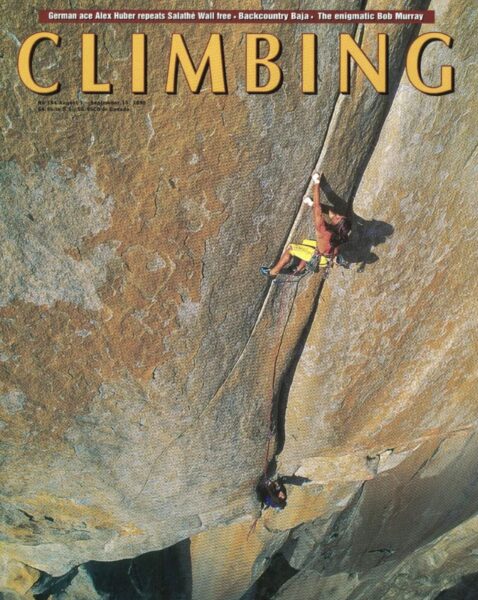
The Air India crash
Is there a Safest Seat in a Plane Crash?: In the wake of the catastrophic crash of Air India Flight 171 in Ahmedabad, people have discussed whether specific seats offer a better chance of survival. The crash only had one survivor, 38-year-old Viswash Kumar Ramesh, and his seat was 11A. It was the same seat occupied by the sole survivor of Thai Airways flight 261, which crashed in 1988. But experts warn this is just a coincidence; crash outcomes are unpredictable.
Women Trail Runners Dominate Montane Summer Spine: Anna Troup and Irene Kinnegim have taken first and second place in this year's Montane Summer Spine Race. This grueling 460km race follows the Pennine Way in the UK. Troup crossed the finish in 84 h 56 m to take first place overall and cement her status as an ultra-running powerhouse. The 55-year-old last ran the race in 2022, when she set the women's record.

Climbing in classic gear
Elise Wortley Climbs Mont Blanc in 1830s Women’s Attire: British adventurer Elise Wortley discusses her project to bring attention to the astonishing feats of early female explorers. Part of this is climbing without modern gear and wearing historically accurate clothing. She wants to understand what these women endured and the barriers they faced. Her latest expedition is an ascent of Mont Blanc in a 12kg woolen dress with hobnail boots.
Young Indigenous Kayakers Making Historic First Descent of Klamath River: A team of indigenous teenagers is making a first descent of the newly undammed Klamath River. Forty-three teenagers from several tribes are paddling 498km from southern Oregon to the Pacific Ocean. It will be the first source‑to‑sea descent since the removal of four major dams. They started on June 12 and hope to finish by July 11.
A young female bear spent last weekend roaming the leafy suburbs of Vilnius, the capital of Lithuania. She wandered out of the forest and then meandered around residential areas, crossed highways, and explored backyards, completely unaware of the commotion she was causing.
Her short city break quickly captured the nation. Onlookers trailed across the city, capturing footage of her on their smartphones and drones. Concerned for public safety, the Lithuanian government issued a permit to shoot the animal, causing uproar among the hunting community.
Members of the Lithuanian Association of Hunters and Fishermen categorically refused to carry out the order. Brown bears are scarce in Lithuania. The association thinks there are only five to ten individuals left in the country. They were once native to Lithuania but disappeared in the 19th century due to excessive hunting and habitat loss. Recently, small numbers have returned, migrating from neighboring Belarus and Latvia.
Lost, not aggressive
The association disagreed with the government's directive to shoot the bear, which is endangered and protected by Lithuanian law. This bear had shown no aggressive behavior. Ramute Juknyte, the association's administrator, told the Associated Press that the two-year-old bear was "a beautiful young female" and was frightened rather than hostile. “She just didn’t know how to escape the city, but she didn’t do anything bad.”
First spotted in the capital on Saturday, the bear finally came within four to five kilometers of the city center. At this point, the hunters suggested a different strategy to move her away from the city. They wanted to sedate, tag, and release her back into the wild.
In the end, none of this was needed. On her own, the young bear ambled back into the forest. By Wednesday, she had left the outskirts of Vilnius behind. A forest camera positioned 60km away recorded her quietly feeding on corn.
Astronomers have filmed what seems to be the birth of a new planet within a swirling disk of dust and gas around a young star. On June 9, researchers photographed the cosmic event through the European Southern Observatory’s Very Large Telescope in Chile.
The star, RIK 113, sits within the Scorpius constellation, 431 light years away. A large, rotating protoplanetary disk of dust and gas left over from the star’s formation surrounds it. In theory, the disk should eventually condense under the star's gravitational pressure to create a new planet. Some atmospheric emissions between the gas ring and the young star are also consistent with those that would be released from a planet in formation.
The images reveal complex structures within the disk, which extends out 130 astronomical units (19.5 billion kilometers) from the star it surrounds. Within this, there is also a bright ring that sits 50 astronomical units (7.5 billion kilometers) from its parent star. By comparison, Earth sits just one astronomical unit away from our sun.

The images show spiral arms extending out from the inner ring, and this part of the image has most excited astronomers.
“One rarely finds a system with both rings and spiral arms in a configuration that almost perfectly fits the predictions of how a forming planet is supposed to shape its parent disk according to theoretical models,” said the research team.
If the presence of a planet is confirmed, this would be one of the clearest examples of planetary birth that astronomers have ever observed. To confirm their theory, the team has secured valuable observation time on the James Webb Space Telescope, which should give even sharper views of the region.
Since our last ocean rowing round-up, Louis Margot has restarted his round-the-world challenge, a father-son duo is aiming to break a world record, and the World’s Toughest Row is underway.
Pacific Ocean
The World’s Toughest Row race started on June 6, the counterpart to the company’s annual Atlantic Race. Compared to the more common Atlantic route (from the Canary Islands to Antigua), this route sees fewer rowers. Before the race's inception, only 33 crews had rowed from mainland America to Hawaii.
This year, four teams have entered and are battling 4,500km across the mid-Pacific from Monterey, California, to Hanalei Bay, Hawaii.
Organizers brought the race's start date forward by a day to take advantage of good weather and to give crews the best possible start. Despite this, the first few days are always tricky. Crews battled wind and currents that pinned them to the coastline.
The leading boat is the four-man Swiss Raw. They have covered 1,550km and pulled away from the other crews. Swiss Raw won the 2022 Talisker Whisky Atlantic Challenge (as it was then named), coming in a full day before any other boat. Ocean5, Oar the Rainbow, and RangeOars Row are much closer together, having covered 1,055km, 1,011km, and 900km, respectively.
Ten days into the row, the teams are coping well, despite some problems. The crew of Oar The Rainbow is suffering from knee and shoulder pains, but is pushing through. RangeOars Row is having power issues; it has been cloudy, which is affecting their batteries. Swiss Raw had broken seat bearings. Ocean5 has battled severe seasickness, which finally seems to be abating.
Around the world
Louis Margot (CH) - Swiss adventurer Louis Margot restarted his Human Impulse project on June 1. Margot is rowing across the Pacific Ocean as part of a human-powered, round-the-world expedition. On Sept. 3, 2023, he started cycling a 2,500km route from Switzerland to Portugal. From there, he rowed for 115 days to Colombia, then jumped back on his bike and cycled 4,030km to Peru in 62 days. There, he took a two-month break.
On November 12, Margot began rowing from Peru to Indonesia, with a planned pitstop in the Marquesas Islands to restock and make repairs. He landed on Hiva Oa (the second largest of the Marquesas Islands) on March 9. Margot later said that the row from Peru had been the most exhausting stage of his expedition.
He was in Hiva Oa slightly longer than expected, waiting for various deliveries and making boat repairs. To keep busy while waiting, he signed up for a marathon on the island.
After two-and-a-half months on Hiva Oa, he restarted his row to Indonesia. During the first few days, the waves threw him around, but conditions have settled. This is the final rowing section of the project, and one of the largest, with 11,638km to Indonesia. After 72 hours rowing, he could no longer see Hiva Oa and knew it would be a very long time until he saw land again. The prospect of five months on the ocean, completely alone, is a daunting one.
Peru to Sydney
Seas the Day (UK) - Jess Rowe and Miriam Payne are rowing from Peru to Sydney. They first set off in April but had to abandon their attempt after 480km when their rudder broke.
In May, they started again and have covered 3,550km of the 14,000km journey. Since restarting, there has been one big ongoing issue: power. Initially, they thought heavy cloud cover was affecting their solar-powered batteries, but even when the sun was out, they didn't work properly. They have tried tinkering with the batteries but without much luck, and are having to hand steer most of the time.
The pair is making great progress and staying upbeat despite five weeks of rowing, but the salt sores, blisters, and sleep deprivation are starting to take their toll. One thing keeping them going is the amazing sights, particularly a huge whale that surfaced just meters from the boat.
The Maclean Brothers (UK) - Ewan, Jamie, and Lachlan McLean are also rowing from Peru to Australia. Nine weeks into their journey, they have covered approximately 7,700km of the 14,000km. Crossing the halfway mark was a huge moment for the brothers.
They have rowed together before, breaking the trio speed record crossing the Atlantic in 2020.
At the start of May, they began having issues with their autopilot. Its compass kept forgetting which way was north. During this time, they manually steered the boat while the autopilot corrected itself. Then, at the end of May, they had trouble with their watermaker and storage tank.
The last few weeks have been frustrating with the boat "wiggling around like a worm in the ocean" because of changeable winds and currents. To keep them going, the brothers have surprise snack packs filled with sweets and chocolates that they crack open when they need a lift. They also had an unexpected video call from actor Mark Wahlberg, who has been following their row and wanted to spur them on.
Father and son duo
Tame the Kraken (US) - Father-and-son duo Tim and Harrison Crockett are rowing 3,700km across the Pacific from Sausalito, California, to Hilo, Hawaii. They hope to set a speed record by crossing in 45 days. Yet it could take them up to two months, depending on the weather conditions.
Tim Crockett has previously rowed the Atlantic as a soloist in the 2018 World’s Toughest Row (then the Talisker Whisky Atlantic Challenge).
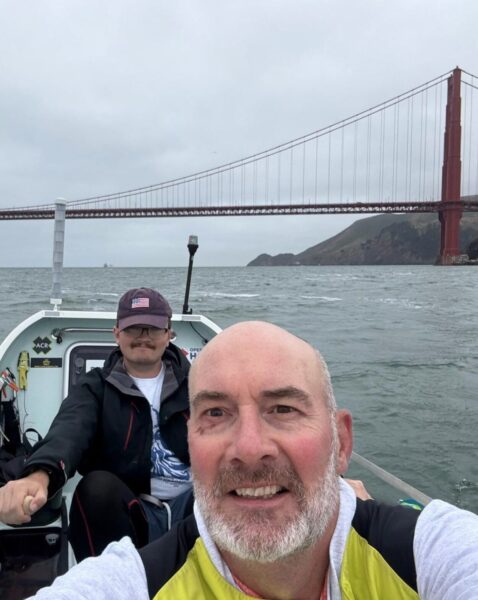
The pair started on June 3, and getting used to the exhaustion of rowing for hours at a time was a struggle. Exhaustion combined with strong winds forced them onto their para-anchor after just two days.
Their difficulties did not stop there. In the first week, their autohelm broke, but they were able to fix it. They also had hair-raising moments when, on back-to-back days, their AIS alarm signaled huge container ships on a collision course with them. Both ships eventually changed course once advised that they were heading for a tiny rowing boat.
Indian Ocean
Ocean Revival (UK) - Matthew Mason, Jake Mattock, Matthew Inglesby, and Mathew Hemmings are rowing 8,500km from Australia to Tanzania. After just over a month, they have covered 3,375km.
Trade winds have forced them on a more northerly route to avoid poor weather. It might not be the most direct route, but it seems to have worked. Other than trouble with the wind, the heat has been brutal, with consistent temperatures of around 35°C.
At the start of June, a storm forced them onto their para-anchor for a few days. This trapped them in their cabins in the sweltering heat. In case of a capsize, their hatches were closed, making the heat even worse.
Untamed (BG, NL, CN, UA) - A second independent foursome is attempting to row from Australia to mainland Africa. Evgeny Sudyr, Liu Yong, Ralph Tuijn, and Stefan Ivanov are rowing 9,000km from the west coast of Australia to Kenya.
They were aiming to finish in 75 days, but this seems unlikely. After 30 days, they have covered 3,120km. They are maintaining a good pace, but the Indian Ocean is notoriously tricky, even with their experienced team. Tujin has made 12 ocean crossings, Ivanov has made successful crossings of the Atlantic, Southern, and part of the Arctic Ocean, and Yong has rowed the Atlantic.
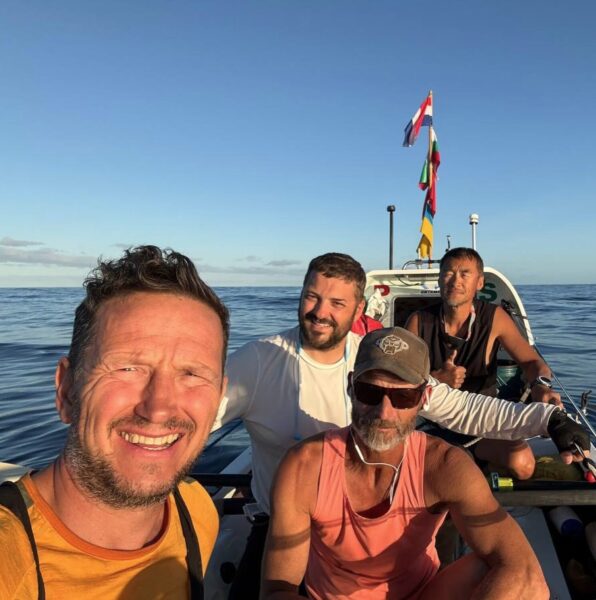
Technical problems are another reason for their slower-than-expected pace. First, their watermaker broke, though Sudyr and Ivanov fixed this after a few hours playing around with a tangle of cables. Then, just days later, they ran out of power. Every system went down, and steering and navigation became manual tasks. The power cut began at night, and fortunately, the problem rectified itself once the sun returned.
One day later, Yong broke out in a full-body rash. They have not disclosed what caused this or how it was rectified, but did say Yong stopped rowing until their medical team said he could continue.
Their run of bad luck did not end there. The very next day, their rudder broke at 4 am. After drifting along until daylight, they were able to fit their spare rudder.
Around Britain
52 Degrees North (IE/UK) - The three-man crew of David Irving (IE), Rod Tredgett (UK), and Scott Brown (UK) is rowing 2,700km around Great Britain. The trio started from Tower Bridge on June 9 in a clockwise direction. They have covered the first 100km of the route along the south coast of England.
Within days, challenging weather forced them onto their para-anchor for 48 hours. Rowing around Great Britain might seem simple when compared to an ocean crossing, but the UK has powerful tidal currents and ever-changing conditions. You can only row during tidal windows and have to navigate the coastline and several busy shipping lanes.
The deepest shipwreck ever found in French waters has been discovered in the Mediterranean off southern France. The 16th-century merchant ship lies an astounding 2,567m down.
The French Navy stumbled across the wreck in March 2025, south of Saint-Tropez, during a routine seabed mapping mission. When the drone's sonar picked up an unusually large structure, the curious operators sent down a remotely operated vehicle to investigate. What it captured was incredible -- the remains of a wooden ship that has laid untouched for centuries.
The wreck, now called Camarat 4, is a Renaissance merchant vessel, roughly 30 meters long by 7 meters wide. Experts believe it sailed from Italy, loaded with ceramics, cookware, and metal bars. Images show around 200 glazed ceramic jugs, 100 yellow plates, two cauldrons, and six cannons among the wreckage.
Many of the jugs bear the monogram “IHS” etched into them, the first letters of the Greek name for Jesus, or are adorned with geometric and plant-based patterns. The detailing on the jugs suggests they came from the Liguria region in Italy.

Frozen in time
Marine archaeologist Marine Sadania, who is part of the team leading the study, described the wreck as “frozen in time.” Its depth has kept it almost perfectly intact, preventing looting of any of the items. As a result, it offers an incredibly rare window into Renaissance maritime trade and shipbuilding.
This shipwreck now holds the record as France’s deepest ever discovered, surpassing the previous title holder, the submarine La Minerve, found in 2019 at 2,300m down.
Researchers plan to digitally map and study the wreck. Using high-resolution photography, they are building a complete 3D model of the site that will capture every detail, from the woodwork to the ceramic decorations. Robotic arms will recover a few select objects to gain a fuller picture of life aboard the ship; the rest will remain in place.
Jim Mee is kayaking laterally across the British Isles. On June 1, the 47-year-old began paddling from the east coast of England, bound for the west coast of Ireland, 1,000km away.

Starting from the Humber Estuary in early June, he hopes to cover the route in about three weeks. It weaves together inland waterways, tidal rivers, canal systems, estuaries, and stretches of open sea, including 100km across the notoriously tricky Irish Sea.
“It will involve some really classic paddling stages, including the absolute blue riband of sea paddling in this country –- a full crossing of the Irish Sea from Holyhead to Dublin,” Mee told The York Press.
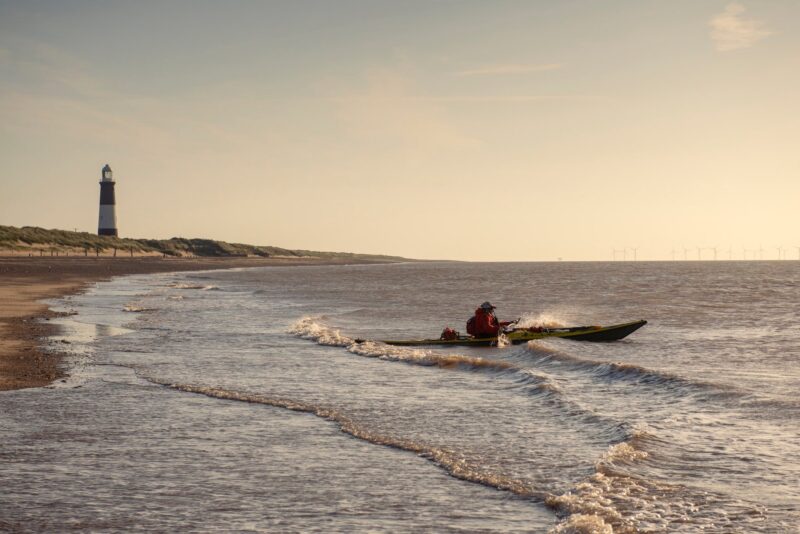
Mee founded Rat Race Adventures, a tour company that designs one-of-a-kind outdoor challenges for its participants. Previously, Mee has cycled coast to coast in the Andes and across frozen lakes in Mongolia, and has traveled to 86 countries. He also wants to show people that adventure doesn’t always require far-flung destinations.
"What I also love about this challenge is that it takes place in my backyard," he says.
Five-year plan
Mee has been planning this for five years, carefully mapping a continuous route down the rivers and canals that crisscross the country. On land, a small safety team helps him resupply and updates him on conditions. Each leg of the journey requires careful timing to align with tides and favorable weather.
The conditions have become more challenging as he moved across Wales and toward the coast of Ireland. Two weeks in, he has just completed his crossing of the Irish Sea. Though most of his route is solo, a group of experienced sea kayakers joined him for the 100km crossing. He has provided few updates on his journey since starting, but you can follow his progress here.
When we’re not outdoors, we get our adventure fix by exploring social media and the web. Here are some of the best adventure links we’ve discovered this week.
The First Women to Complete the Yosemite Triple Crown: On June 8, Kate Kelleghan and Laura Pineau became the first all-female team to complete Yosemite’s legendary Triple Crown in a single push. They linked Mount Watkins, El Capitan’s Nose, and Half Dome in just 23 hours and 36 minutes.
Covering roughly 77 pitches, nearly 2,500 m of climbing, and 30 km of connecting runs, it is no surprise that only 11 other teams have managed the route in 24 years.
Scotland’s Epic 330km Bikepacking Adventure: The Badger Divide runs through the Scottish Highlands from Inverness to Glasgow. Covering roughly 340km, the cycling route passes lochs and glens, and crosses moors, forests, and up the relentless Corrieyairack Pass. Despite its growing popularity, the trail isn’t marked on maps or signposts.
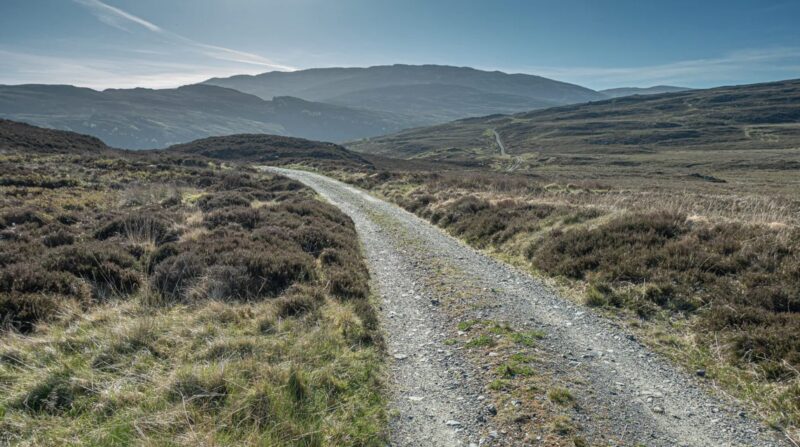
Reporting a shipwreck
What To Do If You Find A Shipwreck: Stumbling upon a shipwreck might seem unlikely, but with over 10,000 in North America alone, it could happen. If you find one, there are certain rules you should follow. First, resist the urge to treat it like buried treasure. It is crucial to leave artifacts undisturbed. In the U.S., it is illegal to take items from a shipwreck. You need to report the wreck to the authorities.
Amelia Earhart’s Reckless Final Flights: Amelia Earhart's 1937 round-the-world flight attempt made her legendary. Many describe her as an aviation hero, but pilot testimonies, flight logs, and overlooked technical records suggest she was undertrained and relied heavily on co-pilots and navigators.
After crashing in Hawaii just a few months before her fateful trip, Earhart took off with stripped-down equipment, no Morse code receiver, and a navigator with a drinking problem. Pushed by her husband and publicist George Putnam to finish the flight for book deals and headlines, Earhart pressed on and vanished over the Pacific Ocean.

Morocco's surfers
Breaking New Shores For Morocco’s Indigenous Surfers: Maryam El Gardoum started surfing when she was 11. From a young age, she battled sexism in the sport. At 13, a man pulled on her board's leash and told her, "This isn't your place, go home and help your mum." She went on to become a five-time national champion and one of the first Moroccan women to compete internationally. After an injury in 2022, she founded Dihya Surf School, the country’s only women-led surf school.
Rick Steves is Still a Travel Icon at Age 70: Guidebook legend Rick Steves is trading city squares and museums for alpine air and hiking trails. In 2021, he went on a six-day trek around Mont Blanc and has been hooked ever since. Now 70, he’s embracing long-distance hikes. He talks about recent and upcoming adventures, his secrets to enjoying hiking, and why influencers will never replace travel experts.

Ski fashion then and now
The Evolution of Ski Fashion: From the woollen stylings of the early 20th century to more technical ski wear today, style on the slopes is always changing. Starting with bulky ski skirts for women in the 1910s, by the 1950s, there were Bogners stretch pants. The 1980s brought neon onesies, quilted jumpsuits, and Gore-Tex. Now, there is edgy, oversized snowboarding apparel and the resurgence of the retro ski suit.
Surfing’s Nostalgia Virus: Sam George was surfing off California’s Point Conception, thinking about a famed 1960s line-up. But his friend brought him back to Earth, pointing out that surfers in the '60s had no wetsuits and terrible boards.
George takes a look at the modern advantages that those with the surfers' nostalgia virus take for granted: flexible wetsuits, surf forecasts, interchangeable fins, CAD-shaped boards, sturdier leashes, and safer surf travel.
It seems that people 1,700 years ago enjoyed the same battles of endurance that you might find today in a country pub. Archaeologists have uncovered a marble sarcophagus from the Roman era in Caesarea, Israel. Haut-relief sculptures on the sarcophagus show a wine-drinking contest between Dionysus, the Greek god of wine, and the legendary Roman hero, Hercules.
A joint team from the Israel Antiquities Authority (IAA) and the Caesarea Development Corporation found the sarcophagus buried beneath a sand dune outside the city’s ancient walls. Excavation leaders Nohar Shahar and Shani Amit described the discovery as something out of a movie.
“We began brushing away the light sand of the dune when the tip of a marble object suddenly emerged,” they recalled. “The whole team gathered around, and as we cleared more sand, we could hardly believe what we were seeing.”
A defeated Hercules
A main panel shows a defeated Hercules clutching a cup and apparently unable to stay upright. Meanwhile, a victorious Dionysus celebrates with an entourage of mythological creatures and revelers.
Researchers believe the scene represents more than a mythological boys' contest, that it symbolizes the soul’s passage from the physical world to the afterlife.
“The figures are not only celebrating, they are accompanying the dead on their last journey, when drinking and dancing are transformed into a symbol of liberation and transition to life in the next world,” said Shahar.
Shahar also noted that this is the first time archaeologists have found the Dionysus-Hercules wine contest depicted on a burial coffin in the region. Similar scenes appeared in the 2nd and 3rd centuries, but they were typically found in mosaics, not sculpture.

Although discovered in Israel, the artists likely used marble quarried from northwestern Turkey, since there were no local marble quarries in ancient Israel. Archaeologists think that the piece was created in Turkey, with some final details added after it arrived in Israel. The elaborate design and imported materials make it very clear that a wealthy family that “enjoyed a certain lifestyle" commissioned it "as a fitting reflection of their identity.”
For eight decades, a local legend spoke of an old car that had sunk beneath the surface of Lake Minnewanka in Alberta's Banff National Park. The story started so long ago that people were unsure if it was actually true. Now, a group of divers has found the vintage car.
Passed down through generations, the story tells of a man who drove his vehicle out onto the frozen lake. As he stopped on the ice to set up his camera, the ice cracked. He could only watch on as his car sank into the lake. This likely happened sometime in the late 1930s or early 1940s. The exact details of the incident have faded over time.
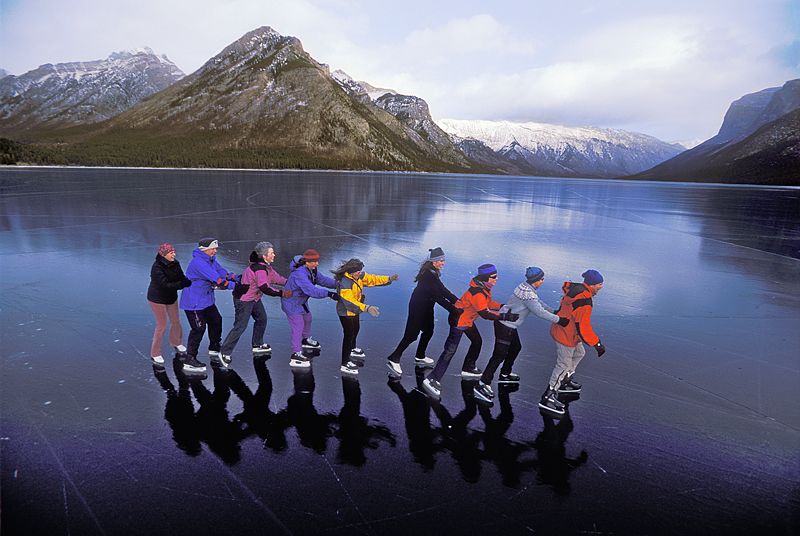
The scuba-diving grapevine
Divers John Ryan, Alan Keller, and Brian Nadwidny heard about the car through the scuba-diving grapevine and decided to see if they could actually find it.
“We found it because there were people in the lake a few years ago doing some searching for other purposes,” Keller told the Canadian Broadcasting Corporation. "And so they came across this target. And of course with the world being a small place and scuba divers being a small community, they shared that information with us."
After about seven minutes of searching, they spotted the old car, which lay 55m down. The lake's frigid temperature had preserved it remarkably well. Keller described the excitement they felt when they made the discovery.
“It was a state of like, 'Holy cow, we actually found it,' " said Keller. "To be able to find something so small on a first go, but also to be the first people to lay your eyes on it after 85 years was pretty spectacular.”
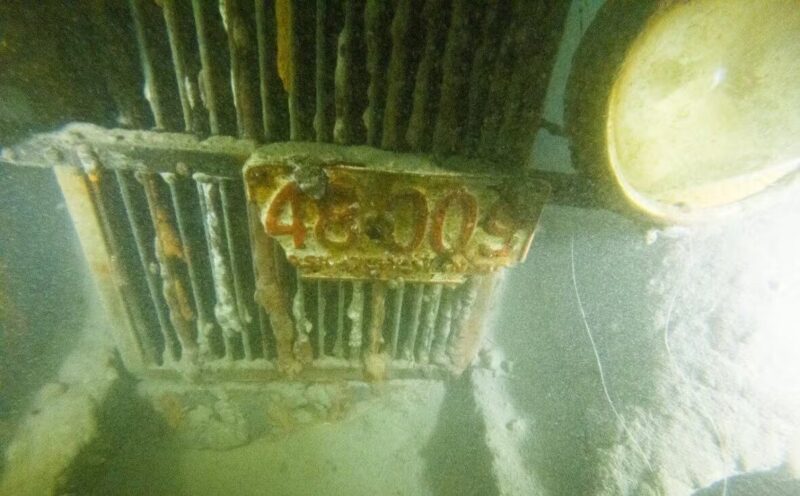
The group thinks the car is a 1928 Hudson Essex Saloon. It still bears its Saskatchewan license plate, number 48009. Sitting upright on the lake bed, its body largely intact, you can even see the park pass from some angles.
Although divers cannot remove the car due to its location in a protected national park, they have captured detailed photos and video, offering a rare glimpse into a piece of lost history. Parks Canada has confirmed that the vehicle poses no environmental risk and will remain in place.
Researchers have finally confirmed that a long-sunken hulk off the coast of Colombia is none other than the San José. The legendary Spanish galleon, which vanished beneath the waves of the Caribbean 300 years ago, has been dubbed the “world’s richest shipwreck.” Now the big question is, who does the treasure belong to?
The San José was first launched in 1698 and was the flagship of the Spanish treasure fleet. In 1708, it was carrying gold and jewels from Peru to Spain that would help fund the War of Spanish Succession. As the ship approached Cartagena, Colombia, British naval forces attacked. During the melee, the gunpowder stores on the San José ignited, sinking the ship. Nearly 600 crew members perished as the ship went down with its vast cargo of gold, silver, emeralds, pearls, and other treasures.
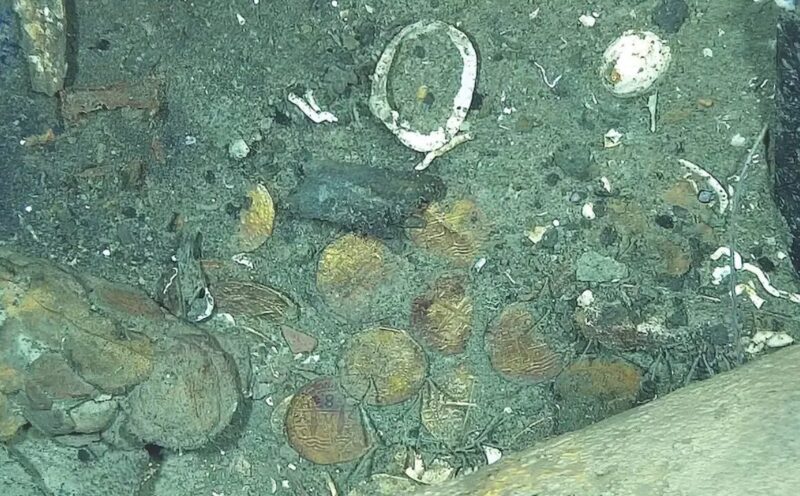
For centuries, the wreck remained lost beneath the sea. Two groups claim they discovered the famous shipwreck. U.S. salvage company Glocca Morra (now Sea Search Armada) insists that it first found the location of the ship in 1981. Then, in 2015, the Colombian navy, working with marine archaeologists, located the actual remains of the galleon using underwater drones.
At a depth of around 600m, it is too deep for divers to access. This made it hard for researchers to confirm that it is definitely the San José. The Colombian navy has been using remotely operated vehicles to survey the wreck. The key to proving that it is the San José has been the gold coins scattered on the ocean floor.
Process of elimination
The lead author of a new study, Daniela Vargas Ariza, explained how these coins allow dating of the wreck and its demise through a process of elimination. These particular coins, known as "cobs," show mint marks from Lima, dated 1707. They also have castles, lions, Jerusalem crosses, and other Spanish imperial symbols imprinted on them.
“The finding of cobs...points to a vessel navigating the Tierra Firme route in the early 18th century," said the paper. "The San José galleon is the only ship that matches these characteristics.”

This Holy Grail of shipwrecks is now at the center of a legal battle. Colombia claims it is the sole owner of the wreck under its national heritage laws. They argue that as the ship lies within its territorial waters, it belongs to them. But others want to stake their claim over the ship and its $16 billion of treasure.
Spain contends that the San José is a Spanish ship and so it is Spanish state property. Sea Search Armada says it was the first to identify the general location of the wreck in the 1980s and so should receive some of the compensation. Indigenous communities from countries like Peru and Bolivia are also asserting claims to the treasure since most of it was pillaged from them when they were under Spanish colonial rule.
After hearings in Colombia and the U.S., the decision about who owns the most valuable shipwreck in the world will lie with the Permanent Court of Arbitration at the Hague.
Turkmenistan's "Gateway to Hell" is a fiery pit that has burned continuously since 1971. After over half a century, the inferno may finally be subsiding.
Officially called the Darvaza crater, it sits in the middle of the Karakum Desert. How the 69m wide, and 30m deep hole formed is a bit of a mystery. Some believe the pit was created by Soviet geologists in 1971. While drilling for oil, they hit a vast underground gas pocket. The ground surrounding it collapsed, forming three huge sinkholes. To prevent the hazardous methane gas from escaping, the team set the crater on fire. Apparently, they assumed the fire burn out in a few weeks, but the flames have persisted for over five decades.
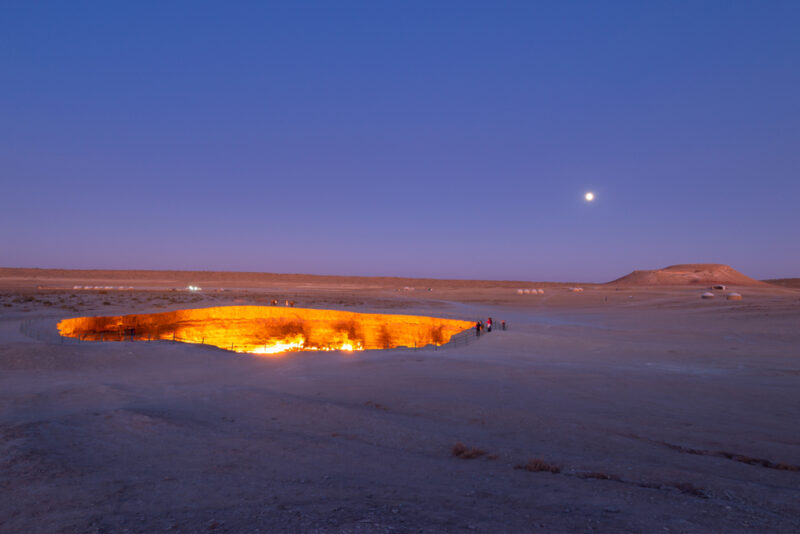
An alternative beginning
Though this is the most common explanation, geologists from Turkmenistan have said the crater actually formed in the 1960s and was ignited in the 1980s. As its creation happened when Turkmenistan was part of the Soviet Union, any records to clarify the crater's origin are hard to come by.
Regardless of its beginnings, the Darvaza crater has been a significant source of methane emissions. The greenhouse gas has gushed into the atmosphere for over 50 years. Turkmenistan has faced scrutiny for its methane output and inability to curb methane gas leaks. This not only produces harmful emissions but wastes natural gas. For decades, scientists and environmentalists have been calling for the fire to be extinguished.

In recent years, the Turkmenistan government has intensified efforts to lessen the crater's environmental impact. By drilling several wells around the site to siphon off methane, engineers have reduces the fuel feeding the fire. Now, as a result, the flames have finally started to diminish.
Irina Luryeva, a director at the state-owned energy company Turkmengaz, noted that the blaze, once visible from several kilometers away, now emits only a faint glow. Officials report that the fires are now three times smaller than they were.
Yet this so-called Gateway to Hell has become the secretive country's top tourist attraction, drawing visitors intrigued by its otherworldly appearance. Tour operators have expressed concern over the potential decline in tourism as the flames wane.
When we’re not outdoors, we get our adventure fix by exploring social media and the web. Here are some of the best adventure links we’ve discovered this week.
Lion Steals Photographer’s Camera Lens: A cheeky lion in Kenya’s Maasai Mara National Reserve grabbed a photographer’s dropped telephoto lens, complete with its camouflage cover, and casually sauntered off with it. It later dropped it near a safari truck. While the photographer managed to retrieve the lens, the hefty cat had already inflicted some damage on the expensive gear. Fellow safari-goer Dansen Raddy Raddy captured the moment on video.
A Historic Backpacking Trail is Open Again: The historic Chilkoot Trail is now fully open again. It has been closed for five years due to flooding. The 53km trail runs from Dyea, Alaska, to Bennett in British Columbia. The problem is that you will struggle to hike more than half of it. The U.S. is banning entry into the country via the trail, and whether you will be able to cross into Canada in the other direction is still pending review by Canadian authorities.
Climbing During Pregnancy: Vera Sugar shares her honest account of navigating rock climbing through all three trimesters. She explores how the changes in her body reshaped her approach and changed her capabilities. With no universal "rules" for climbing while pregnant, she urges fellow climbers to listen to their bodies, resist one-size-fits-all advice, and tailor their choices based on their own experience and comfort.
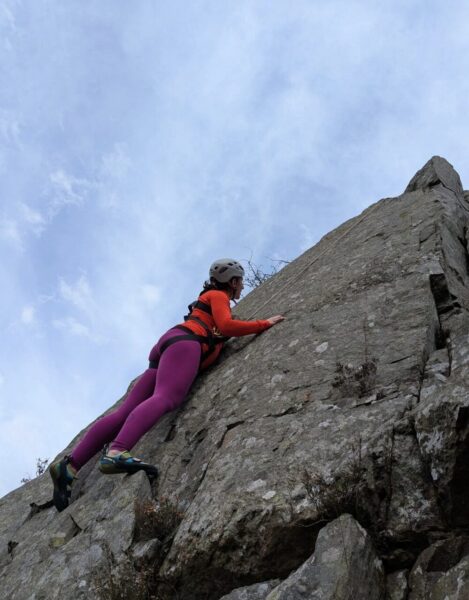
Expedition paddling 2025
Meet the Gen Z Paddlers Proving Expeditions Aren’t Dead: Some Gen Z paddlers are shaking off the stereotype of being obsessed with social media and their smartphones and heading out on adventures. Their crowd‑funded expeditions are redefining modern adventure paddling. From the all‑female 1,900km canoe voyage from Lake Superior to Hudson Bay to Indigenous youth charting a new first descent of the restored Klamath River, from solo cross‑country journeys to a pirate‑costumed Great Loop circumnavigation, these imaginative trips show that expedition paddling is as vibrant as ever.
Hiker Faces Eye-Watering Fine: A hiker in Spain’s Picos de Europa National Park is facing a staggering $227,000 fine after being filmed tossing a large rock down a gorge along the Cares Trail. The Civil Guard has deemed the act a “very serious offense” due to the potential harm it could have caused fellow walkers and its damage to the environment.
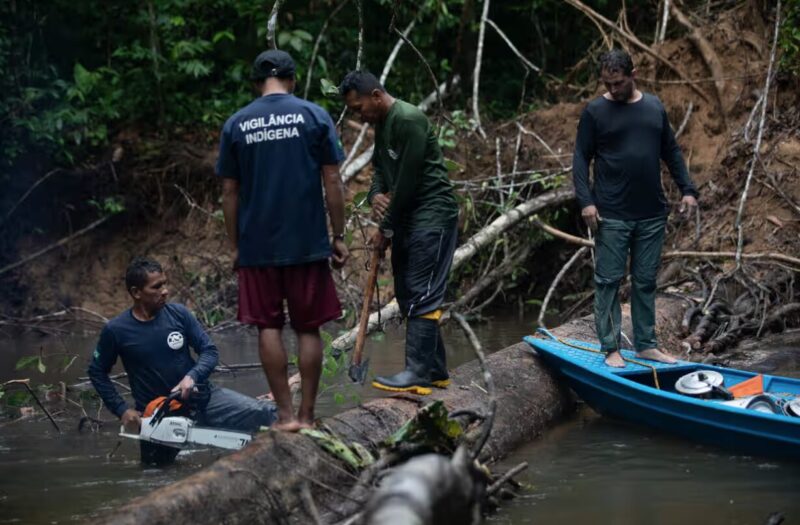
An Amazon tragedy revisited
A Treacherous Amazon Journey Tracing the Steps of Murdered Colleagues: Last month, The Guardian joined Indigenous patrols through Brazil’s Javari Valley to retrace the final, fatal trip of journalist Dom Phillips and activist Bruno Pereira. The pair was murdered in 2022. The organization that Pereira founded to defend the land from illegal mining and poaching led the initial search to discover the fate of the disappeared pair.
The Yosemite Big Wall Permit System: Since January 2023, Yosemite National Park has required climbing permits for all overnight big-wall climbs. The system was developed after a two-year pilot. During peak times from June 15 to August 15, timed-entry park reservations are also required.
Rangers will then provide daily big-wall traffic updates on social media about the number of climbers on the most popular climbs. They hope this will help curb overcrowding.
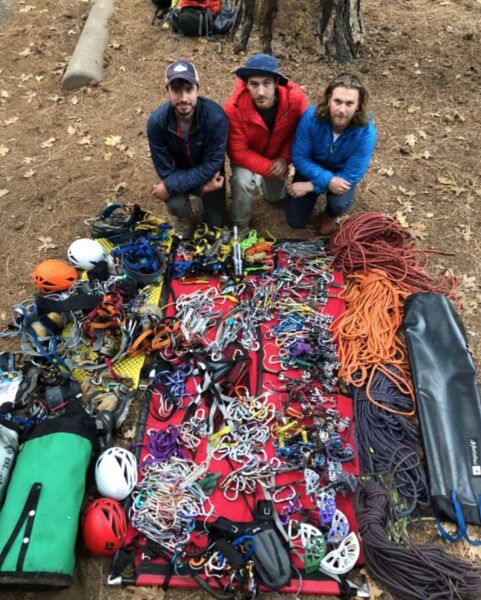
In over their heads
What You Can Learn From the Mistakes I Made on ‘The Nose’: Alek Pouliopoulos writes about his failed attempt on ‘The Nose’ and what other climbers can learn from it. ‘The Nose’ was his lifelong goal, and he felt he needed to accomplish it to be a real climber.
Looking back on his attempt with two friends, he reflects that it was doomed before he even started. With hugely overpacked haul bags, slow transitions, and embarrassing themselves in front of some legendary climbers, they quickly realized they were in over their heads and retreated.
The tooth-billed pigeon, often dubbed the "little dodo," is one of the most elusive birds in the world. There are fewer than 100 left in the wild, and no one has photographed one since 2013.
Found only in Samoa, this critically endangered pigeon is uniquely adapted to island life. Its strong, curved beak allows it to eat tough native fruits. Between 4,000 and 7,000 roamed the island as late as the 1980s. Unfortunately, habitat destruction, hunting, and invasive species have pushed the bird to the edge of extinction. Locating one in the wild has been nearly impossible for years.
Now, the Colossal Foundation and several conservation partners have joined forces to find the bird using sound. The Colossal Foundation is part of Colossal Biosciences, the company best known for trying to revive extinct species like the woolly mammoth and the dire wolf.
The bioacoustic effort involves placing recorders in the forest to capture the sounds of wildlife. Later, researchers use AI to pick out the sounds that belong to the tooth-billed pigeon. By filtering thousands of hours of rainforest sounds, the AI algorithm can pick out promising audio clips that might reveal the bird's presence.

Bird sounds are like fingerprints
Sounds are critical identifiers for birds, and expert birdwatchers use sound more than sight to identify birds for their life lists. Birds call to attract mates, defend territory, and communicate with their young, and their calls are often as distinctive as fingerprints. That’s why bioacoustics has become an increasingly valuable tool in conservation, especially in hard-to-access areas.
A few researchers had previously attempted to use sound to find the endangered bird, but analyzing the data proved too difficult. Conservation officer Moeumu Uili, whose photo of a tooth-billed pigeon in 2013 is the last-known trace of it, admitted that "a significant gap remained in data analysis skills, limiting our ability to process results."
Colossal stepped in to address the issue. Using a five-minute audio clip of three tooth-billed pigeon calls recorded at Germany's Berlin Zoo in the 1980s, they created their AI algorithm. It analyzes recordings made in parts of the forest where the bird once lived. In a major breakthrough, it has identified 47 possible calls that offer hope that the Little Dodo may have survived.
While Colossal brings machine learning and acoustical analysis to the collaboration, the Samoa Conservation Society gives local knowledge and boots-on-the-ground support. Their team also installs and monitors the recording devices.
Verify the bird's existence is the first step to preserving its habitat and helping the population recover.
We are the worst primates when it comes to wound healing, according to a new study. Our wounds heal nearly three times slower than those of chimpanzees, our closest living relatives, and other primates and mammals.
Evolutionary biologist Akiko Matsumoto-Oda was watching wild baboons in Kenya when she noticed their wound-healing abilities. The monkeys could be very violent and aggressive with each other, and often sustained injuries.
“I was struck by how rapidly they recovered — even from seemingly severe wounds,” she told The New York Times.
Her intrigue triggered new research at how skin wounds heal in a controlled environment for various primates and mammals. The study included humans, chimpanzees, olive baboons, Skye’s monkeys, vervet monkeys, mice, and rats. The 24 humans were all volunteers and patients from Japan's University of the Ryukyus Hospital. All were having skin tumors removed.
The monkeys, rats, and mice came from various research facilities. Some had been injured in fights. A very few were anaesthetized and surgically wounded. “As a field researcher, I personally believe that invasive studies should be minimized,” Matsumoto-Oda explained.
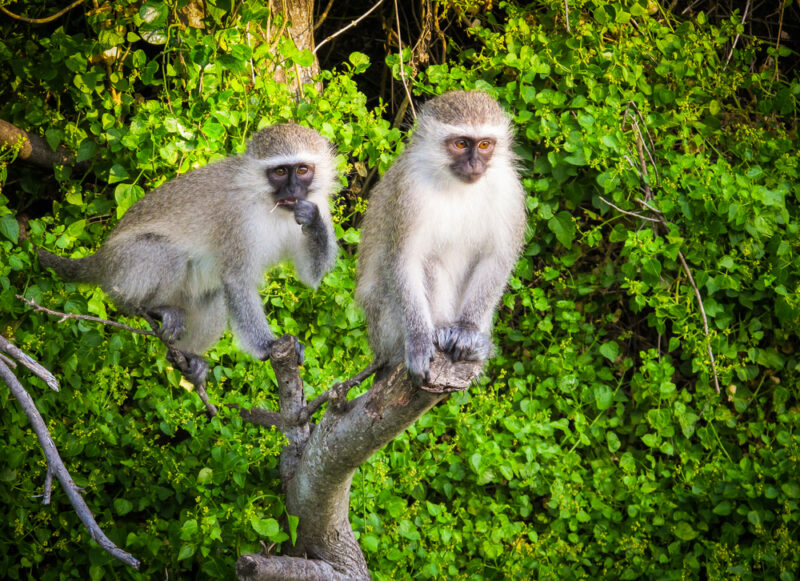
Human skin regrew 2.5 times more slowly
Humans regrew their skin at around 0.25mm per day, while the other primates and mammals exceeded this. Skin regrowth proceeded at approximately 0.62mm per day. The team discovered that there was no significant difference in the healing rate of the other primates or between the other primates and the rats and mice.
Why humans heal so much more slowly seems to lie in our evolutionary past.
“We found that chimpanzees exhibited the same wound-healing rate as other non-human primates, which implies that the slowed wound-healing in humans likely evolved after the divergence from our common ancestor with chimpanzees,” says Matsumoto-Oda.
The exact reason for this is unknown, but one possibility is our loss of body hair. Unlike most mammals, we developed a dense network of sweat glands to cool down more efficiently. This adaptation helped early humans survive in hot climates and allowed them to run and hunt over long distances without overheating. However, this trade-off came with a hidden cost.
Animals covered in hair are also covered in hair follicles, and these contain stem cells. Usually used in hair formation, these stem cells appear to give other mammals an edge when they have a cut or scratch.
British sailor Ella Hibbert is sailing alone around the entire Arctic Circle. If successful, she’ll be the first person ever to complete the 16,000km route solo and in a single season.
Last week, the 28-year-old set off from southern England and has since made her way up the east coast. Her official start point is the Arctic Circle (66.5°N latitude) between Norway and Iceland. From here, she will sail around Iceland, southern Greenland, through the Northwest Passage, then across northern Alaska, and into Russian waters. She will then cross the Northeast Passage and eventually return to her starting point before heading back to the UK.
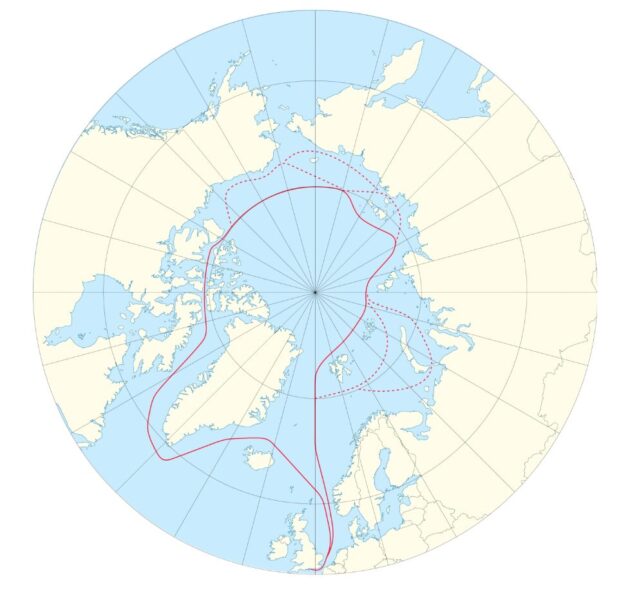
“It all started with my fascination with the Arctic,” she told ExplorersWeb. “I’d read about the Erebus and the Terror, that doomed early expedition. Then, as I got deeper into sailing, I started seriously thinking — could I go through the Northwest Passage myself? That idea evolved into this: a full circumnavigation of the Arctic, solo, to raise awareness of [the disappearing sea ice].”
A sailing instructor by trade, Hibbert has been organizing the project since 2022. “When I first said out loud that I was going to do this, I had no boat, no funding, and no idea how. But saying it made it real.”
First, find a boat
Her first priority was finding the right vessel. She had four must-haves: a boat under 12 meters (for easier solo handling), a steel hull (for safety in icy waters), a ketch rig (for sail versatility), and a doghouse to shelter from Arctic weather. After over a year of searching, she found Yeva, an 11.5-meter Bruce Roberts ketch built in 1978. There was only one problem -- the boat wasn’t for sale.

“I had to convince the old owner to part ways with her," she said. "I didn't have the money that he wanted for her, so I ran a crowdfunding page that raised a 20% deposit on the cost of the boat he was asking for. That was enough to convince him to let me pay off the rest month by month.”
Once Yeva was hers, the refit began: new engine, rigging, sails, electronics, and more.
“There’s not much on Yeva that hasn’t been replaced or serviced,” Hibbert said.
The sails are made from recycled plastic bottles, and she’s equipped with solar, wind, and water power generators.
“We've put all sorts of equipment on her, but my favorites are the hydrovane for self-steering without having to use electricity, which means less fuel consumption. And the water generator, which is an incredible bit of kit. If I'm sailing over four knots, it generates enough electricity to power the entire boat.”
Alongside the boat work, Hibbert has been preparing herself for total self-reliance.
Medical training
“I've done quite a lot of medical training, so I can put a cannula in my own veins for IV drips and morphine. I can do my own stitches and sutures. I’ve made sure that I know how to fix everything there is on the boat, so mechanics, electrics, and engineering. It's been a lengthy process, but we finally made it."
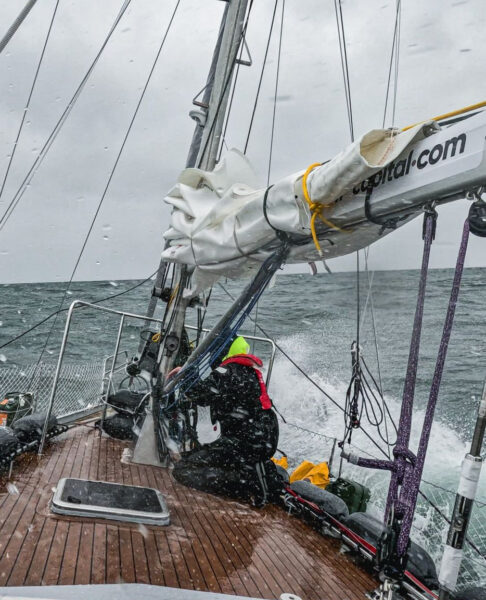
She already has some solo experience, including a three-and-a-half-month training voyage in 2024.
“[I] sailed her over to Southern Norway, then did Southern Norway all the way up to Longyearbyen, and back down to Shetland and Scotland by myself. I absolutely loved it and managed to learn the aspects of single-handed sailing that I was unfamiliar with before.”
In the Arctic summer, she’ll have constant daylight. That helps with ice navigation but makes sleeping trickier. She thinks sleep deprivation may well be her biggest challenge.
Sleep deprivation
“It will be almost 24/7 daylight. If there's any ice nearby, any ice within sight of the vessel, I won't be sleeping. Even when the boat is moving, I will aim to sleep in 20-minute naps, get up, check everything...Obviously, that's not sustainable for six months, so there will be times when I anchor for longer rests. Certainly, when the current is against me in places like the Northwest Passage, where the currents are too strong for me to try and sail into anyway.
"If I'm in an area of open water that's ice-free, then I could do a tactic called heaving to, which is where you cross the sails over so that she can actually move forward through the water and she just drifts on the current and I could get a longer rest that way as well."
" caption="false"]
Russian Arctic
Sailing through the Russian Arctic is rare for a solo sailor, and getting permission was a bureaucratic nightmare.
“The main challenge was finding out who the right person to talk to was. It took about a year and a half to get those permits together, mainly because of the sanctions, not being able to look up online or email the right people. But once we managed to get a hold of them, they have been really lovely, supportive, and helpful. They've actually given me an extra two weeks' allowance in my time frame to do that compared to what I originally asked for.”
She’s aware she likely won’t see another foreign yacht in Russian waters.
“There will be Russian icebreakers, and inevitably, fishing and shipping traffic. So not many boats of my size, but there are help and resources there if needed. Although obviously not as easily accessible as on the other side, in the Northwest Passage.”
The Northeast and Northwest Passages are notoriously tricky passages of water, and Hibbert is not sure which will be harder.
“It depends on where the ice is and on the weather. There are fewer fault holes and islands along the Northeast Passage for shelter. But there is slightly more open sea room, so it might be slightly easier to navigate than the Northwest Passage.”
All about the ice
The ice will play a key role in whether the expedition is successful. Hibbert will continuously assess the route and whether it is possible to complete it this season.
“There is a possibility of the ice being blown toward the Russian coastline for long enough that I don't make it through the Northeast Passage. I won't push into Russia unless I'm happy I can get out the other end, because it's the last place that I want to get stuck for a winter alone in the ice or even in port. So, Nome, Alaska, is the halfway point of deciding whether we keep going. It will be up to the people sponsoring and funding the expedition as to whether we try again or pause and restart next year.”
Despite the huge number of challenges she knows she will face, Hibbert is full of excitement. “I can’t wait to see my first iceberg. Hopefully narwhals. Maybe even a polar bear — from a safe distance.”
When we’re not outdoors, we get our adventure fix by exploring social media and the web. Here are some of the best adventure links we’ve discovered this week.
Investigating AI Manipulation of Viral Chinese Paraglider Video: Zsolt Ero discusses the authenticity of a widely circulated video featuring Chinese paraglider Peng Yujiang's ascent to 8,598m. ExplorersWeb has taken down its initial article pending an investigation into whether AI created or altered the footage.
Ero, an experienced paraglider, identifies inconsistencies suggesting that the video comprises a mix of genuine and AI-generated scenes.
What I Learned Walking Britain’s Entire Coast: In 2015, Quintin Lake embarked on a five-year, 11,000km solo journey around Britain's mainland coast, starting at St Paul's Cathedral, London.
A photographer, Lake's expedition resulted in a visual archive of Britain and gave him a deeper understanding of Britain's history, geography, and identity. Here, he discusses the island's beauty and regional distinctiveness.
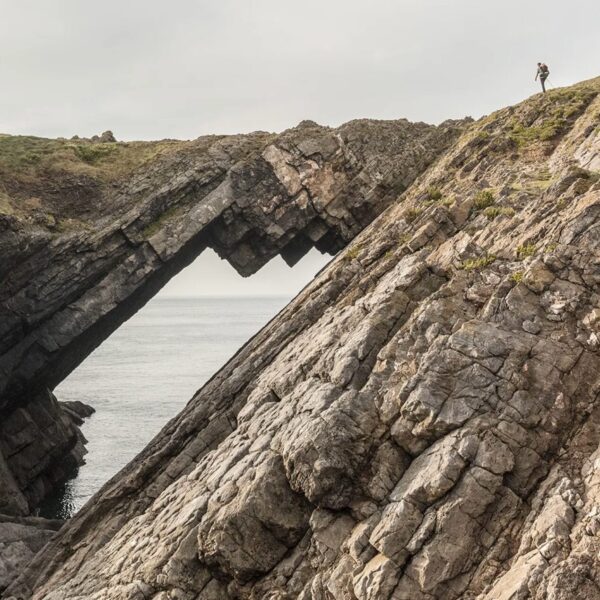
Everest climber nabbed at airport
‘Quickest’ Everest Climber in Currency Controversy: Nepalese authorities arrested Andrew Ushakov (who reportedly climbed Mount Everest from sea level in New York to the summit in just under four days) at Kathmandu’s Tribhuvan International Airport for carrying $20,000 in undeclared cash. Nepalese law requires travelers to declare foreign currency exceeding $5,000. Ushakov has since been released and blames the arrest on a misunderstanding.
Hikers Mistakenly Report Companions' Death: Two hikers on Cascade Mountain in New York's Adirondacks called emergency services to report that the third person on their hike had died.
However, a state forest ranger found that the supposedly deceased hiker was unharmed. His companions had eaten hallucinogenic mushrooms and imagined his demise.

The greatest kayaking expeditions
Greatest Kayaking Expeditions of the Century (So Far): Paddling Magazine has pulled together a strong list of the greatest kayaking expeditions this century. Their list features Jaime Sharp, Tara Mulvany, and Per Gustav Porsanger, who completed the first recorded circumnavigation of Svalbard's four main islands in 2015, a 2,300km journey involving several encounters with polar bears, and Jon Turk's 4,800km paddle from Japan to Alaska in 1999-2000.
What is The Salt Path and Can I Hike It?: Raynor Winn's memoir The Salt Path has been adapted into a film. Starring Gillian Anderson and Jason Isaacs, the film brings renewed attention to Britain's South West Coast Path.
The South West Coast Path stretches 1,014km from Minehead in Somerset to Poole Harbour in Dorset. The Salt Path follows Raynor and her husband Moth as they embark on this trek after losing their home and receiving a terminal illness diagnosis.
Dogsled heroes
How Greenland’s Dogsled Patrol Became the Unsung Heroes of World War II: The Northeast Greenland Sledge Patrol was a small unit of Danish, Inuit, and Norwegian volunteers who traveled northeast Greenland during WWII. Operating in extreme Arctic conditions, these dogsledders traversed vast, uninhabited regions searching for German weather stations, which were critical for the Nazis' military planning. Despite their significant contributions, the patrol's efforts remain largely unrecognized.
Tourist’s Photo Shoot with Tiger Goes Wrong: A terrifying incident at Tiger Kingdom in Phuket, Thailand, has reignited concerns over unethical "wildlife" tourism in the country. A viral video shows an Indian tourist being attacked by a chained tiger during a photo shoot. As the tourist kneels beside the tiger for a photo, its keeper uses a stick to get the animal to sit down. The tiger lunges, knocks the tourist to the ground, and attacks him. The man reportedly escaped with minor injuries.
A new dwarf planet named 2017 OF201 has been discovered far beyond Neptune. It sits in a region previously thought to be empty. Its existence raises questions about the structure of our solar system and the hypothetical Planet Nine -- a hidden, massive planet hiding somewhere out there in the outer reaches.
The dwarf planet's orbit is such an elongated ellipse that it takes around 25,000 years to make one orbit of our sun. At its closest, it sits approximately 6.66 billion kilometers away from the sun. At its furthest, it is a staggering 244 billion kilometers, about 54 times further away than Neptune. This giant orbit suggests that gravity from other massive bodies could be influencing it, possibly even a mysterious Planet Nine.
This theory suggests that a large, unseen planet, about 5 to 10 times the mass of the Earth, lurks in the distant regions of the solar system. Its advocates believe that it is large enough to influence the orbit of objects beyond Neptune. The problem is that the orbit of 2017 OF201 does not align with the gravitational patterns predicted by the Planet Nine hypothesis. It orbits in a different direction from one that would be influenced by Planet Nine. However, some researchers pointed out that the study of 2017 OF201 only considers one specific orbit of Planet Nine in its calculations.
The size of Pluto
Astronomers estimate that 2017 OF201 is about 700 kilometers in diameter, similar to Pluto, the former planet reassigned to dwarf planet status in 2006. Because of its elongated orbit, it is visible from Earth for only brief periods, making further observations challenging.
Planet Nine aside, the existence of this dwarf planet challenges the idea that the outer solar system has few sizeable objects in it. It is now likely that many more distant objects are out there, still detected. This would reshape our understanding of the solar system's architecture.
Earlier this year, two amateur metal detectorists unearthed a pair of striking 1,400-year-old artifacts in Wiltshire, England. The gold-and-garnet raven's head and a gold ring with triangular garnet detailing date back to the Anglo-Saxon era.
Paul Gould and Chris Phillips made the discovery on January 8, during a metal detecting rally organized by the 9th Region Metal Detecting Group. Gould found the flattened gold and garnet ring. Shortly after, Phillips uncovered the intricately decorated raven's head. Experts believe the raven's head, which weighs 57 grams, was likely part of a larger object, possibly a drinking horn.
“This is the find of a lifetime…It's unbelievable — I'm a bit emotional," Phillips said in a YouTube video.
In early Europe, ravens were often associated with death. In German and Norse mythology, they were linked with Odin, the Norse god of war. Whether this artifact represented these themes is unclear. The use of garnet and gold was not uncommon during this era. It accurately reflects the level of craftsmanship and techniques from other notable finds, such as those of the Anglo-Saxon burial ship site at Sutton Hoo.
Following the correct procedure, Gould and Phillips properly reported the objects to the local finds liaison officer. Both items are now being cleaned and studied by experts at the British Museum.
Speaking to Live Science, Phillips said, "The finds will go through the treasure process now, which will take a while.” Anything with precious metals that is over 300 years old qualifies as a piece of treasure under the UK Treasure Act. The discovery of two objects so close together suggests the area may yield further treasures from the past.
In June 2023, the world was horrified by the implosion of the Titan submersible during its descent to the Titanic wreck site. Two years later, new footage reveals the moment disaster struck.
The video, obtained by the U.S. Coast Guard (USCG), shows Wendy Rush, wife of OceanGate CEO Stockton Rush, aboard the submersible's support vessel. She is sitting at the computer that sent and received messages from the sub. As she monitors the data, a bang that sounds like a car door slamming is heard.
Unaware of its significance, she asks, "What was that bang?" Moments later, a delayed text message from Titan comes through, saying it had dropped two weights. At this point, the crew believed the dive was proceeding normally. Investigators have now confirmed that the slamming sound was the sub's catastrophic implosion at around 3,300m.
All five individuals aboard the Titan perished instantly: Stockton Rush, British explorer Hamish Harding, French diver Paul-Henri Nargeolet, and Pakistani businessman Shahzada Dawood with his 19-year-old son Suleman. The submersible's wreckage was discovered about 500 meters from the Titanic's bow.
Carbon fiber problems
Investigations show that the Titan's carbon-fiber hull showed signs of delamination—a separation of its layers—as early as a year before the fatal dive. Despite warnings from experts and former employees, OceanGate continued its missions.
Many questioned the use of carbon fiber in the submersible because of its tendency to delaminate. The USCG now believes that the carbon fiber layers started to separate during its 80th dive, a year before the fateful journey. Passengers on that 2022 dive described hearing a loud bang as they surfaced. At the time, Stockton Rush told them it was simply the sub shifting in its frame. The USCG says that data from the dive shows this was caused by delamination.
"Delamination at dive 80 was the beginning of the end, and everyone that stepped onboard the Titan after dive 80 was risking their life,” Lieutenant Commander Katie Williams from USCG told the BBC. The USCG plans to release its final report on the disaster later this year.
Oliver Widger and his cat Phoenix have sailed across the Pacific Ocean from Oregon to Hawaii. Widger had no prior sailing experience but taught himself all the skills necessary to navigate across the ocean with just his beloved pet for company.
Widger's journey started when he was diagnosed with Klippel-Feil syndrome, a rare spinal condition that comes with the risk of paralysis. He started re-evaluating his life, left his corporate job, cashed out his 401k, sold most of his possessions, and bought a 1990s sailboat. His plan: to sail around the world.
He knew it would be a solo endeavor except for Phoenix. Widger rescued him from a dumpster seven years ago when he was a kitten. Since then, the cat has been his steadfast companion. For Widger's sail around the world, Phoenix took on the role of first mate.
Learn to sail through YouTube
Purchasing the boat was relatively easy. Then came months of refitting and making sure it was seaworthy. Then Widger had to teach himself to sail, mostly through YouTube videos.
The pair left Warrenton Marina in Oregon on April 30 and landed in Hawaii 24 days later. The unlikely duo amassed over 2.7 million followers on TikTok and Instagram. When they arrived in Honolulu, a crowd of cheering fans, along with canoes and boats, turned out to greet them.
Speaking on why he and Phoenix have become so popular, Widger said, “I think a lot of people are, you know, you’re grinding at your job all day long and it doesn’t really matter how much money you make at this point, everybody’s just trying to do enough to get by and that just wears you out. It’s just the world’s in a weird place, and I think people have seen that it’s possible to break out.”
Travels with a cat
The most difficult problem throughout the sail occurred when the rudder failed. For three hours, the boat tilted precariously while he made repairs. Traveling with a cat has also created some unexpected tasks, such as ensuring that Phoenix can enter Hawaii without going into animal quarantine. Widger arranged for a mobile vet to sign off on the cat’s health as they came into the marina.
The second was figuring out what to do with cat feces, which is dangerous to the Hawaiian monk seal. To make sure none got into the water, Widger collected all of it and kept it onboard so that he could dispose of it on dry land.
Now in Hawaii, Widger plans to rest and repair his boat. He hopes to continue his voyage to French Polynesia, embracing the freedom and fulfilment he found at sea.
When we’re not outdoors, we get our adventure fix by exploring social media and the web. Here are some of the best adventure links we’ve discovered this week.
Skiing the Tetons' Enduro Line: On April 22, 2024, Adam Fabrikant, Mike Gardner, and Brendan O’Neill took on the Enduro Traverse. Starting at 6 pm in Death Canyon, they ascended Buck Mountain and skied down. They repeated this over Mount Wister, South Teton, Middle Teton, the Grand Teton, Mount Owen, and finally Teewinot Mountain. A few months later, Gardner died in a fall on Jannu East.
My Shipwreck Story: Alec Frydman recounts his first voyage as a commercial fisherman. A day in, Frydman and the captain, Mick, find themselves in the middle of a storm. Frydman is thrown overboard and watches as the boat capsizes, taking Mick with it.
Frydman floated in a small lifeboat for 13 days on the Pacific Ocean, suffering from dehydration and hallucinations. He was finally rescued by a Canadian ship near Vancouver.

Surviving a 60m fall
He Fell 60m During a Trail Race: Last summer, Stuart Terrill fell 60m during the U.S. Mountain Running Championships in Utah. Running down a scree slope, he lost control and fell over a cliff. He survived with four broken ribs, eight broken vertebrae, and multiple broken bones in his feet.
Returning to Climbing After an Accident: In 2019, Kate Armstrong and her husband were on an alpine route when a rock tore through their rope. Armstrong could only watch as her husband fell 30m to his death.
Even through the years of grief and PTSD, Armstrong knew she would return to climbing. She just didn’t know how long that would take. She switched from climbing to hiking, needing time in the mountains without worrying that another accident would happen. Five years later, she finally felt ready to climb again.
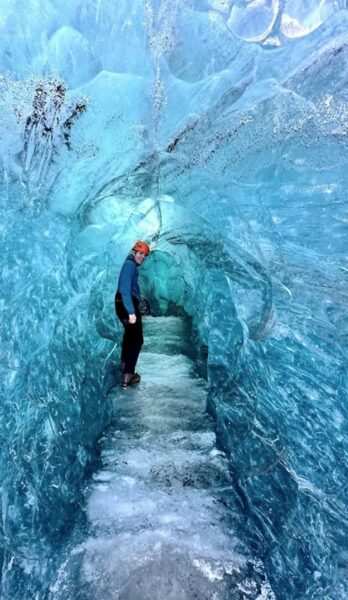
Iceland's disappearing glaciers
The Sounds and Songs of Iceland’s Melting Landscape: Researcher Konstantine Vlasis is exploring Iceland's rapidly melting glaciers and recording the changing sounds of the landscape. Inspired by a track from the Icelandic band Sigur Ros that featured a glacial stream, Vlasis recorded the sounds of glaciers, the subtle trickles of meltwater, and the sharp cracks of shifting ice. He then combined these sounds with traditional Icelandic songs to create an immersive audio story.
Inside Britain’s Underworld: In the 1990s, a group of UK cavers began exploring a previously unknown cave system beneath Gloucestershire’s Forest of Dean. Led by Paul Taylor, the group used dye tracing to reveal an underwater stream stretching over 2.5km. Over the decades, amateur speleologists have painstakingly excavated the site and unveiled one of Britain's most significant cave systems.
Backcountry survival
Hiker Survives for 24 Days on Wild Leeks and Snow: American hiker Tiffany Slaton survived 24 days in California’s Sierra Nevada mountains after she was caught in an avalanche.
After the avalanche, Slaton was left with just a knife, a lighter, and a few snacks. She began trekking toward civilization, enduring snowstorms, foraging for wild leeks, and melting snow for water.
Will Moss Becomes First Person to Flash El Cap in a Day: American climber Will Moss has become the first person to flash El Capitan’s Free Rider in a single day. It has been his goal for the last two years. Moss first went to Yosemite to try in 2023, but the route was too wet. In 2024, he couldn’t get climbing partners and weather windows to align. This week, he finally achieved his goal.
Since our last ocean rowing roundup, one crew has restarted their Pacific crossing and two new boats have taken to the Indian Ocean.
Pacific Ocean
The MacLean Brothers (UK): Ewan, Jamie, and Lachlan McLean are rowing from Peru to Australia. Five weeks into their journey, they have covered approximately 5,000km of the 14,000km and settled into a good daily routine, even if it is a little monotonous and draining.
The trio has rowed an ocean together before. In 2020, they broke the speed record for a trio crossing the Atlantic. Now they are hoping to do the same on our biggest ocean.
In the last week, they have struggled with the heat. Although they are making good progress, the combination of rising temperatures and exhaustion from constant rowing has started to impact their motivation. They are also struggling with their steering. The majority of the time, they use an autopilot, but theirs is starting to act up.
The autopilot's compass seems to forget which way is north. This adjusts the rudder accordingly and starts sending them in loops. So they have to switch to manual steering while the autopilot readjusts.
A big day for the trio came on May 17. It was their 35th day on the water. In 2020, they completed their Atlantic row in just over 35 days, but now they have almost two-thirds of their journey to go. On social media, they admit they are in “uncharted waters” as a team.
Seas the Day (UK): Jess Rowe and Miriam Payne have restarted their Pacific crossing from Peru to Sydney. Initially, the pair set off in April but had to abandon their attempt after just 480km. Their rudder broke in difficult weather, and the duo decided to head back to shore, fix the boat, and start again.
Less than a month later, they are back on the water for their 14,000km journey, rowing at least 15 hours a day. Over the last few weeks, they have had a number of power issues. They thought the heavy cloud cover had affected their solar-powered batteries, but now it has brightened up, and the problems remain.
They are manually steering the boat and will soon have to start manually pumping their water if the issues persist.
Indian Ocean
Ocean Revival (UK): This four-man crew of Matthew Mason, Jake Mattock, Matthew Inglesby, and Mathew Hemmings is trying to row 8,500km from Australia to Tanzania.
Ocean Revival has been taking on ocean challenges for the last few years. In 2021, they became the first to row from New York to London. Since then, they have crossed the Atlantic and Pacific Oceans and even did a long Arctic row. Now they are taking on the Indian Ocean. The crew members change for each journey. The only consistent member is Mason; Inglesby has also rowed with the team before.
The foursome started on May 15 and has covered 8% of the total distance. The first few days were "no joke," they admitted. "You train for it, plan for it, prep your body and your mind...but nothing quite hits like the reality of sleep deprivation, 35°C+ heat, and two-hour rowing shifts that seemingly never end. There’s no easing in!”
Untamed (BG, NL, CN, UA): A second team of four rowers has set off across the Indian Ocean from the west coast of Australia to Kenya. The rowers are Evgeny Sudyr from Ukraine, Liu Yong from China, Ralph Tuijn from the Netherlands, and Stefan Ivanov from Bulgaria.
They started on May 17 and have covered just 4% of the 9,000km so far. They hope to finish in 75 days. The Indian Ocean is known for its powerful currents and unpredictable weather. It is taken on far less than the Atlantic and Pacific Oceans, which makes it even more surprising that two independent teams are attempting to row from Australia to Africa at the same time.

The team is hoping their collective experience will give them an edge as they attempt to cross it.
Tujin, who owns and is captaining the boat, is an experienced adventurer. He has made 12 ocean crossings and spent 958 days at sea. Ivanov has made successful crossings of the Atlantic, Southern, and part of the Arctic Ocean, and Yong has rowed the Atlantic. Though Sudyr has not rowed an ocean before, he has taken on several endurance challenges.
A few days into their journey, the team has shared very few details, but their tracker shows they are making good progress.
Two Czech hikers have unearthed nearly 600 gold coins in the Krkonose Foothills, near the Polish border. The pair stumbled across an old metal can sticking out of the ground and opened it to find a cache of coins that date back to 1808.
Beside the can, the hikers found a small iron box filled with cigarette cases, bracelets, combs, a key, and a powder compact. The pair took them to the Museum of East Bohemia. Its chief archaeologist, Miroslav Novak, told the Daily Mail, “I was called to say that a person who had found something was coming to see me. When he opened it, my jaw dropped.”

The 598 coins are all solid gold. Experts estimate that they and the rest of the items are worth an incredible $340,000. Novak added, “The historical value of the treasure, however, is incalculable.”
Mysterious backstory
The coins date from 1808 to 1915, with some extending into the 1920s and 1930s. They also originate from several countries, including France, Austria-Hungary, Belgium, Italy, Russia, and Turkey. All of the coins are stamped with dates, but some also contain a countermarking. This tells us that the coins were reissued in 1921, most likely in the region of modern-day Serbia and Bosnia and Herzegovina.
Why the hoard was originally buried is a mystery. One theory is that Czech or Jewish individuals concealed the valuables to protect them from the invading Nazis. Another is that fleeing Nazis might have hidden the hoard at the end of the war. The presence of coins from so many countries adds to the intrigue, suggesting a complex backstory.

“It was clearly not about the nominal value of the coins. It’s not about what the coins could buy — that’s not what mattered. It was deliberately hidden because it was precious metal,” explained Vojtech Bradle from the Museum of East Bohemia. After finishing their analysis and conserving the artifacts, the museum will display the collection to the public.
Under Czech law, individuals who discover treasure are entitled to 10% of its value. Given the estimated worth of approximately $340,000, the hikers will receive a substantial reward.
Each spring, the Farne Islands off England's Northumberland coast transform into a seabird heaven, with puffins center stage. This year, to mark the 100th anniversary of the National Trust's stewardship of the islands, two webcams have been set up so that anyone can watch the charismatic little birds.
The archipelago hosts approximately 200,000 seabirds each year, including 50,000 breeding pairs of puffins. Each spring, they return from their winter haunts to nest in the same burrows they've used for years.

The first camera sits beside the puffin burrows. Initially, you will likely see male puffins trying to defend their territory. As we head into July, young pufflings will start to appear. The second camera will show the cliffside, where over 20 species of seabird that breed on the islands, including guillemots, shags, kittiwakes, razorbills, and peregrine falcons, cohabit with the puffins.
Each year, conservationists monitor the puffin population by gently extracting them from their burrows and weighing and measuring them. From 2020 to 2024, this work paused because of the pandemic and various avian flu outbreaks.
A stable population
The 2024 count revealed a relatively stable puffin population, which offers hope amid the dwindling numbers of other seabird species. Some, such as European shags and arctic terns, have suffered significant losses because of disease and severe weather.
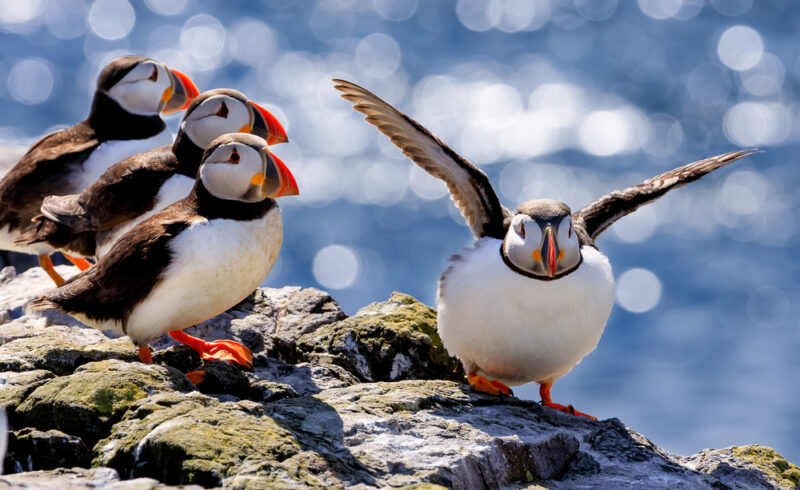
Beyond the Farne Islands, the Alderney Wildlife Trust in the Channel Islands has also set up live streams from its puffin colony on Burhou Island. Similarly to the Farne Islands, they have two cameras. Their Puffin Main Cam and Burrow Cam should capture the daily activities of the birds, from burrow maintenance to feeding routines.
Despite the positive signs, puffins continue to confront numerous threats. Climate change, marine pollution, and overfishing all create hardships. Researchers have begun tagging puffins for an in-depth study of their lifespans and migration patterns to better understand the threats the colorful little birds are facing.
When we’re not outdoors, we get our adventure fix by exploring social media and the web. Here are some of the best adventure links we’ve discovered this week.
Sailing from Oregon to Hawaii with a Cat: Disillusioned with corporate life and facing a medical condition that risked paralysis, 29-year-old Oliver Widger left his job, cashed out his pension, and bought a boat. Now he is sailing from Oregon to Hawaii with his cat, Phoenix. Widger taught himself to sail mainly through YouTube videos and has been documenting his voyage on social media. He quickly amassed over a million followers.
Twenty Years of Beta, Bickering, and Bold Opinions: Mountain Project evolved from a few small climbing information sites, and 20 years later, it is one of the best climbing resources in the world. It has become a spirited forum for climbing debates.
Brian Stevens examines some of the sites' most interesting debates including: the use of bolts, does a perfect climbing town exist, whether we should allow dogs at crags, and what you do with your poo on a climb.

A tragic climbing accident
Three Climbers Die in 120m North Cascades Fall: On May 11, four climbers fell approximately 120m while descending North Early Winters Spire in Washington's North Cascade Range. An anchor failure reportedly caused the fall.
Three climbers — Vishnu Irigireddy, Tim Nguyen, and Oleksander Martynenko — lost their lives. The sole survivor, 38-year-old Anton Tselykh, sustained serious injuries but managed to hike back to his vehicle and drive 60 miles to call for help. Authorities are investigating the incident.
Mayor Wants Reckless Hikers to Pay Their Rescue Costs: In response to a series of costly off-season accidents on Mount Fuji in Japan, Hidetada Sudo, a local mayor, is calling for off-season climbers to pay for their rescues. He argues that individuals who ignore official warnings and climb during dangerous periods should be held accountable. Similar rules have been implemented in North America.
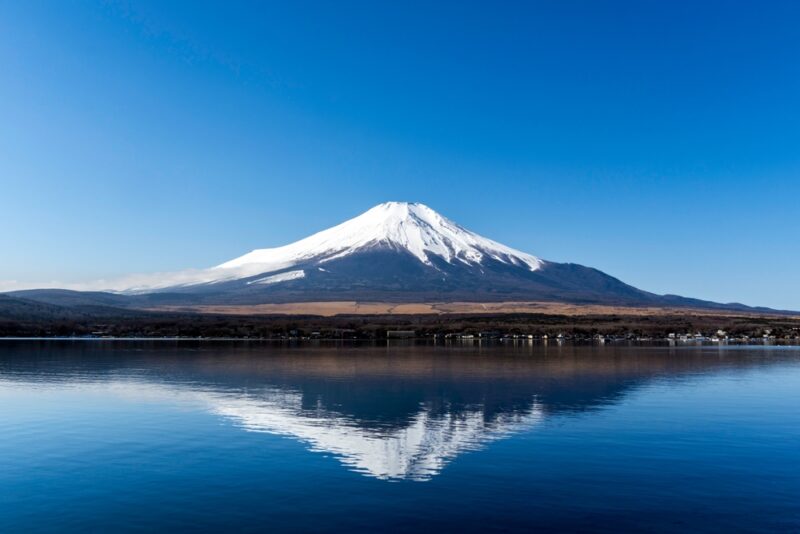
Too hot to run
Trail Runner Dies at Southern California Half Marathon: One runner has died during the Boney Mountain Half Marathon on May 10, in southern California's Santa Monica Mountains. Spencer Cabral, 38, collapsed amid soaring temperatures that reached 39.4°C. A helicopter airlifted him to Los Robles Regional Medical Center, where they pronounced him dead. Three more runners were hospitalized with suspected heat-related illnesses.
Glacier Grizzlies Changed How We Thought of Bears: On the night of Aug. 12, 1967, there was an unexpected tragedy in Glacier National Park. Grizzly bears killed two young women, Julie Helgeson and Michele Koons, in separate incidents. These were the first recorded fatal bear attacks in the park's history.
In response, the National Park Service implemented significant changes, including bear-proof garbage systems and stricter food storage regulations, greatly altering human-bear interactions in national parks.
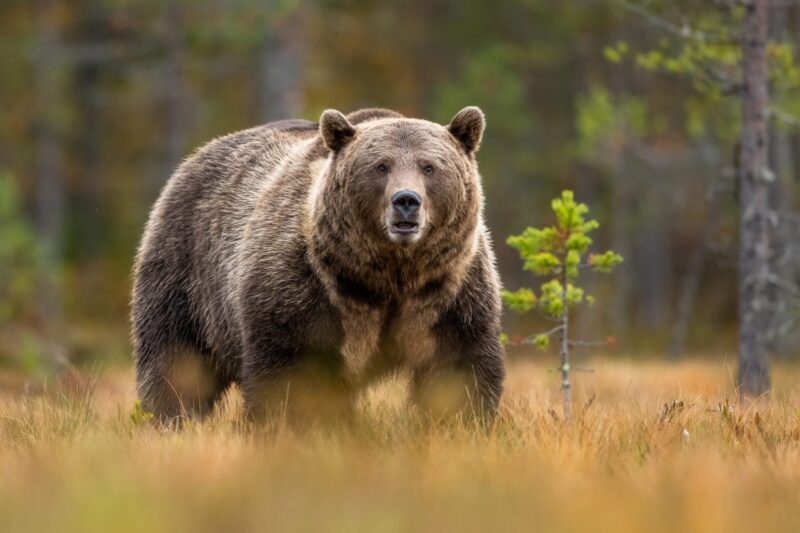
Are we too quick to judge?
When A Paddler Dies, We Are Too Quick to Judge?: The paddling community sometimes blames victims of accidents without understanding the circumstances. Tim Schuff argues that this rush to judge is a coping mechanism, where we try to distance ourselves from the uncomfortable truth that accidents can happen to anyone. It also forces him to reflect on some of his own close calls and whether his survival was skill or luck.
Hawaii Doctor Accused of Trying to Kill Wife on Hike Has Bail Denied: Police in Hawaii have charged Gerhardt Konig, a Maui anaesthesiologist, with attempted murder after he allegedly attacked his wife on a closed hiking trail in Honolulu. During a birthday trip, Konig reportedly pushed his wife toward a cliff, tried to inject her with a syringe, and struck her with a rock. She escaped with serious injuries and alerted other hikers. Police arrested him after he fled the scene. This week, a judge denied his request for bail.
Scientists have discovered two unknown species of crocodile on islands off Mexico's Yucatan Peninsula. They were always assumed to be American crocodiles (Crocodylus acutus), but new genetic testing proves they are distinct.
Researchers from McGill University and collaborating Mexican institutions found that the isolated crocodiles differed in several ways from their mainland relatives.
"The results were totally unexpected," said lead author Jose Avila-Cervantes in a statement. "We assumed Crocodylus acutus was a single species ranging from Baja California to Venezuela and across the Caribbean."
The two yet-to-be-named new species live on Cozumel Island and the Banco Chinchorro atoll. Their isolation caused them to adapt to their unique environments, beginning about 11,000 years ago.
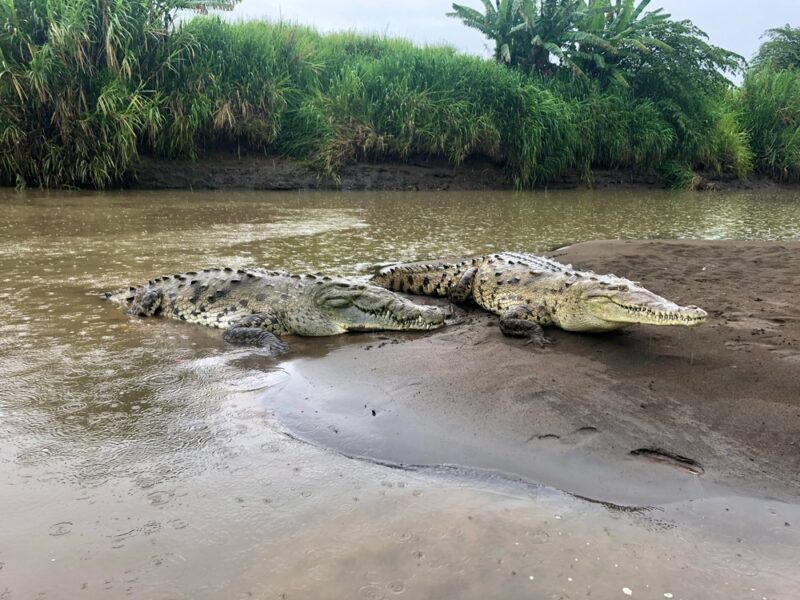
Besides DNA disparities, physical exams revealed noticeable differences in skull shape and scale patterns. The Cozumel crocodiles have long and narrow "longirostrine” snouts that may be an adaptation for catching specific prey. Meanwhile, the Banco Chinchorro crocodiles have broader skulls that help them crush hard-shelled prey.
Each population contains fewer than 1,000 breeding individuals, and their restricted habitats make them susceptible to climate change and human activities, such as coastal development.
Two men have been convicted of felling the Sycamore Gap tree next to Hadrian’s Wall in Northumberland, England. Generations of hikers and photographers cherished the tree, which sat in a perfect dip between two hills.
Daniel Graham, 39, and Adam Carruthers, 32, drove from Carlisle to Northumberland overnight in September 2023 to cut down the tree. The senseless destruction sparked outrage across the UK and beyond, drawing heartfelt tributes and widespread condemnation. The Sycamore Gap tree, often called "the most photographed tree in Britain," became globally recognized after its appearance in the 1991 film Robin Hood: Prince of Thieves starring Kevin Costner.
On May 9, after months of investigation and legal proceedings, the men were found guilty of criminal damage. The prosecution called it a “deliberate and mindless” act. The jury unanimously concluded that the men acted with intent when they cut down the sycamore with a chainsaw.

Denied responsibility
Neither of the men offered a clear motive for their actions, and both continued to deny that they were involved. Graham owned a groundworks company, and Carruthers worked in property management and mechanics. The prosecution described them as "friends with knowledge and experience in chainsaws and tree felling."
Mobile phone data places both of them near the tree when it was cut down, and surveillance footage recorded Graham’s vehicle in the area. Videos from that day on their phones show someone using a chainsaw at the tree's base and capture the sound of a tree crashing to the ground. Afterward, the pair shared messages about coverage of the incident.
“It’s gone viral — it is worldwide," Graham said in a voice note. "Someone has tagged like ITV News, BBC News, Sky News, like News News News."
It is estimated that they caused £1,144 worth of damage to Hadrian's Wall, which was struck as the tree fell, and £622,191 of criminal damage to the tree.
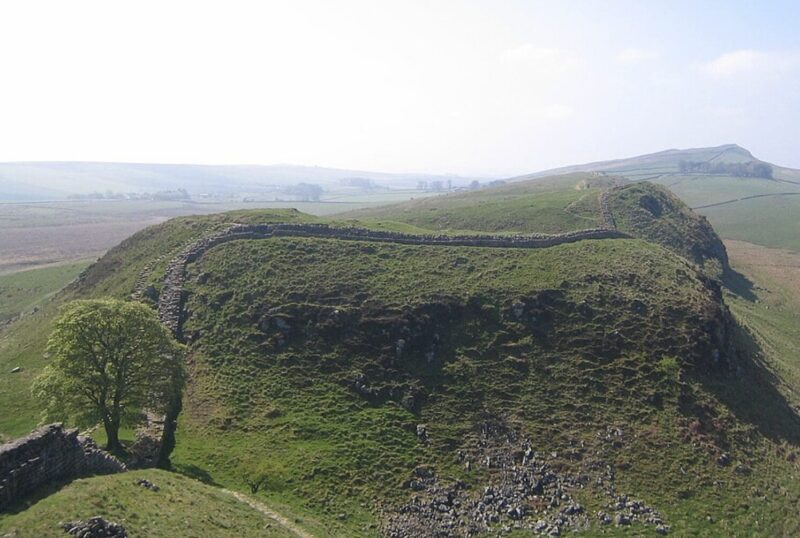
“The needless felling of the Sycamore Gap tree shocked people around the country and overseas, demonstrating the powerful connection between people and our natural heritage,” said the National Trust.
National significance
What made the Sycamore Gap tree so special wasn’t just its appearance and picturesque location. It was the emotion and meaning that people attached to it. It was regularly the backdrop for marriage proposals, the spreading of ashes, and family photographs.
Graham and Carruthers will be sentenced on July 15. Both face up to 10 years in prison. The conviction alone has been viewed as a strong message that such acts will not go unpunished.
While the original Sycamore Gap tree can never be replaced, there is some hope. New shoots are growing from the tree stump, and botanists collected seeds and cuttings shortly after the incident. These are now being cultivated around the UK.
For centuries, the Yangtze porpoise was a common sight on the river it is named after. Now, the freshwater mammal is critically endangered, rarely sighted, and only found in a tiny proportion of the huge waterway that winds from the Tibetan Plateau to the East China Sea. To track the species' decline, researchers have turned to an unusual source— ancient Chinese poetry.
Researchers analyzed 724 ancient Chinese poems that referenced the Yangtze porpoise. Some date back to the Tang dynasty (618–907 CE). Penned by scholars, emperors, and poets who often traveled along the Yangtze, the poems provide vivid accounts of the porpoise's presence and behavior.
“Our work fills the gap between the super long-term information we get from fossils and DNA and the recent population surveys," said Zhigang Mei, co-author of the new study. "It really shows how powerful it can be to combine art and biodiversity conservation.”

Harming the porpoise was bad luck
The Yangtze finless porpoise holds an important place in Chinese folklore. Mei remembers the elders in his community speaking of them as spirits, believing they could predict weather changes and good fishing. Harming the creature was considered bad luck. This is perhaps why they featured so heavily in ancient poetry.
To ensure accuracy in the poem's content, the researchers cross-referenced the information in the poem with what they knew about that author's life. They identified where each poet lived and traveled to ensure that it matched the information within their poems. This approach allowed them to extract reliable ecological data from the verses.
Using the poems with historical records, they mapped the porpoise's distribution across different dynasties. Poems from the Qing dynasty referenced the porpoises 477 times, whereas they appeared slightly less in earlier periods.
Despite this, there was a clear pattern. Over time, a sharp decline in porpoise sightings has occurred. Tributaries and lakes associated with the river had a 91% decrease; the main river channel had one-third fewer. Overall, the findings reveal a staggering 65% reduction in the porpoise's habitat over the last 1,400 years.
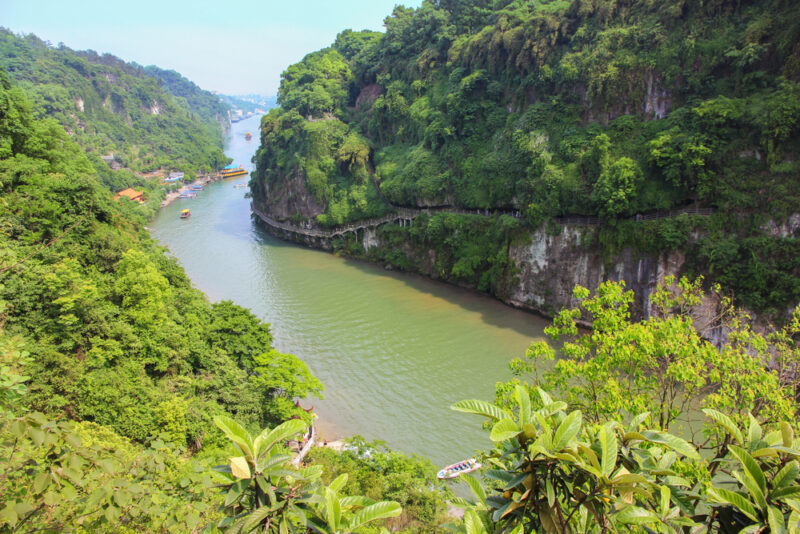
Causes of decline
Poets like Emperor Qianlong of the Qing dynasty often described the porpoise's playful antics, especially its tendency to leap from the water in stormy weather.
“Compared to fish, Yangtze finless porpoises are pretty big, and they’re active on the surface of the water, especially before thunderstorms when they’re really chasing after fish and jumping around,” explained Mei. "This amazing sight was hard for poets to ignore."
Since the 1950s, new dams have made huge sections of the river inaccessible to the porpoises. Pollution and fishing have also affected the porpoise populations.
With fewer than 1,800 freshwater porpoises left in the river, conservationists are worried they will follow the same path to extinction as their cousins, the Yangtze River dolphin.
“Protecting nature isn’t just the responsibility of modern science; it’s also deeply connected to our culture and history,” said Mei in a statement. "Poetry can really spark an emotional connection, making people realize the harmony and respect we should have between people and nature.
When we’re not outdoors, we get our adventure fix by exploring social media and the web. Here are some of the best adventure links we’ve discovered this week.
Clearing up Toxic Wartime Shipwrecks: Many of the thousands of WWII shipwrecks at the bottom of the ocean pose a significant environmental threat. Some hold unexploded munitions, and it is estimated that in all, they contain six billion gallons of heavy fuel oil. As the ships deteriorate, this oil will leak into our oceans. A group of Australian maritime archaeologists is working to extract pollutants before this happens.
What It’s Like to Face Off With A Grizzly: A decade ago, Jon Bentzel and Micah Nelson were hiking through Glacier National Park in Montana. Though prepared for encountering a bear, they didn't expect to.
Suddenly, two young cubs toppled out of a bush. Seconds later, the mother bear charged Bentzel as he desperately searched for the bear spray in his pack. The bear clawed his head and arms before Nelson managed to find the spray and scare the bear off.

Paris after World War II
Paris Here I Come: Paris Here I Come! is a travel gem from 1953. War correspondent Ollie Stewart remained in Paris after the war; his guide to the city offers insight into a post-war Europe where adventure and joy seemed more attainable for a Black American man than they did at home. Decades later, his great-niece visits Paris with his guidebook in hand.
The Merits and Dangers of Using a Leash: Last week, a 33-year-old surfer drowned when her leash became entangled while she surfed a popular standing wave on Munich’s Eisbach River. It is the first fatality there in over 50 years. The government has closed the site, and anyone who ignores this faces a hefty fine. River surfing expert Quirin Rohleder weighs in on leash safety following the accident.
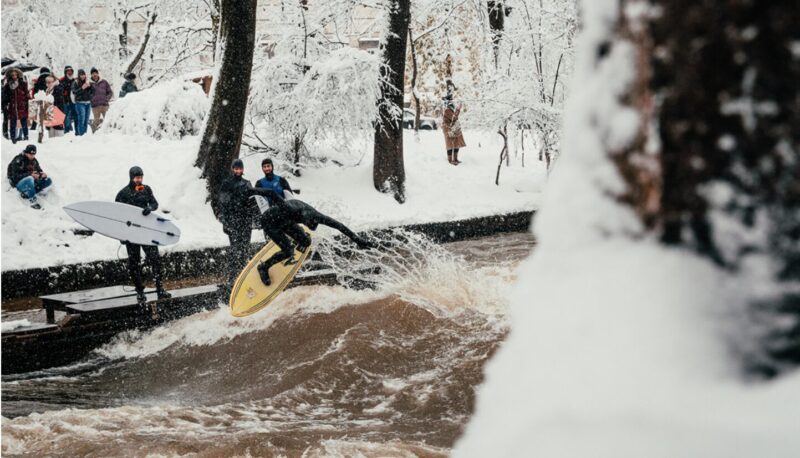
A traveling king
The First King to Travel Around the World: King David Kalakaua of Hawaii made history in 1881 as the first reigning monarch to circumnavigate the globe. Known as the Merrie Monarch, he took the 281-day journey with a small entourage, hoping to share Hawaii's culture with the rest of the world. While some people think Kalakaua's tour showed his commitment to Hawaii's prosperity, others questioned his motives. Nevertheless, the journey has had a lasting impact. Every year, the Merrie Monarch Festival celebrates Hawaiian history and culture.
Classic Routes I’ve Fallen Off: As they say in climbing: “If you ain’t flying, you ain’t trying.” Kate Harrison recounts her most humbling falls on some of Britain’s most iconic routes. Though she can barely remember some of her moves, she can remember each fall in vivid detail. From peeling off the Pleasure Dome to slicing her finger open on True Grip, each fall taught her something.

Is hitchhiking dead?
Does Anyone Still Hitchhike?: Andrew Fedorov reflects on his years hitchhiking across America. From a stuntman with 50 concussions to a bounty hunter obsessed with flat-Earth theories, he has met an array of characters.
Between safety concerns and increased car ownership, hitchhiking is far less common than it used to be. Yet Fedorov believes that modern tools, like smartphones and online communities, have made the practice safer. He argues that hitchhiking offers a type of human connection you don’t get from other travel.
I Hiked the Southernmost Trail in Patagonia: When Olivia James started googling the Dientes de Navarino Circuit in Patagonia, she found scant information. Drawn to off-the-beaten-track experiences, that was enough to convince her to take it on. Teaming up with another solo female hiker, she recounts the remote trek. She does not try to sugar-coat it, detailing her fatigue, difficult terrain, brutal weather, and their relief when they made it to the end.
When we’re not outdoors, we get our adventure fix by exploring social media and the web. Here are some of the best adventure links we’ve discovered this week.
Alex Honnold Goes 'Mission Impossible' on Coyote Tower: Alex Honnold recently made a solo ascent of Arizona's Coyote Tower and then jumped to the neighboring rock formation. From here, he continued climbing up to the main summit, Courthouse Butte. He likened his leap to a "full-on Mission Impossible adventure." He said none of the 5.10c route was overly challenging but describes it as fun, scenic, and adventurous.
Why Japan Is Best Experienced By Foot: Master travel writer Pico Iyer explores Japan’s deep-rooted cultural and spiritual ties to walking. He traces this from 17th-century poet Matsuo Basho -- known for his months-long journeys on foot along ancient pilgrimage routes -- to modern temple circuits. Walking is a way to slow down, bring community, and return to the elements. Iyer invites readers to see Japan not from a bullet train, but through meditative foot travel.
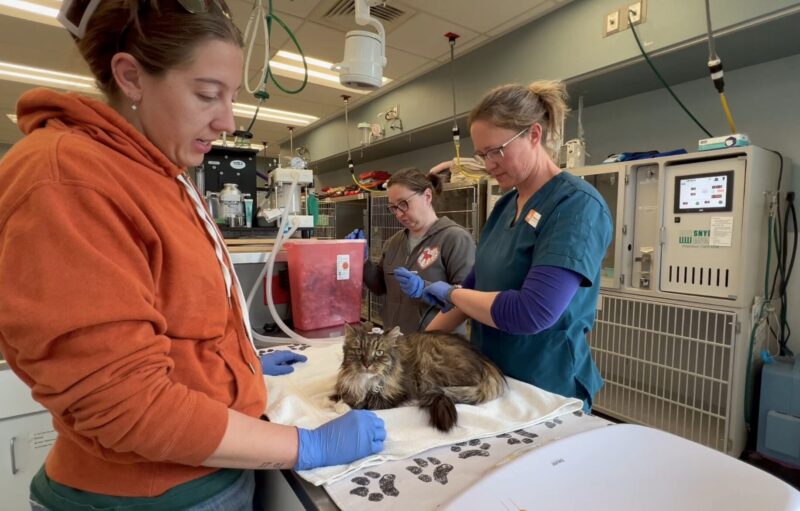
One feline's remarkable survival
Cat Survives 115-Meter Fall: In a tragic incident at Utah's Bryce Canyon National Park, Matthew Nannen, 45, and Bailee Crane, 58, fell approximately 115m to their deaths from Inspiration Point. Remarkably, their 12-year-old tabby cat, Mirage, survived the fall. Rescuers found her in a torn soft-sided carrier near the couple's bodies, with only suffered minor injuries.
2025 Is the Year of Glacier Preservation: The United Nations has declared 2025 the International Year of Glacier Preservation to highlight the critical importance of glaciers and the urgent need to protect them. Climate change's effect on glaciers goes beyond melting; sections break off and avalanches are more common. Many want to see these formations before they deteriorate or disappear. Here is a guide to visiting some of the world's most beautiful glaciers.
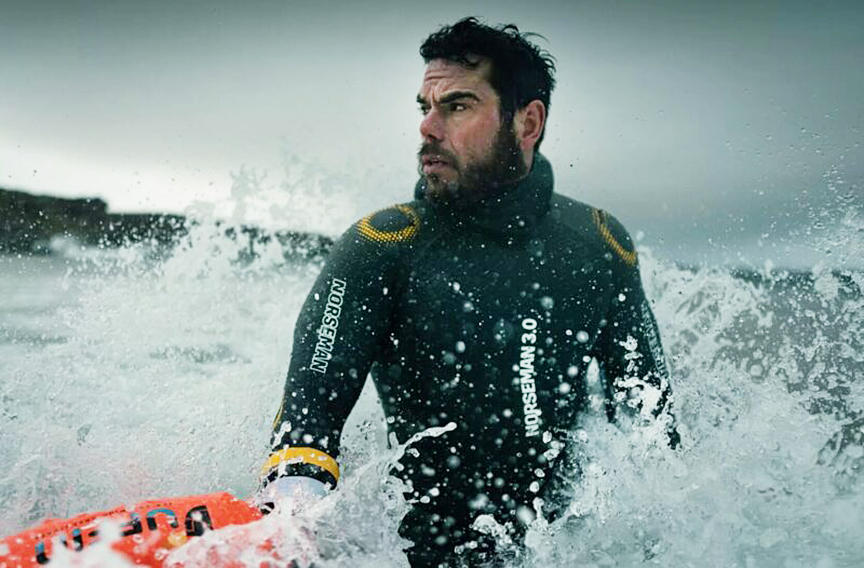
100 Channel swims in a row
Ross Edgley to Swim Around Iceland: Ultra-marathon sea swimmer Ross Edgley has announced his latest challenge: a 1,610km swim around Iceland. Starting in May, Edgley will swim over 30km a day in waters as cold as 1°C. He may also have to contend with high waves and winds. Edgley compares it to swimming the English Channel every day for 100 consecutive days.
Hiking the Appalachian Trail to Survey Its Recovery: Grayson Haver Currin first thru-hiked the Appalachian Trail in 2019. Since Hurricane Helene in 2024, Currin had read several articles about the devastation it had caused to the iconic trail. With his wife and friend, he decided to walk a 225km section of the AT to survey the ongoing damage.
Here, he details six days of the walk, describing the state of the trail as “a horrific multi-car pileup on the interstate that happened hours ago, just long enough that the wreckage has been moved to the side of the road to allow for cars to pass. The way is mostly clear, but the work is far from done.”
Delayed Rescue Proves Fatal: In May 2023 on Denali's West Buttress route, a 24-year-old climber from Colorado succumbed to severe high altitude cerebral edema (HACE) and high altitude pulmonary edema (HAPE) after a rapid ascent from 7,200 to 14,200 feet in just 36 hours. Despite 18 hours of intensive care — including oxygen therapy, medications, and treatment in a portable hyperbaric chamber — poor weather delayed the initial rescue, and the climber ultimately died in the hospital.
Crossalps Reaches Halfway Point: The Crossalps expedition has reached its halfway point on the Swiss-Italian border. As the groups traverse the Alps by cycling, skiing, and mountaineering, a different team tackles each stage. This story details how three groups tackled the tricky conditions near the halfway point.
A ground-breaking development in snakebite treatment has emerged from two small vials of blood. Specifically, the blood of Tim Friede, a Wisconsin man who has voluntarily injected himself with snake venom and let snakes bite him for the last two decades.
Most people would do anything to avoid a venomous snake bite. But Friede set up a lab in his basement to try and help in the field of antivenom research. He is not a scientist, nor was he affiliated with any research body. Snakes and their bites just piqued his curiosity.
Speaking to The New York Times, he explained that a garter snake bit him when he was five. This harmless interaction triggered his fascination with snakes. “If I only knew back then what was going to happen,” he laughed.
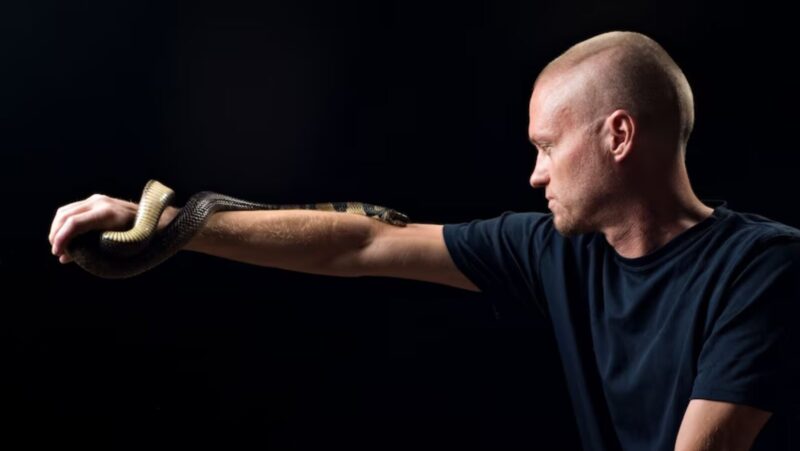
Early disaster
In 2000, he began exposing himself to venom. He started with scorpions but soon changed to snakes. A year later, he let two cobras bite him. It sent him into a coma, and he woke up four days later in a hospital. His wife was understandably incandescent with rage when she found out what he had done. But so was Friede, for different reasons: He could not believe he had not thought it through properly.
From that point, he started injecting himself with small doses of the venom to build up his immunity. Only then would he allow snakes to bite him. Over the years, he has injected himself with 650 doses of venom and endured more than 200 bites from some of the world's deadliest snakes.
Throughout this, he emailed multiple scientists to try to get them to study his blood. A few did sample it, but it never led anywhere. Then in 2017, he got a call from Jacob Glanville. An immunologist by trade, Glanville used to work on universal vaccines and wondered if he could apply the same logic to antivenoms. Rather than targeting the part of the venom that makes it unique, universal antivenom would act on the parts that are common to multiple venoms.

Can I have your blood, please?
When he read about Friede, he realized the potential. "If anybody in the world has developed these broadly neutralizing antibodies, it's going to be him," he thought, so he reached out. "The first call, I was like 'this might be awkward, but I'd love to get my hands on some of your blood',” Glanville told the BBC.
It was exactly what a delighted Friede had been waiting for.
“I’m really proud that I can do something in life for humanity, to make a difference for people that are 8,000 miles away, that I’m never going to meet, never going to talk to, never going to see,” he said.
Glanville and biochemist partner Peter Kwong collected two vials of Friede's blood. Their research focuses on elapids, the family of venomous snakes that includes mambas, cobras, taipans, and coral snakes.
They identified two antibodies capable of neutralizing a broad spectrum of snake venoms. They combined these with varespladib, a molecule that inhibits venom enzymes, then tested this combination on mice exposed to venom. Thirteen mice were fully immune, and the remaining six showed partial protection.
Don't try this at home
Conventional antivenoms come from the blood of horses or sheep that have been given a specific venom. Typically, they are expensive, have limited regional effectiveness, and may cause severe allergic reactions because the antibodies come from non-human mammals. In contrast, the new antivenom is lab-produced, potentially reducing costs and allergic risks, and offers broader protection.
While Friede's work is hugely significant, experts caution anyone against replicating his methods. The research team noted that all necessary antibodies have been identified, and no further self-exposure is needed.
This is just the first stage of research. Next, they hope to test their universal antivenom on dogs bitten by snakes at a veterinary clinic in Australia. They would then need to test on larger animals before moving on to humans.
A 27-year-old student had to be rescued twice from Mount Fuji in one week. He got in trouble once during an illegal climb and again after returning to the mountain to recover his lost cell phone.
The student, a Chinese national studying in Japan, first attempted to climb Mount Fuji on April 22, when the mountain was still closed for the season. Because of extreme weather, trails on Japan’s highest peak are only open from July to early September.
On the first climb, the student became stranded near the summit. He couldn't descend after losing his crampons and was suffering from altitude sickness. A search-and-rescue team found him at an altitude of over 3,000m. He was mildly hypothermic and was airlifted off the mountain to a hospital.
Four days later, the headstrong student returned to Mount Fuji. According to police, he went back to retrieve his phone and other personal belongings lost during the first climb. He again made it to over 3,000m, where he once again succumbed to altitude sickness. Another hiker on the trail found him “lying on the ground and shaking.” Ensued a second rescue.
There is no penalty for climbing Mount Fuji during the off-season, and no charge for being rescued. But there has been an outcry on social media, with many saying the climber should at least be charged for the second rescue, if not both.
Although most visitors adhere to the seasonal guidelines, a growing number of individuals are attempting off-season climbs. Police in Shizuoka prefecture have reiterated their advice against climbing the mountain at this time of year. Medical facilities along the trails are closed, and the rapidly changing weather can make it very hard for rescuers to respond.
A former police officer and paddleboarding tour operator has been sentenced to 10 years in prison for gross negligence manslaughter after a tragic incident that claimed four lives in Wales.
On Oct. 30, 2021, seven people joined a paddleboarding tour organized by Salty Dog, a company owned by Nerys Bethan Lloyd. The beginner group took to the River Cleddau during dangerous water conditions. In the days before, five centimeters of rain had fallen. The river had high water levels nearing flood conditions and fast currents. Despite this and a weather warning, the tour went ahead, and four participants died.
The victims were Andrea Powell, Morgan Rogers, Nicola Wheatley, and Paul O’Dwyer. O’Dwyer was the co-instructor with the group. He initially managed to get out of the water but went back in to try and rescue those who were struggling. Three died at the scene; a fourth died in the hospital days later.

Woeful safety measures
Neither Lloyd nor O’Dwyer was qualified to lead the tour, and safety measures were woeful. Four in the group were not wearing wetsuits, one was not wearing a life jacket, and they had no safety briefing before entering the river. Lloyd had received repeated warnings about severe weather and hazardous river conditions. O’Dwyer had even questioned her about the trip and researched a less dangerous alternative but was ignored.
The fatalities occurred at a section of the river known as Fish Pass. Lloyd did not warn the group about the weir on the route. As they approached, the 1.3-meter drop was not visible to participants from their angle. The group could have portaged around it, but Lloyd battered on.
The best place to cross their weir was down a narrow fish ramp in the middle. Lloyd did this and shouted back to the group to do the same. Only one participant heard her, and the ramp was not visible to them.
“Without knowing about the fish ramp and how to deal with it, your instructions were vague and meaningless and could not have been acted upon because of the flow and strength of the current,” said the sentencing statement.
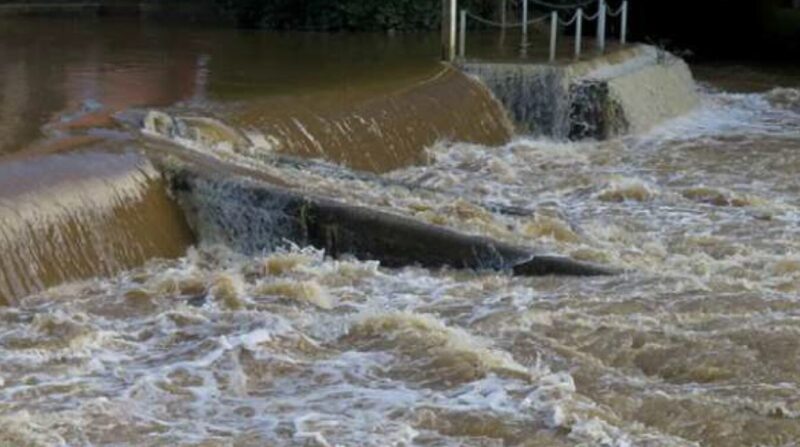
Recirculating wave
As the group went over the weir, they were sucked into the dam's recirculating wave, which is difficult to get out of.
Justice Dame Mary Stacey, who sentenced Lloyd, commented, “The ankle leashes attached to the boards of those stuck in the hydraulic spin, which are totally unsuitable for fast-flowing water, made it even harder for them to get free…You didn’t have any next-of-kin details. No consent forms were obtained. There had been no mention to the group of a weir on the river and how to deal with it, and no discussion of the tidal river conditions whatsoever.”
Initially, Lloyd told the police that the group was intermediate level, had received a safety briefing, and that she and O’Dwyer had checked the river conditions earlier that day. She blamed O’Dwyer for the incident and said that she herself had been sucked into the hydraulic when trying to assess the portage steps.
Accounts from surviving participants and CCTV at the scene disprove all of this. CCTV footage was not shown in court, as it was deemed too distressing.
Mrs Justice Stacey said that Lloyd was more interested in an “exciting” route, and that she showed “a blatant disregard for a very high risk of death.”
Lloyd pleaded guilty, and at the end of the trial, she took full responsibility for the disaster.
British adventurer Karl Bushby is nearing the end of his extraordinary journey to become the first person to walk an unbroken path around the world. Beginning on November 1, 1998, from the southern tip of Chile, Bushby has trekked over 47,000km across four continents, 25 countries, six deserts, and seven mountain ranges. Now he is starting his final year on the road.
His odyssey, known as the Goliath Expedition, has spanned 26 years, with approximately 13 years spent actively walking and the remainder consumed by bureaucratic challenges, pandemics, visa restrictions, and financial difficulties.
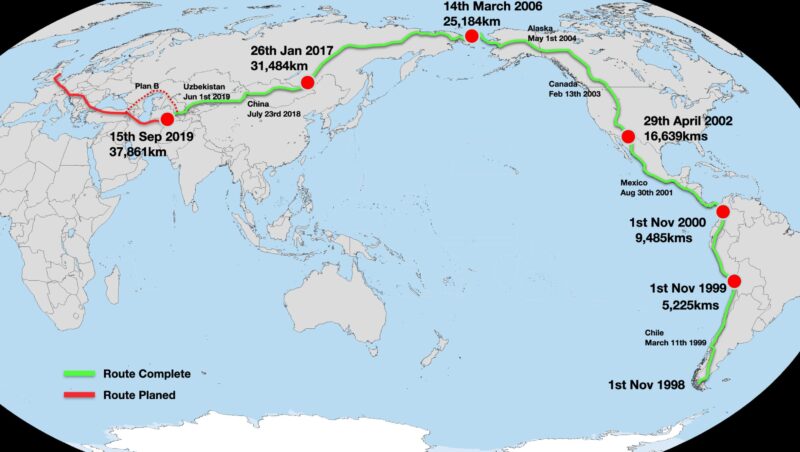
Two rules
Bushby has two self-imposed rules: he cannot use any form of transportation on his route, and is not allowed to go home until he is finished. Logistical problems have occasionally forced him to put his trek on hold for up to three years and fly to Mexico or elsewhere to cool his heels. But always, he picked up where he had left off and did not use anything but his two feet on the route itself.
His path took him through multiple conflict zones, including the infamous Darien Gap between Colombia and Panama. Crossing the 320km stretch of jungle took him two months and included an 18-day detention in Panama before he was allowed to proceed.
Continuing northward, Bushby crossed Central America and entered the United States in 2002, eventually reaching Alaska in 2005. In March 2006, he achieved a significant milestone by crossing the Bering Strait on foot with French adventurer Dimitri Kieffer. The duo spent 14 days navigating a frozen 241km section to cross into Siberia, a supremely difficult task over broken, swiftly moving ice. Here, Russian border authorities detained them for not entering at an official port.

Difficulties in Russia
Bushby's progress through Russia was slow due to visa restrictions. He had to leave the country every 90 days, since his tourist visa only allowed him to stay in Russia for 90 days of every 180 days.
In 2008, his journey came to a standstill. He lost sponsorship for a few years and could not travel to Russia, so he set up camp in Mexico until he found more funding. In 2011, he resumed his trek, once again in 90-day stints. Then in 2012, he was denied a further visa, and in 2013, he received a five-year entry ban from Russia.
Determined to continue, Bushby headed to the U.S. and walked 4,800 km from Los Angeles to the Russian Embassy in Washington, D.C., to protest the decision. His efforts weren’t wasted. In 2014, the ban was lifted, and he once again found himself in Russia. From there, he continued through Mongolia, where he joined with other adventurers (including Angela Maxwell, also on a solo walk around the world) to trek across the Gobi Desert with camels.
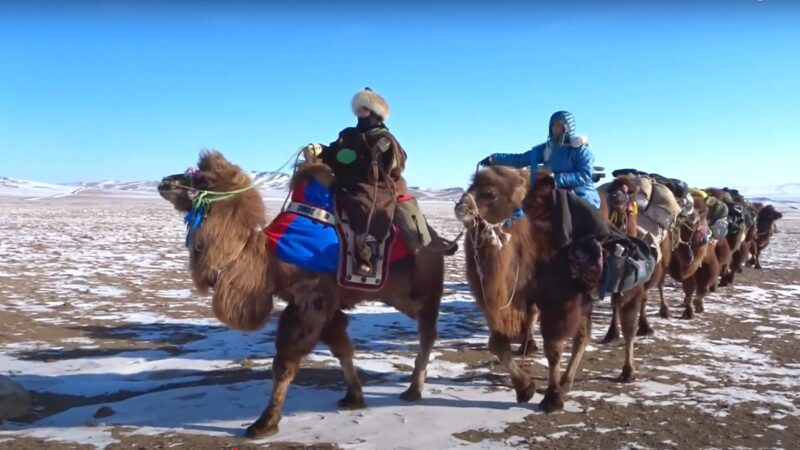
After 1,130km, several disagreements fractured the group, and Busby continued into China by himself. In 2018, he crossed Kazakhstan and then made his way through Uzbekistan and Turkmenistan. Here, his journey came to a premature halt when he could not secure a visa to his next country, Iran. The pandemic also set in around this time. He once again retreated to Mexico.
An odd Plan B
In 2022, facing insurmountable obstacles in Iran and Russia, Bushby devised an odd plan B for someone who had spent well over a decade walking. He was going to swim across the Caspian Sea with Angela Maxwell, but even this plan took two years to pull together.
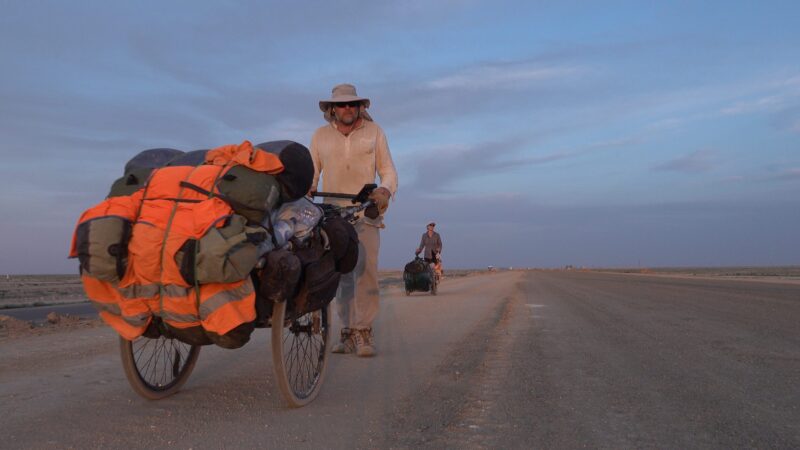
Bushby and Maxwell flew to Bukhara, Uzbekistan, and walked across the Kyzylkum Desert to the Caspian Sea. With limited swimming experience, they embarked on the 288km swim from Kazakhstan to Azerbaijan in October 2024. Over 32 days at sea, they spent 27 days swimming through dangerously rough seas and high winds. Safety boats accompanied them. They swam for three hours in the morning and three hours in the afternoon and slept aboard the boats.
But swimming was not the hardest part of this challenge. Bushby admitted, “I’m definitely not a swimmer, nor do I like swimming.” For both of them, this was completely outside their comfort zone.
For the last six months, Bushby has been picking his way from Azerbaijan to Turkey. Speaking to Turkiye Today, he said, “Other travelers told me Turkey would be one of the most beautiful and welcoming places. And they were absolutely right. People constantly invited me into their homes...The hospitality has been amazing.”
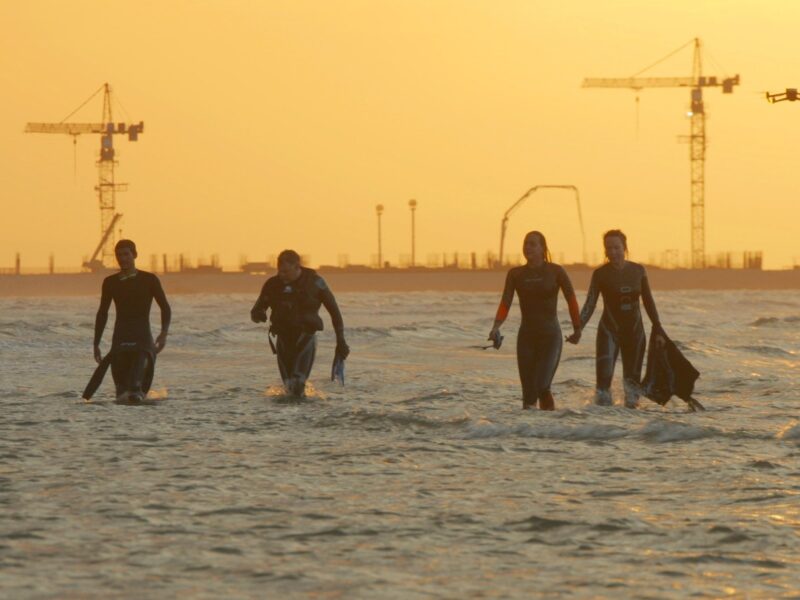
One year more
Now he is just days away from Istanbul and is trying to secure permission to cross the Bosphorus, “It’s only 1.5 kilometers, but it’s symbolic,” he explained. "Crossing it would bring me from Asia into Europe, the final phase of the journey. From there, I’ll walk across Europe and reach the Channel Tunnel in France, eventually walking back home to the UK."
Once he crosses the Bosphorus, he is confident it will only take him one more year to get back to the UK. “It’s been hard being away. And the U.K. has changed so much — I left when Tony Blair was Prime Minister. Since then, we’ve had five or more PMs. I might not even recognize home when I get there.”
A bird once declared extinct in the wild has just laid eggs in Hawaii.
The sihek, also known as the Guam kingfisher, has a striking burnt orange breast, electric blue wings, and a sharp beak. Native to the island of Guam, the tiny birds thrived until the accidental introduction of the brown tree snake in the mid-20th century. Sihek populations plummeted. By 1988, the bird was declared extinct in the wild.
The sihek became a feathered example of what can happen when an invasive species runs wild. The bird didn’t vanish entirely because of a last-minute rescue operation. Conservationists captured 29 of the remaining siheks and began a careful breeding program.
Several institutions have been raising siheks for the last few decades, trying to increase their numbers. Last year, some donated eggs to a special facility at the Sedgwick County Zoo in Kansas. Here, the hatchlings were cared for until they were old enough to journey to the atoll.
Researchers released nine of the hand-reared siheks in September 2024. They were rewilded in The Nature Conservancy’s (TNC) Palmyra Atoll Preserve, which lies around 1,600km south of Honolulu. They chose this area because the birds have no predators there, and the area is fully protected.
One lonely male
The four females and five males formed four breeding pairs. (One lonely male didn't have a mate.) Less than a year later, all the pairs established territories, built nests, and laid eggs in the wild for the first time since the 1980s.

“This is a huge win," said John Berry of the Cincinnati Zoo. "It means the birds are not just surviving—they’re beginning to thrive.”
Though everyone is excited about the new eggs, they also admit it is very unlikely that they will survive. The mating pairs are less than a year old and have never had to care for eggs and incubate them before. It often takes a few attempts at laying and looking after eggs for them to actually hatch.
Conservationists are now planning to release more young siheks onto the atoll later this year.
When we’re not outdoors, we get our adventure fix by exploring social media and the web. Here are some of the best adventure links we’ve discovered this week.
I Visited Every Country in the World Without Flying: Thor Pedersen spent almost a decade visiting every country on Earth without boarding a single plane. At age 34, he left behind a stable career and relationship to take on the extraordinary challenge. Here, he reflects on what he has learned over the last 10 years, including the emotional toll of long-term travel.
An Acadia to Zion Guide to Visiting National Parks: National Parks in America are in a state of chaos. At the same time as over 1,000 National Park Service workers are fired, the number of visitors has vastly increased. Here is everything you need to know before traveling to America's 10 most popular parks.
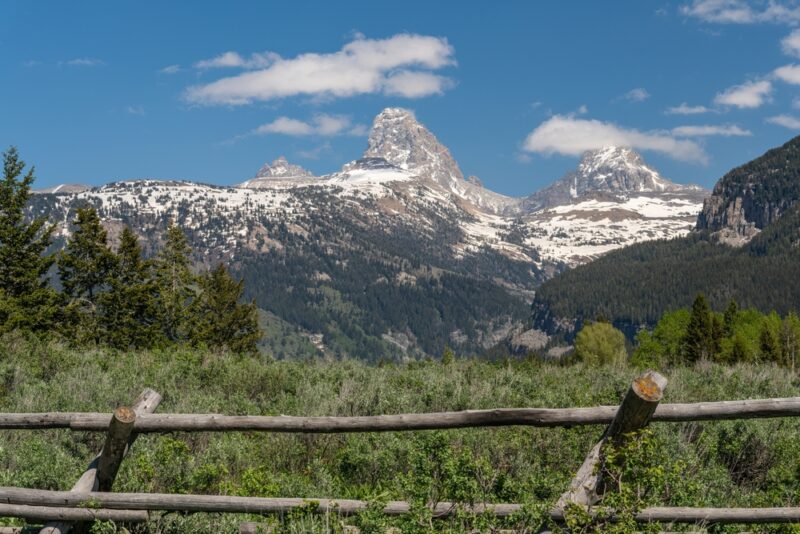
The 13 Best Thru-Hiking Stories of All Time: Over the last few decades, long-distance hiking has soared in popularity. With that has come thousands of incredible stories. Backpacker selected the 13 favorite adventures they have covered over the last five decades. Highlights include Jeffrey Cogswell’s 1981 account, Coming of Age on the Appalachian Trail,” and Cindy Ross’s 1991 piece Blind Faith, which chronicles what it means to be a visually impaired hiker.
Best day hikes in Oz and NZ
Eight Epic Day Walks in Australia and New Zealand: Australian Geographic has compiled a selection of the best day hikes in New Zealand and Australia. The piece details the duration, difficulty, and highlights of each hike.
A Silent Rebellion: Kit Wilson and his father, polar traveler Geoff Wilson, take on an expedition across Iceland’s Highlands. Beginning on the northern coast, they traverse volcanic deserts and glacial rivers with their horses. Then, while they are skiing across the Vatnajökull Glacier, a brutal storm tears their tent and cuts their journey short.
The New Trend of Land Snorkeling: Snorkeling conjures up ideas of coral reefs and tropical waters, but Clyde Aspevig and Carol Guzman want hikers to snorkel on land, specifically on the American Prairie Reserve. Land snorkeling means wandering around an area, soaking up the nature around you, and being curious. Hikers nowadays typically focus on getting from A to B or reaching summits quickly. This new approach means letting interest and natural features guide you.
A 74-year-old rings The Bells
Rob Matheson Repeats The Bells, The Bells! Seventy-four-year-old Rob Matheson has climbed the notoriously tricky The Bells, The Bells! (E7 6b) on North Stack Wall in North Wales. After a first attempt in March, he successfully rang “The Bell” on April 24. In 1980, John Redhead first ascended the route, Britain's first E7. In two videos, Matheson discusses his reasons for climbing the route and its lack of protection.
Lonnie Kauk Found Guilty of Domestic Violence: Professional climber and snowboarder Lonnie Kauk has been found guilty of domestic violence against his ex-girlfriend, Riley Hancock. A jury in Mammoth Lakes convicted Kauk of three felonies —strangulation, criminal threats, and vandalism —and one misdemeanor for domestic violence. Photographic evidence presented at trial showed a bruised handprint on Hancock's neck. Kauk, known for his climbing achievements and the son of Yosemite climbing legend Ron Kauk, is scheduled for sentencing in June.
Johnny Coyne has become the first person to kayak from Ireland to Asia. The Irish adventurer set out in September 2024 with Liam Cotter. Countryman Ryan Fallow joined the duo later. But only Coyne did the entire distance.
At first, he and Cotter crossed the Irish Sea and the English Channel without support vessels. Then they navigated through numerous European rivers and canals. It wasn't easy -- and not just because of the physical effort.
In France, they didn't have the right permits, so they were banned from the canals. By the time they sorted that out, the waterways were frozen. Determined to keep their journey human-powered, they dragged their kayaks 350km cross-country through France and then Germany’s Black Forest to the source of the Danube.
This lengthy portage was one of the hardest parts of the expedition. At one point, the wheels of their kayak cart broke, and they were forced to stop for weeks. Winter took hold, and the temperatures plummeted.
Onto the Danube
In Germany, Ryan Fallow joined the expedition, and the trio took to the Danube. The three paddlers were used to rapids, but anticipating the right lines on an unknown river was nerve-wracking. In Austria, disaster struck. Cotter’s boat smashed into rocks in some rapids, opening a significant hole. But chance smiled on the young travelers: They stumbled across two good Samaritans -- one who repaired the boat and another who replaced Fallow’s old, unsuitable vessel with a newer one.
Back on the Danube, Cotter dislocated his shoulder during a portage and could not continue. Coyne and Fallow soldiered on through Slovakia and Hungary, where more border crossing problems ensued. On their first night in Croatia, police surrounded their kayaks, convinced they were illegal immigrants.
Yet the pair persisted with unwavering positivity. From Croatia, they paddled through Serbia, Romania, and Bulgaria, resupplying at various towns. Most of the time, they camped along the riverbank but occasionally accepted hospitality from locals.
As the months passed, their equipment began to fail. Their tent leaked, and some of its poles had been lost. By the end of their eight-month crossing, it was held together with tape and sticks.
The Black Sea at last
At the start of April, 210 days after setting off, they reached the Black Sea, their last major milestone before Istanbul. The next big goal was to reunite with Cotter so that he could join them at the finish. After the shoulder injury, Cotter couldn't paddle but he had remained in the wings, helping with logistics. Now the trio wanted to finish together.
Cotter wanted to stick to their human-powered plan, so as soon as his shoulder mended enough, he started cycling to catch up with his pals in Bulgaria. On day 225, he rejoined them after three months apart, ready to kayak with them for the last week.
The final week started with paddling from Bulgaria into Turkey. Once again, the border crossing was anything but simple. Coyne tried to arrange their entry with the Coast Guard, and a customs boat met them as they approached the border.
However, it informed them that they were not allowed to land. They had to wait on the Bulgarian side in their boats for three hours. The temperature dropped, the water became choppy, and it was dark before they were allowed to get off the water. But still not in Turkey.
Another troublesome border
On the beach, police questioned them and searched their kayaks. As they slept that night, the police refused to leave, to ensure they would not cross the border overnight. The next morning, they were finally allowed to cross into Turkey.
With four days left, their excitement was palpable and only increased when a pod of dolphins swam next to them as they paddled along the Turkish coast. On April 25, they landed in Istanbul to cheers from the friends and family who had come to meet them.
“This has been the greatest moment of my life so far,” Coyne commented as he exited his kayak.
More than 80 percent of the world’s coral reefs have just been hit by the most widespread and severe bleaching event in history.
According to the U.S. National Oceanic and Atmospheric Administration (NOAA), reefs in 54 countries have bleached fully or partly in the last year. Bleaching happens when corals are stressed because the water is too warm, and last year was the planet's hottest on record. The Atlantic, Pacific, and Indian Oceans all suffered rising sea temperatures.
Researchers detected signs of serious heat stress since early 2023. By April 2024, the damage had reached catastrophic levels.
This is just the fourth global coral bleaching event on record. The scale has already eclipsed the 2014–2017 event, which was at the time the worst ever. It affected 68% of corals. The bleaching now spans over 84% of reefs globally, hitting nearly everywhere at once.
"From February 2023 to April 2024, significant coral bleaching [occurred] in both the Northern and Southern Hemispheres of each major ocean basin," said Derek Manzello, NOAA Coral Reef Watch coordinator.
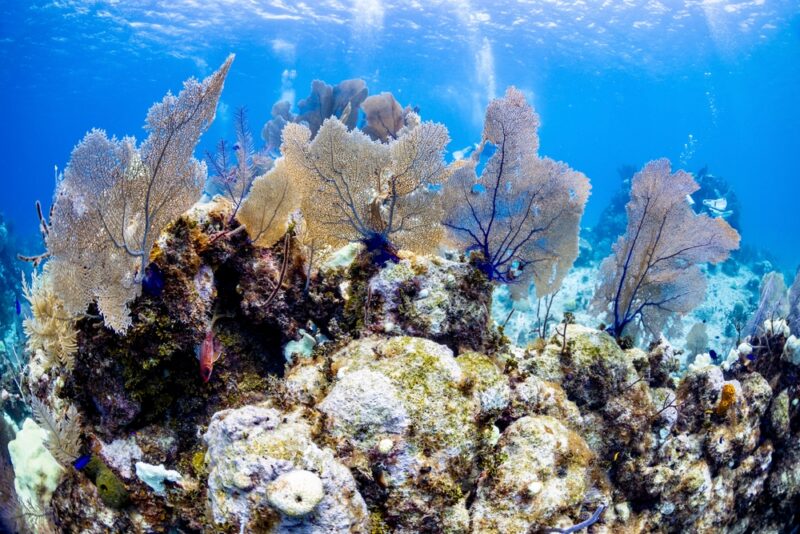
When corals bleach, they expel zooxanthellae, the microscopic, single-celled algae in their tissues. Normally, as these algae photosynthesize, they produce oxygen that is crucial for the coral's survival. Without them, corals turn ghostly white. If the stress continues, they die.
The question is how long-lasting these effects will be. Coral does not recover quickly. Even with little disturbance, reefs take a decade or longer to regrow. Warming oceans are simply pushing coral past its breaking point.
Coral reefs are considered the rainforests of the sea. They support almost a quarter of all marine species. Without them, stable ecosystems start to unravel. The UN Environment Program estimates that coral reefs "provide society with resources and services worth $375 billion per year.”
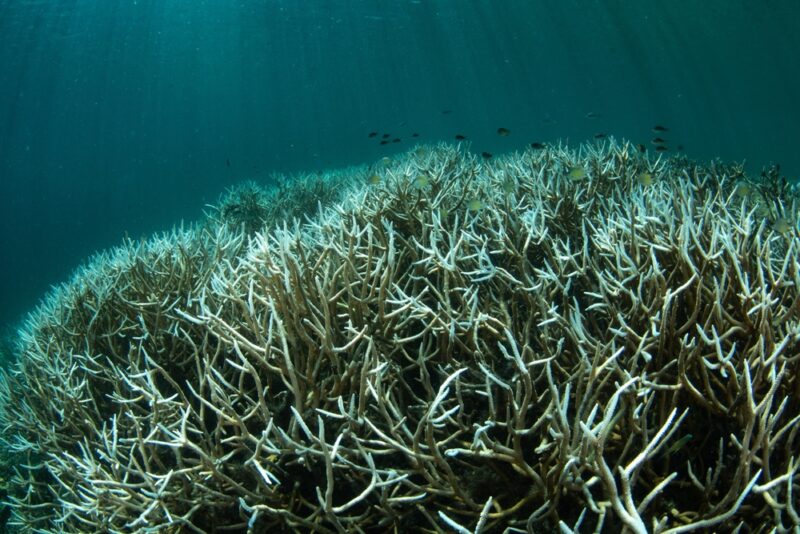
In the Caribbean, Australia's Great Barrier Reef, the Red Sea, and Florida, the reefs have suffered “near-complete” bleaching. Conservationists are trying their best, but attempts at reef restoration simply can't overcome rising global temperatures.
“The best way to protect coral reefs is to address the root cause of climate change...fossil fuels," Mark Eakin of the International Coral Reef Society told Euronews. "Everything else is...a Band-Aid rather than a solution.”
Since our last ocean rowing roundup, all the crews on the Atlantic have completed their rows, and two fresh teams have taken to the Pacific.
Atlantic Ocean
Atlantic Dash: The Atlantic Dash calls itself an ocean-rowing regatta. Four teams took part in the 5,000km row from the Canary Islands to Antigua this year. Starting on February 1, all four boats had crossed the finish line by March 26.
The event organizers stressed that it was not a race, but the four crews were neck and neck to the finish, and all finished within 26 hours.
Waves to Awareness, with the pair Ruby Coates and Steffan Evans, finished first. Three hours later, soloist Gary Hutching landed in Antigua's Jolly Harbour. Row For It, a four of Neil Glover, Peter Ross, Darren Smith, and Nick Southwood, finished the next day, followed by the all-female crew Cruising Free, consisting of Sophie Pierce, Janine Williams, Polly Zipperlen, and Miyah Periam.
Annasley Park (UK): Solo rower Annasley Park completed her Atlantic row on March 28. The former professional cyclist rowed from the Canary Islands to Barbados in 54 days, 14 hours, and 14 minutes.
At the start of her row, she battled sea sickness, strong winds, capsizes, and dust on her solar panels. As she rowed into March, conditions improved, and she picked up speed. This lasted a few weeks before it became clear that a weather system was going to start pushing her north. To counteract it, she took a more southerly line.
This helped, but Park still ended up on her para-anchor, trapped in her cabin.
"For safety reasons, the cabin door needs to be shut, but that means that Annasley [Park] is sitting inside a sealed fiberglass box, under the hot sun. Much like leaving someone in a car on a hot day with the windows shut," her team wrote.
Once finally off the para-anchor, things went from bad to worse: Her autohelm (the link between her chart plotter and rudder) broke. After a day fiddling with the equipment and some frantic calls, she managed to fix it and start the final week of her row.
For the last few kilometers, Park whipped round the northern tip of Barbados in a huge squall.
Pacific Ocean
Seas the Day (UK): Jessica Rowe and Miriam Payne are rowing from Peru to Sydney, Australia. The pair started on April 8 and hopes to make it 14,000km across the Pacific in six months.
Rowe and Payne met in 2022 while taking part in the Talisker Whisky Atlantic Challenge (now called The World’s Toughest Row). Payne was taking on the race as a soloist, Rowe in an all-female four. Having connected before the row, they stayed friends and decided to embark on a joint project.
They were originally going to start their challenge in the middle of March, but this was pushed back to April 8. There were delays getting their boat and food through customs, and they then found a stress fracture in the hull.
The first few days felt like "rowing through treacle" because there was little wind. Then conditions changed dramatically, and they ended up on their para-anchor.
Assessing the boat after the bad weather, they noticed that the storm had damaged the rudder in four places. Days after leaving, the pair turned their boat around, and a rescue team towed them back to Peru. They will make repairs and restart as soon as possible.
The Maclean Brothers (UK): Three Scottish brothers, Ewan, Jamie, and Lachlan MacLean, are also rowing across the Pacific Ocean from Peru to Sydney, Australia.
The trio crossed the Atlantic in 2020, breaking the speed record for a three-man crew. On that expedition, they rowed from La Gomera in the Canary Islands to Antigua in 35 days.
Now they hope to do the same across the Pacific. They aim to cover 14,000km in 120 days by rowing in two-hour shifts around the clock. If they manage this, they will cut 42 days off the current record.
At just 280kg, their carbon-fiber boat is one of the lightest ocean rowing boats in the world.
In true Scottish style, they ate a haggis dinner the night before their departure, and packed haggis, neeps, and tatties to celebrate Lachlan’s 27th birthday while at sea.
Setting off a few days after Seas the Day, they are one week into their row. Already, they've had to contend with the usual early struggles, including seasickness and sleep deprivation. After a few days, they have regained their appetites but are struggling with salt sores on their backsides and a finicky autohelm.
For centuries, sailors have reported glowing seas that that aren't just small patches of disturbed plankton but which stretch to the horizon. These rare events — known as milky seas — have long baffled mariners and scientists. Now, thanks to satellites and curious researchers, we finally know the truth behind the glowing patches of the ocean.
Milky seas emit a steady glow that can span up to 100,000 square kilometers. And they don’t just last minutes — they can linger for days, occasionally weeks or months.
Where these giant glowing expanses come from has always been a mystery. Milky Seas are notoriously hard to study, mainly due to their unpredictable nature. No one knows when they will appear or how long they will last. Researchers decided to create a database of everything they know about the rare phenomenon to try and figure out what they actually are.
A team from Colorado State University put together everything they could find from 400 years worth of sailors' eyewitness accounts, satellite imagery, and any data from known milky sea events. They tried to match up eyewitness reports with any images from those days and then looked into the climate cycles at that time.

Most common in Indian Ocean
This showed that milky seas are most common in the Indian Ocean, particularly the Arabian Sea and around Southeast Asia. They are heavily influenced by climate events such as the El Niño Southern Oscillation and the Indian Ocean Dipole. This suggests they are actually not unpredictable after all.
Researchers believe the culprit behind the eerie glowing waters are bioluminescent bacteria, particularly Vibrio harveyi. In 1985, a research vessel sailing through a milky sea collected water samples. The glow-in-the-dark bacteria coated the algae within the samples. Since then, scientists have hunted for other samples to verify their suspicions.
“We strongly suspect — based on the characteristics of the light and how long it lasts — that it is bacteria," explained Justin Hudson, lead author of the new study. "[But] how do you take some of the smallest organisms on Earth and have them engage in some behavior that’s half the size of the state of Colorado?”
When conditions are just right, the bacteria seem to create a luminous slick across the ocean surface. It makes sense that milky seas most often happen around upwellings that bring nutrient-rich water to the surface. However, many other regions in the world's oceans have such upwellings but lack reports of milky seas. How and why this happens is still not fully understood.
Researchers hope that the creation of the new database will make it easier to study the phenomenon.
"We have no idea what milky seas mean for the ecosystems they are found in. They could be an indication of a healthy ecosystem or a distressed one,” said co-author Steven Miller. “Having this data ready allows us to begin answering questions about milky seas beyond hoping and praying a ship runs into one accidentally."
When we’re not outdoors, we get our adventure fix by exploring social media and the web. Here are some of the best adventure links we’ve discovered this week.
How Long Will the ‘End of the World’ Stay Wild?: People are flocking to Antarctica, paying up to $18,000 for a ten-day trip. This impacts Ushuaia, Argentina’s southernmost city, the primary gateway to the icy continent. The tourist boom drives economic growth but puts a huge strain on housing, infrastructure, and the environment.
Cheaters: Inspired by an ExWeb article, Mark Twight questions the use of supplemental oxygen, fixed ladders and ropes, and porters on Everest.
Twight argues that it seems to be cheating disguised as mechanisms to help you achieve. He believes that people need to be honest with themselves and others about their abilities. They need to speak positively about risks and difficult challenges and take the time to learn the skills required to succeed rather than finding a shortcut.
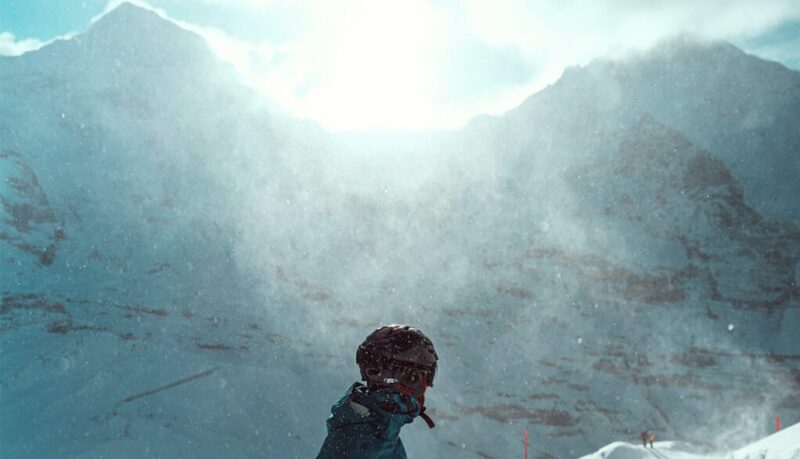
Memories of a ski bum
A Surfer Looks Back on His Season as a Ski Bum: Brian Sousa reflects on his season as a ski bum. Post-9/11 and after a breakup, Sousa and his friends decide they need a break. Cramming snowboards, skateboards, and camping gear into a car, they headed to Tahoe City. Sousa remembers months of chaos, cramming up to 20 young people into a single house.
The Feds Have Ordered National Parks to Remain "Open and Accessible": Interior Secretary Douglas Burgum has ordered national parks across the U.S. to remain fully operational despite significant staff reductions. Whilst some think this will lead to re-hiring staff, many question the feasibility of maintaining safety and services with a diminished workforce.
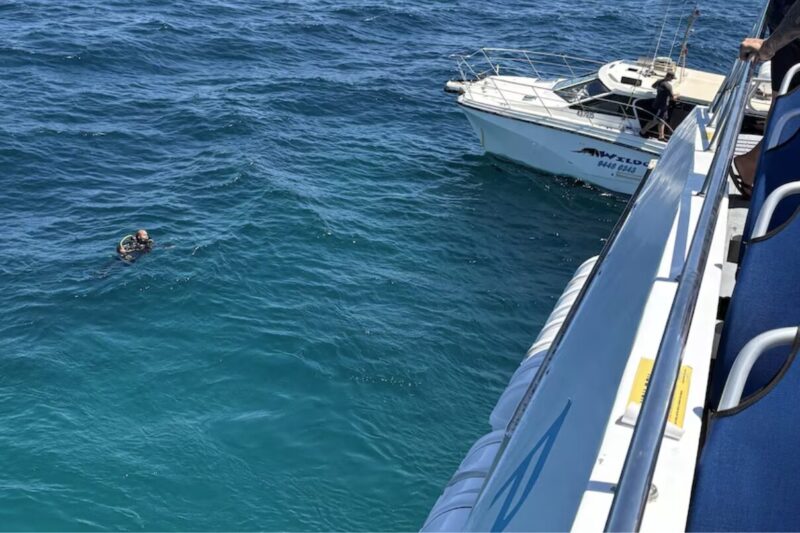
Left behind at sea
Divers Left Behind: In scenes reminiscent of the 2003 film Open Water (based on a true story), Ian Kensington and Ryan Chaudhry were diving off the coast of Perth with a dive school when they were left behind.
Approximately 35 minutes into their dive, Kensington and Chaudhry heard the boat's engine start. Quickly surfacing, they saw the boat heading back to shore. Despite their efforts to signal for help by waving, shouting, and inflating a buoy, the boat did not return. Stranded and fearing for their lives, the brothers discarded non-essential equipment and inflated their life jackets to conserve energy. After an hour in the water, a ferry rescued them.
Adam Ondra Attempts The World’s Hardest Boulder Problem: Czech climber Adam Ondra is touring the boulders of France’s Fontainebleau forest. His biggest challenge is Imothep Assis. He believes the problem is "possibly a 9A+ (V18) from the sit start." Nobody has achieved such a difficult bouldering grade.
A deadly gust of wind
The Balloon That Fell From the Sky: Nick Davidson recounts the harrowing events of the 1995 Coupe Aéronautique Gordon Bennett, the world's oldest and most prestigious gas balloon race. American pilots Mike Wallace and Kevin Brielmann and their friends Alan Fraenckel and John Stuart-Jervis were among the competitors. After launching from Switzerland, winds carried their two balloons into Belarusian airspace. One balloon was forced to land, and Belarus detained its pilots. The other was shot down, killing both pilots.
One Hiker Dead, 33 Rescued at Lake Mead: One hiker died and 33 others required rescue because of extreme heat in Lake Mead National Park. The National Park Service temporarily closed two popular trails in the area.
On April 9, as temperatures soared, helicopters rescued five hikers and one deceased hiker. The following day, rescuers helped a school group of 28 hikers.
Imagine the entire Mediterranean Sea disappeared, leaving behind an empty, sun-baked salt plain stretching from Spain to the Middle East. Then imagine the Atlantic Ocean suddenly crashing through a narrow strip of land at such high speeds that it refills the entire sea in less than two years. It sounds like a scene from a sci-fi movie, but that is actually what researchers believe happened about five million years ago.
Known as the Zanclean Megaflood, it was the most colossal flood in history. Researchers studied geological features off southeastern Sicily to better understand how it occurred.
“The Zanclean Megaflood was an awe-inspiring natural phenomenon, with discharge rates and flow velocities dwarfing any other known floods,” said Aaron Micallef, lead author of the study. “Our research provides the most compelling evidence yet of this extraordinary event.”
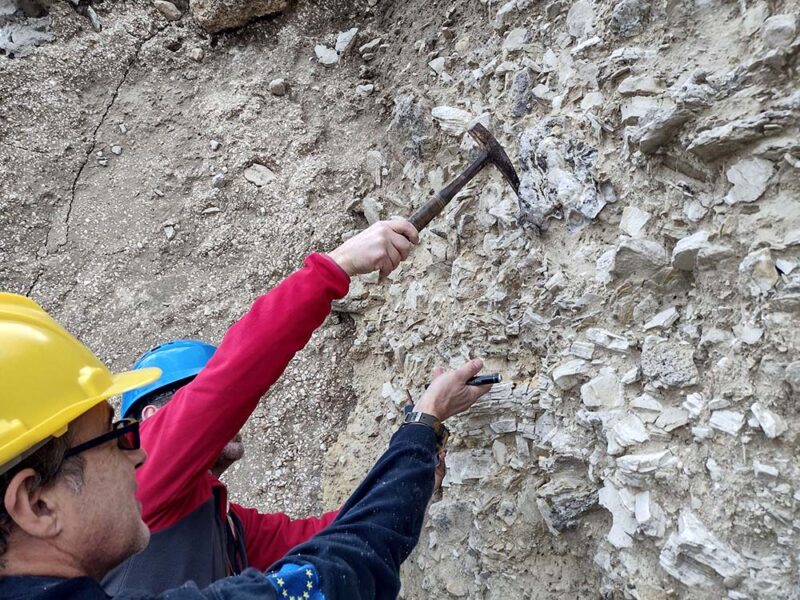
The original sea dries up
Around six million years ago, the Mediterranean Sea was cut off from the Atlantic. With no incoming water and a hot, dry climate, the sea transformed over time into parched salt flats. This so-called Messinian Salinity Crisis lasted for 600,000 years.
Previously, scientists thought the Mediterranean gradually refilled over 10,000 years. Now, it seems it happened within a couple of years, as water 1,000 times the volume of the Amazon River rampaged past the Strait of Gibraltar and into the salt-encrusted basin.
In 2009, researchers found an erosion channel running across the Strait of Gibraltar and deduced that a ginormous flood had created it. Some were skeptical due to lack of evidence. So various teams investigated further and found some evidence on the Sicily Sill.
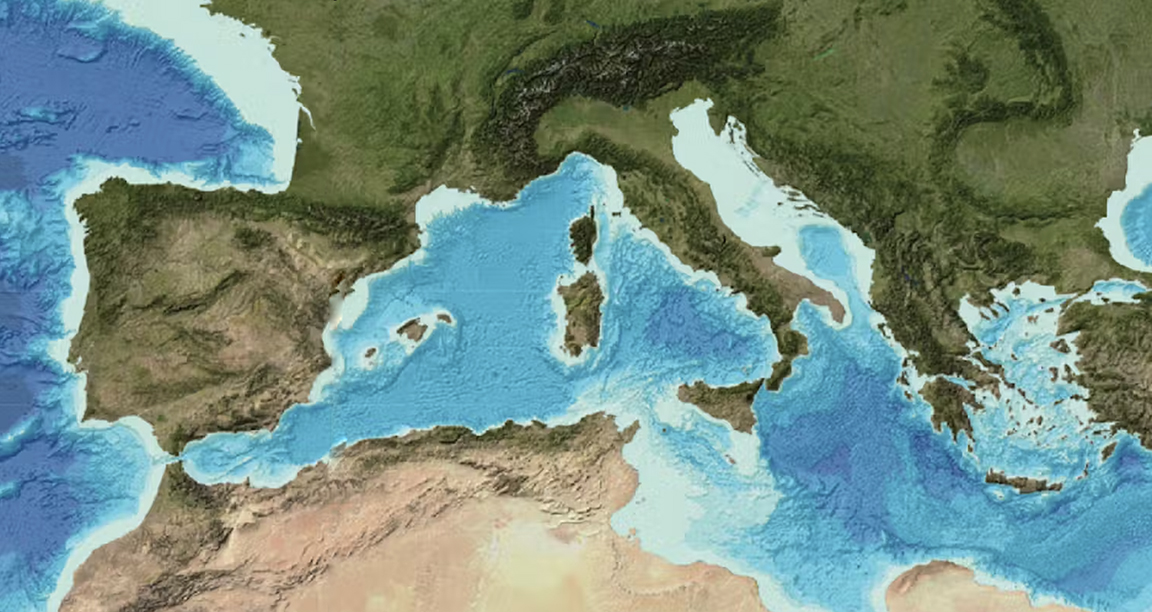
The Sicily Sill
The Sicily Sill was once a land bridge that separated the western and eastern Mediterranean basins. Studying 300 of its ridges, researchers found that the material that should have been on its slopes was on its ridgetops. Depositing this rock on top would have required a huge amount of force and speed.
The hills also have a shape similar to those in Washington State, which a megaflood created at the end of the last ice age.
Seismic reflection data also show a huge W-shaped underwater channel running into the eastern basin that supports the theory of this megaflood.
As a final step, the researchers created a computer simulation of the event. It revealed that water from the Atlantic surged through the narrow Strait of Gibraltar at a staggering 32 meters per second (115 kph).
Forget the latest Netflix and Amazon Prime offerings -- right now, one of the hottest shows on the planet is a 24/7 live-stream of moose slowly migrating through the Swedish wilderness.
Dubbed The Great Moose Migration, this unlikely sensation is exactly what it sounds like. Hours of footage show moose slowly plodding through forests and wading across rivers. Viewers can’t get enough.
Broadcast by SVT (Sweden’s public broadcaster), the event was first live-streamed in 2019. It was created as part of a wider "Slow TV" movement showing real-time footage of mundane activities; think knitting and train rides. Unlike other shows, there is no backing music, commentary, or editing. It is exactly what is caught on camera. What started as a quirky local experiment quickly became a hit. A million viewers tuned in during the first year. Last year, that had increased to nine million.
Deeply soothing
It seems there is something deeply soothing about watching the slow, lolloping animals wander through a pine forest along this ancestral route to their summer grazing spots. With 26 remote cameras and seven night cameras, the show cuts between the various spots to show what is happening. For large swathes of time, there may be no moose in the shot at all.
Despite this, some viewers watch for almost 24 hours a day. Others admit to setting up separate screens so that they can have it on in the background as they work. Mega-fan Ulla Malmgren said she had purposefully stocked up on snacks, pre-prepared meals, and coffee so that she could watch the 20-day migration.
Due to unseasonably warm weather, this year's migration started a week earlier than usual, but fans were ready. Some 77,000 are part of a Facebook group that provides updates on the migration. It is expected to last until May 4. With panoramic shots, long silences, and the occasional splash as a moose crosses a river, the live-stream is oddly hypnotic.

Long lulls
SVT puts out notifications on their app when a moose appears on camera, so viewers don’t miss the excitement. Sometimes, hours pass with nothing but swaying trees and chirping birds. Then, suddenly, a moose appears — and the chat explodes with excitement.
The live stream focuses on a key stretch of the annual route in northern Sweden, where the animals are funneled toward a few river crossings. There are around 300,000 moose in Sweden, but they are notoriously shy creatures.
“We actually don’t see them very often,” explained SVT project manager Johan Erhag. "I think that’s one reason why it has been so popular. You bring nature to everyone’s living room."
So if you’re looking for a way to de-stress, or just need a weirdly captivating distraction, consider tuning in. No plot, no dialogue, just moose.
Finnish duo Peyman, 42, and Sailor, 36, have decided to take a multi-disciplinary challenge to the extreme. Their "5athlon" expedition from Norway to South Africa has six stages and five different disciplines: skiing, running, cycling, swimming, and sailing. The project will take around two and a half years. And no, they don't use last names anywhere, identifying themselves simply as Peyman and Sailor or by their combined social media handle, Nomad's Trails.
They began on Jan. 27, 2025, and are still in the first stage of the journey: skiing and manhauling 795km from North Cape in Norway to Rovaniemi in Finland. From here, they will run across Finland to Helsinki and then swim to Tallinn in Estonia.
They cycle to Greece, then sail to Egypt. Finally, they once again hop on their bikes and cycle through Africa to South Africa.
Their only planned support is the safety boat during their swim. For the rest of the journey, they will travel alone. They hope to proceed by human power alone and will camp for most of the project. Along the way, they will regularly stop in towns to rest, repair gear, and pick up supplies. Within these stops, they accept that they may end up using public transport.
The same type of crazy
The adventurous pair met in Helsinki in late 2022 and quickly recognized that they “were the same type of crazy.” Both have done several solo expeditions. Peyman has spent eight years sleeping in a tent and pedaling 55,000km on three different continents. Sailor has traveled to 30 countries. Since their meeting, they have bikerafted across Finnish Lapland, cycled around Kenya, and pedaled from Helsinki to Berlin on a budget of just 300 euros.
They spent first week of their 5athlon getting used to hauling light 50-kilogram sleds across the snow. On several days, snowstorms trapped them in their tent. They started to hone their morning routine and gradually increased their mileage. By the end of the first week, they were covering around 12km per day and had made it to their first village -- Honningsvåg.

They had only planned to stay for a day or two, but ended up there for almost a week due to the weather. When they left Honningsvåg, they faced an unexpected issue: a lack of snow for the skis and sleds. For a few days, they dragged over the heather as best as they could. Then it snowed, and they had a different challenge: deep, soft snow. On some days, they only skied for four to five hours and covered less than two kilometers in that time.
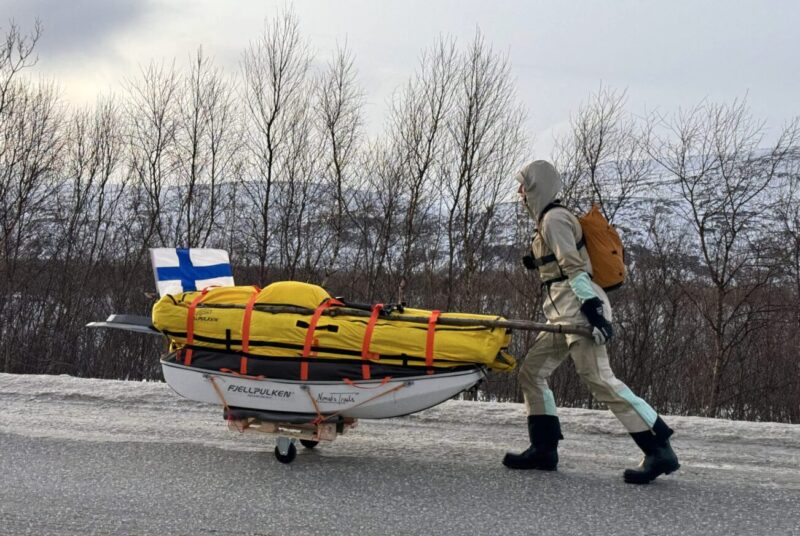
Finding solutions
By the end of February, it became clear that skis alone would not be sufficient to pull their sleds. They needed wheels. When they reached Lakselvi, they found a hardware store and built a cart with wheels for each sled.
Eight weeks into the trip, they had to adopt a new schedule. While Peyman continues to work remotely en route, editing their footage and creating all of their updates, Sailor has a position with the Finnish Coast Guard. For much of the expedition, she will fly home for two weeks, head out to sea, and then rejoin Peyman. While alone, Peyman will alternate between progressing and editing their material. Their YouTube channel has over 100,000 subscribers.
On March 23, Sailor re-joined just in time for the first big milestone of the challenge: crossing the Norwegian-Finnish border.
“It is once in a lifetime that you cross the border on skis,” she said.
One day into Finland, Sailor discovered that she was carrying norovirus, and Peyman contracted it too. After three days, they finally kept down food. On the fourth day, they strapped on their skis again.
They have around 300km to go until they reach Rovaniemi and the end of the first phase. The warmer temperatures continue to slow their progress. They are continuing to ski but may have to adapt if temperatures continue to rise.
High school student Matteo Paz has stunned the scientific community by identifying 1.5 million previously unknown objects in space.
By creating an artificial intelligence algorithm, Paz found a way to sift through vast amounts of space data and uncover millions of cosmic objects hiding in plain sight. His work didn’t just impress scientists; it earned him the top prize at the 2025 Regeneron Science Talent Search — a $250,000 award that goes to the most promising young scientists in the U.S.
It all started during Caltech’s Planet Finder Academy in 2022. The summer outreach program is designed to give high schoolers hands-on experience in astronomy, and Paz was hooked. The following year, he signed up for a six-week Caltech program that pairs students with campus mentors. Paz was assigned to Davy Kirkpatrick.
"The first day I talked to him, I said that I was considering working on a paper to come out of this, which is a much larger goal than six weeks," said Paz. "He didn't discourage me. He said, ‘OK, so let's talk about that.' He has allowed an unbridled learning experience. I think that's why I've grown so much as a scientist.”

How do you make sense of so much information?
With encouragement from Kirkpatrick, Paz tasked himself with a daunting challenge: How do you process and make sense of nearly 200 terabytes of space data gathered by NASA’s NEOWISE (Near-Earth Object Wide-field Infrared Survey Explorer) telescope?
NEOWISE has been scanning the sky for asteroids for over a decade. At the same time, it has captured data on other variable objects. According to Caltech, these are “hard-to-catch phenomena like quasars, exploding stars, and paired stars eclipsing each other.” The NASA telescope was able to detect the varying heat of these objects, but the sheer size of the dataset made it impossible for human astronomers to comb through them.
With almost 200 billion rows of data, going through it by hand was never an option, and Paz never considered it. The 18-year-old had a knack for AI, coding, and computer science. Combining this with his substantial math knowledge (he has been studying advanced undergraduate math for the last few years), he created an AI model to sift through the data for him.

Matteo Paz/Society for Science
Machine learning
In the short six-week program, he began using machine learning to make an AI model that could recognize patterns in the infrared data — subtle signals that might indicate the presence of cosmic objects. Kirkpatrick acted as an astronomy consultant and helped him interpret the data.
The duo kept working on the project after the six weeks were up. By 2024, Paz was mentoring other high school students on the subject. Now the model can tear through the raw data from the NEOWISE telescope. They have made a jaw-dropping 1.5 million discoveries, each a potential new clue about the structure and history of our universe.
Since winning the 2025 Regeneron Science Talent Search, Paz hasn’t slowed down. He and Kirkpatrick hope to publish the complete catalog of newly found objects this year. Paz has also secured his first paid job. He is working at Caltech, continuing his research and collaborating with astrophysicists on how to scale his AI system for even bigger projects.
Over a century after the Titanic sank, ground-breaking 3D scans have unveiled new insights into the ship's final moments. Using over 700,000 images, researchers have created a digital twin of the famous wreck.
Because it lies 3,800m down on the floor of the Atlantic, the only practical way to study the wreck is with underwater robots. Until now, this has meant researchers can only see a small section of the ship at a time. The new 3D replica shows the ship in full.
"It's like a crime scene," Titanic analyst Parks Stephenson told the BBC. "You need to see what the evidence is, in the context of where it is. And having a comprehensive view of the entirety of the wreck site is key to understanding what happened here."
The two sections of the ship lie 600m apart, and there are stark differences. While the bow of the ship rests upright on the seafloor with relatively little damage, the stern is a crumpled piece of metal. Researchers think most of the damage occurred as it crashed into the sea floor.

A glancing blow
Combining the 3D scans with computer modeling, the team created a simulation of the collision with the iceberg. Rather than a huge, powerful collision, researchers suggest that the ship only made “a glancing blow against the iceberg.” So instead of a huge gaping hole, the collision created a series of small, A4-sized punctures across one side of the hull.
Famously touted as unsinkable, the Titanic was designed to stay afloat even if four of its watertight compartments filled with water. The problem is that the small punctures stretched across six compartments.
“Those small holes are across a long length of the ship, so the flood water comes slowly but surely into all of those holes, and then eventually the compartments are flooded over the top, and the Titanic sinks,” explained naval architect Simon Benson.

Brave engineers
The scans also shed light on the bravery of the ship's crew. Images reveal that steam was still moving through the boilers and generating electricity as the ship sank. This supports eyewitness accounts that Joseph Bell and a team of engineers remained at their posts in the boiler rooms. Their actions likely saved hundreds of lives.
"They kept the lights and the power working to the end to give the crew time to launch the lifeboats safely with some light instead of in absolute darkness," said Stephenson.
Another revelation concerns First Officer William Murdoch. In James Cameron's 1997 film, he is shown shooting a passenger and then himself. New evidence from the scans indicates that this is completely untrue. A lifeboat davit at his evacuation station was found in the upright position, suggesting he was preparing to launch another lifeboat. This supports testimonies from Second Officer Charles Lightoller and other survivors that he was swept away while helping others.
The state-of-the-art 3D scan has been produced for the new National Geographic documentary Titanic: The Digital Resurrection.
When we’re not outdoors, we get our adventure fix by exploring social media and the web. Here are some of the best adventure links we’ve discovered this week.
One Photographer’s Quest to Redefine the Shark: Underwater photographer Gerardo del Villar is trying to transform the public's perception of sharks. He's interacted with over 40 shark species, and through his photography, he wants to capture their diversity and importance. Del Villar describes how swimming with a nurse shark in 2005 sparked his commitment to shark conservation.
Our Ancestors Walked These Trails Hundreds of Years Ago: Many ancient routes that once connected communities have fallen into disrepair, but increasingly, people are working to revitalize them. From China's ancient Tea Horse Road in Yunnan to the Finnskogleden in Scandinavia and the Wadi Rum Trail in Jordan, these restored paths offer hikers a unique blend of natural beauty and cultural heritage.
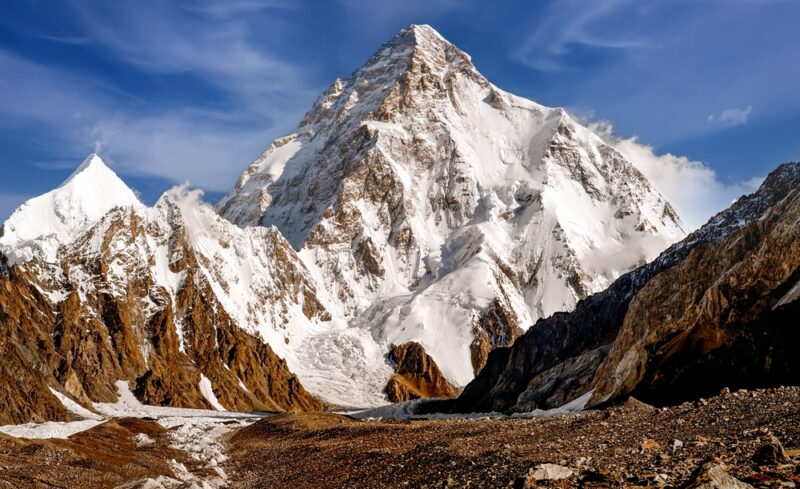
How K2 has changed
Is K2 Now Less Savage?: It's often called the Savage Mountain, but K2's reputation as the most difficult 8,000m peak may be in jeopardy. It is renowned for its technical difficulty, unpredictable weather, and high fatality rate. Historically, one death has occurred for every four successful summits.
But since 2021, the number of people summiting has rapidly increased as the guided crowds -- once only on Everest -- have descended on K2.
I Survived Over 12 Hours Beneath the Snow: Txema Trull recounts his harrowing experience in Argentina's Las Leñas backcountry. After a cornice collapse triggered a massive avalanche, two meters of snow buried Trull and his partner in their tent.
As his breathing got shallower, Trull had one thought as he slipped into unconsciousness: They were going to die. His next memory is being bundled into an ambulance. He survived 12 hours until rescuers found them. Tenas was not so lucky.
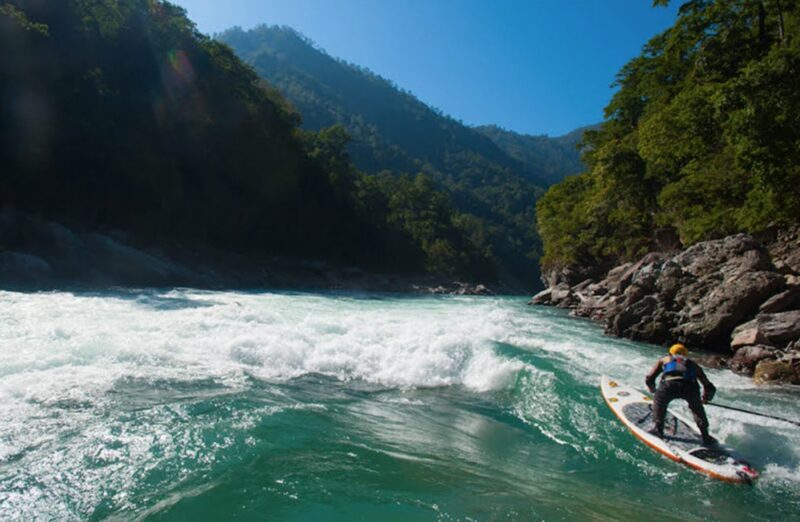
Paddling sacred rivers
Paddling the Rivers of Mount Kailash: Guy Baker recounts his 35-year mission to descend all four of Mount Kailash's sacred rivers.
Spanning decades, his journey began in 1990 when he paddled the Indus through Pakistan’s Rondu Gorges. In 2005, he faced the narrow, high-walled canyons of the Sutlej in Tibet. He calls the Karnali in Nepal "one of the finest rivers I’ve paddled." He descended it on three separate occasions, including once on a stand-up paddleboard.
Finally, in 2024, Baker paddled the Brahmaputra, starting with gently flowing waters on the Tibetan Plateau and culminating in monumental rapids in Arunachal Pradesh.
Beyond the Trails: Follow a group of riders as they explore Valais, Switzerland, host of the 2025 UCI Mountain Bike World Championships.
From high-altitude rides through Aletsch Arena’s glacier trails to Bellwald’s jump parks and Val d’Anniviers alpine riding, there is something for every rider.
Focusing on the positive
When Were Surfers Happiest?: The comment sections on various surfing websites paint the surfing community as a pretty unhappy lot. So Sam George wanted to figure out when surfers were the happiest.
Southern California in the 1950s stands out. That generation of surfers was changing the face of the sport, and photos suggest a dreamy, happy period. Others think peak happiness may have come in the 1960s when pop culture put surfing in the spotlight.
Is Complacency the Greatest Risk?: The Flatirons in Boulder, Colorado, feature many climbing routes. People have scrambled on them without ropes for over a century, but in the last decade, their popularity has skyrocketed. While the routes are often perceived as low-risk because of their moderate grades, there have been several fatalities and injuries.
Simon Testa analyzes data on the most popular scrambling lines and their accident and mortality risk. He questions whether familiarity is leading to complacency.



